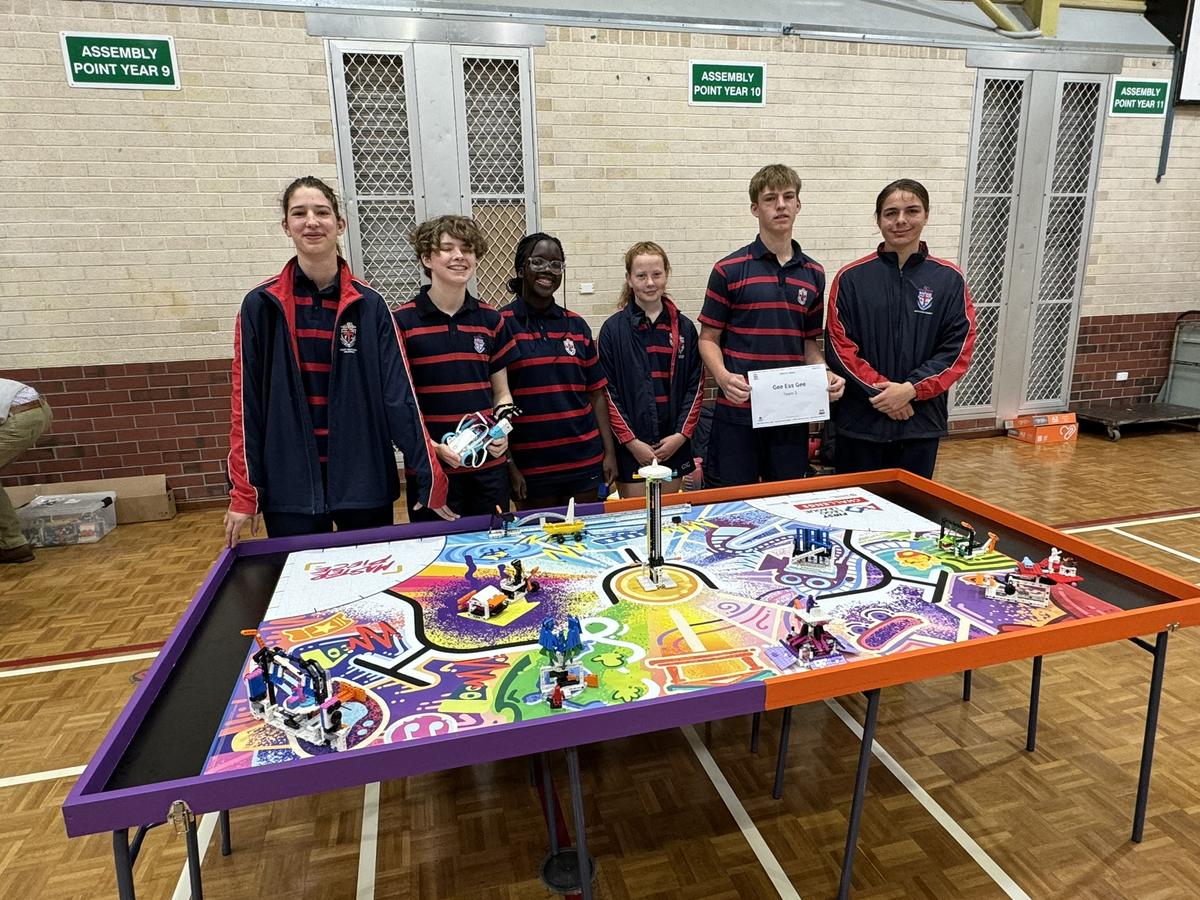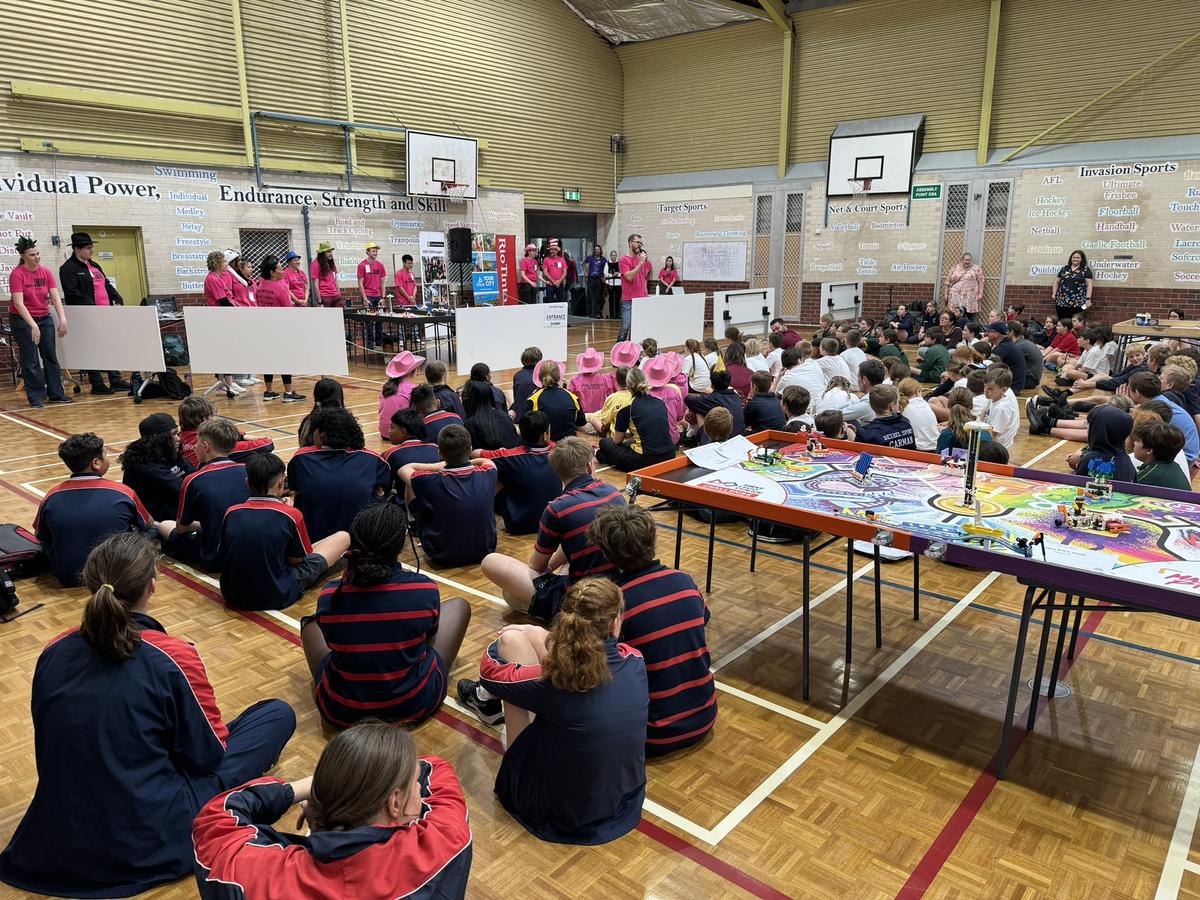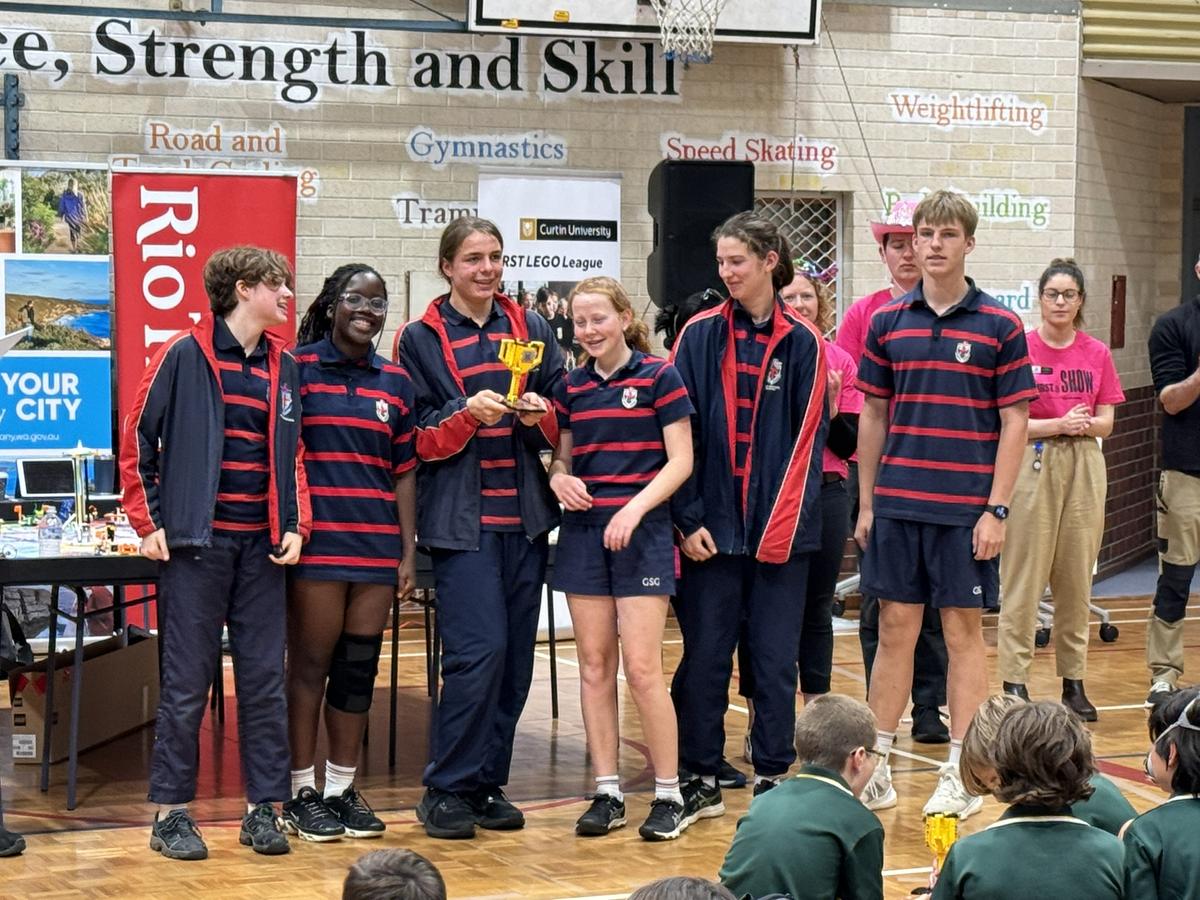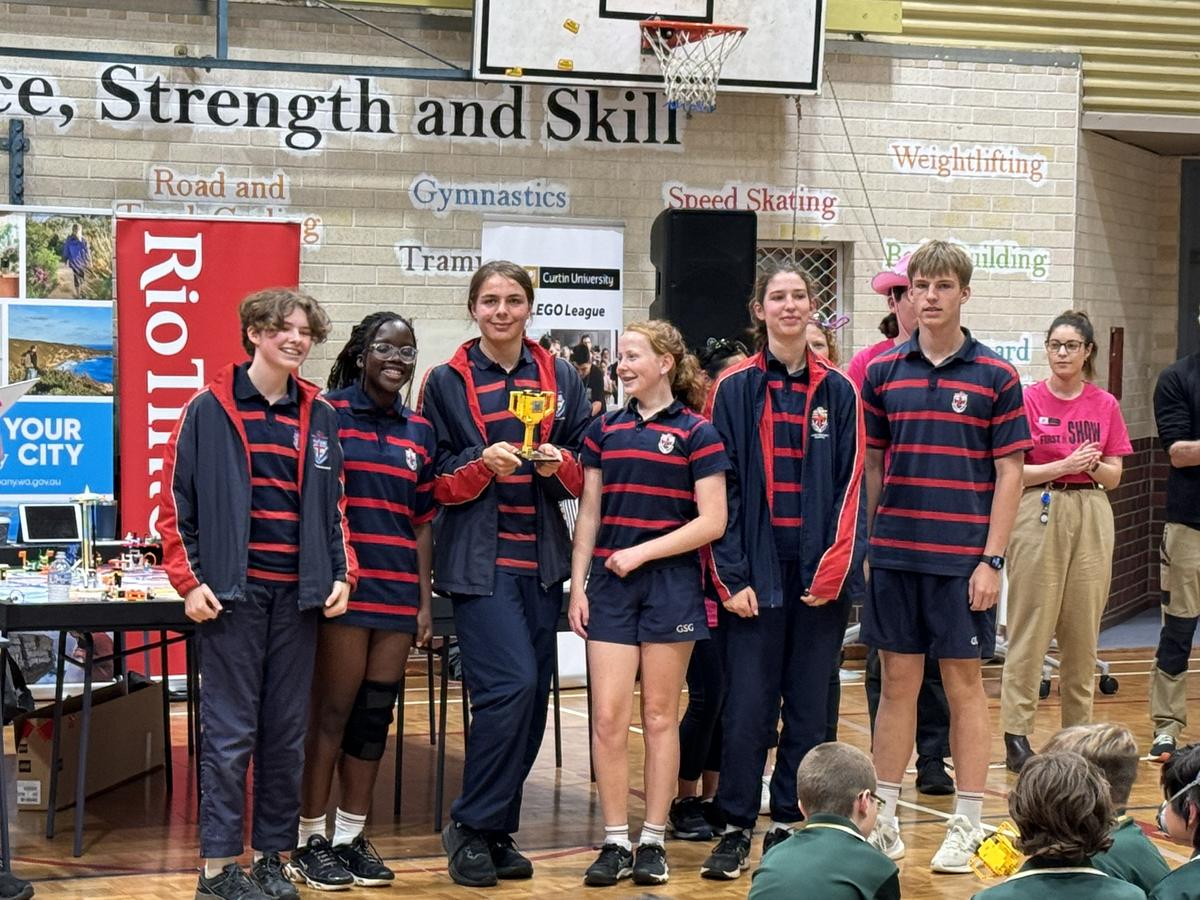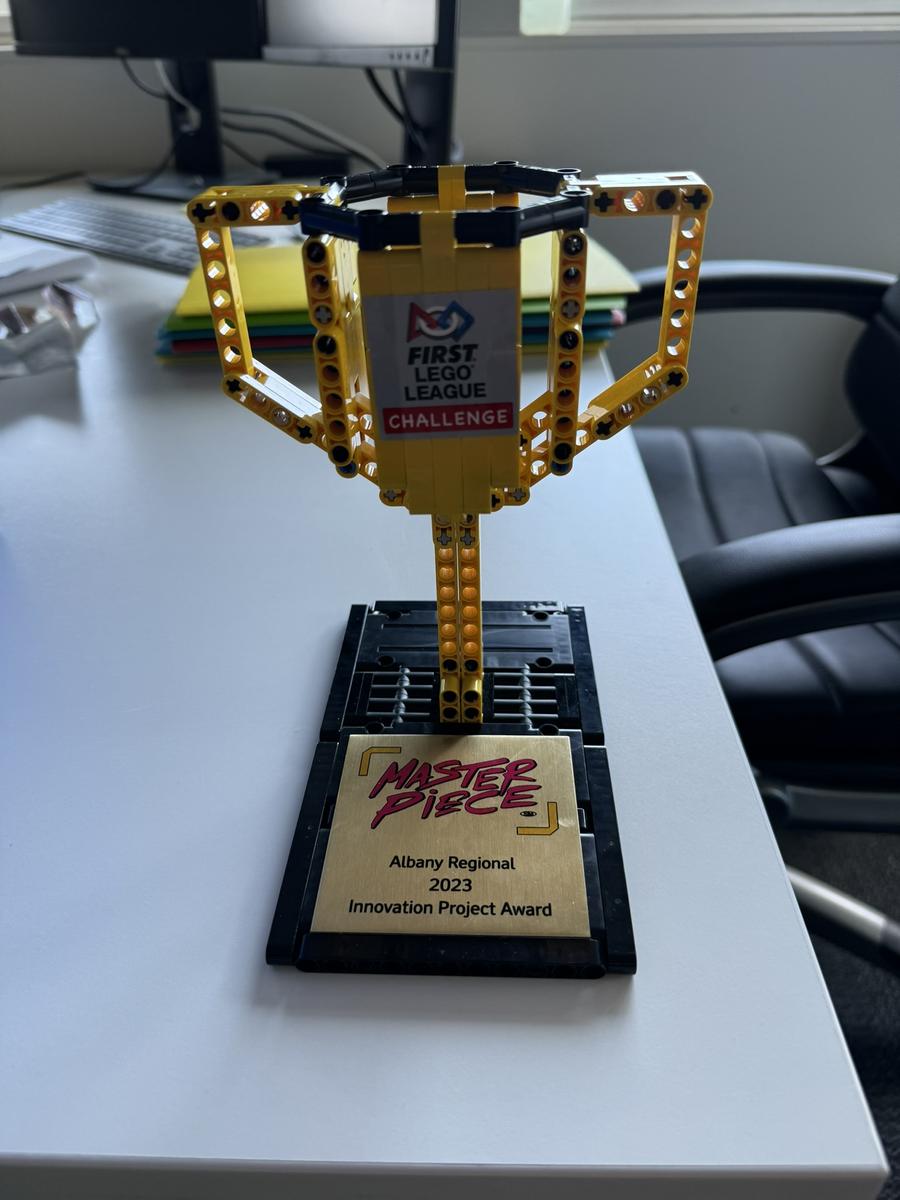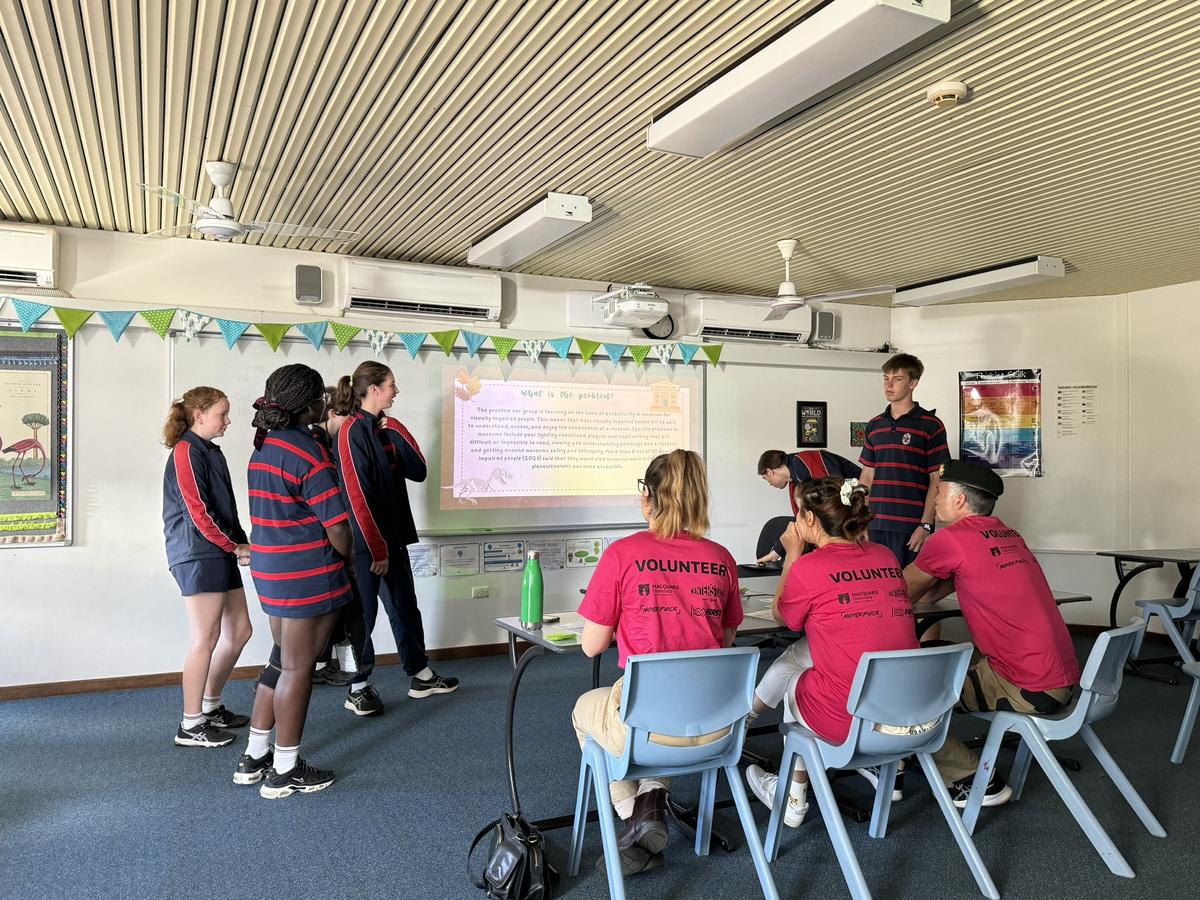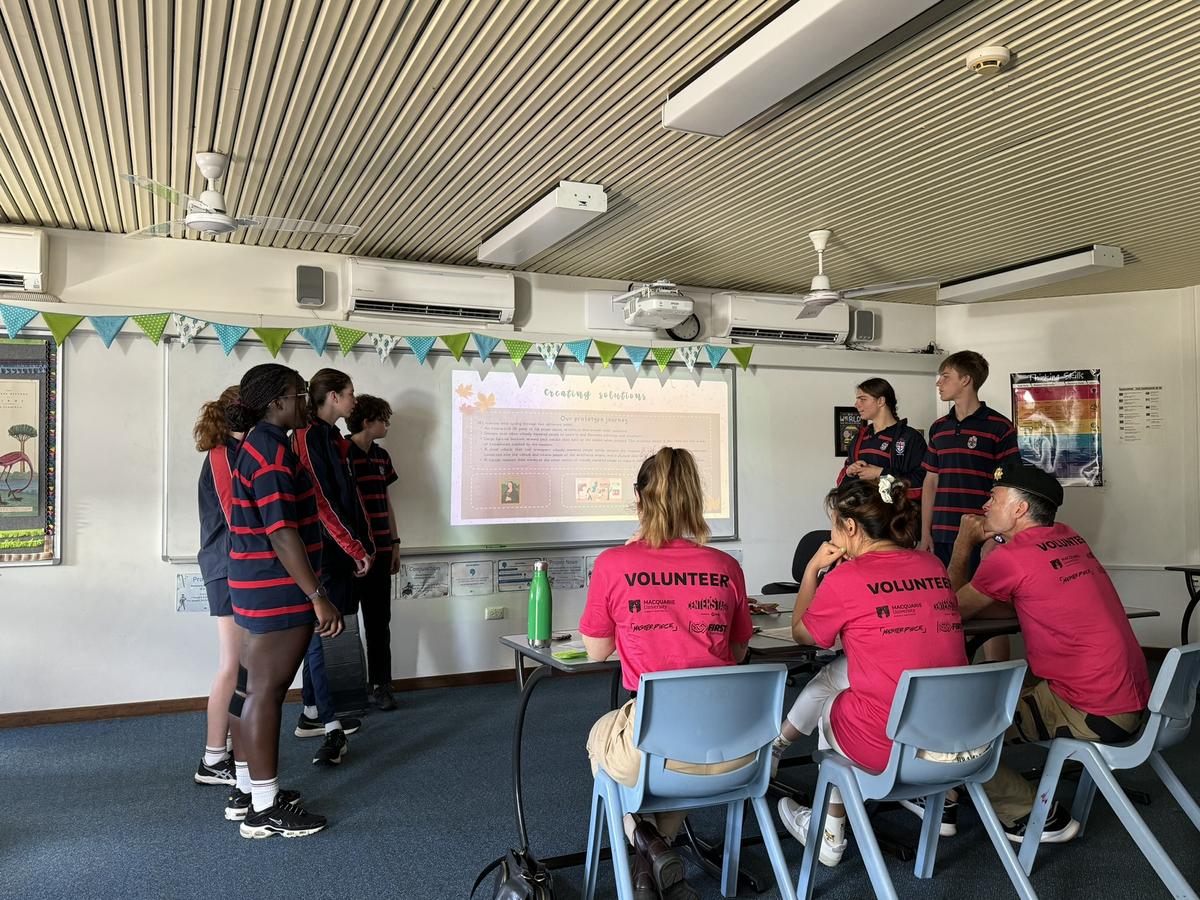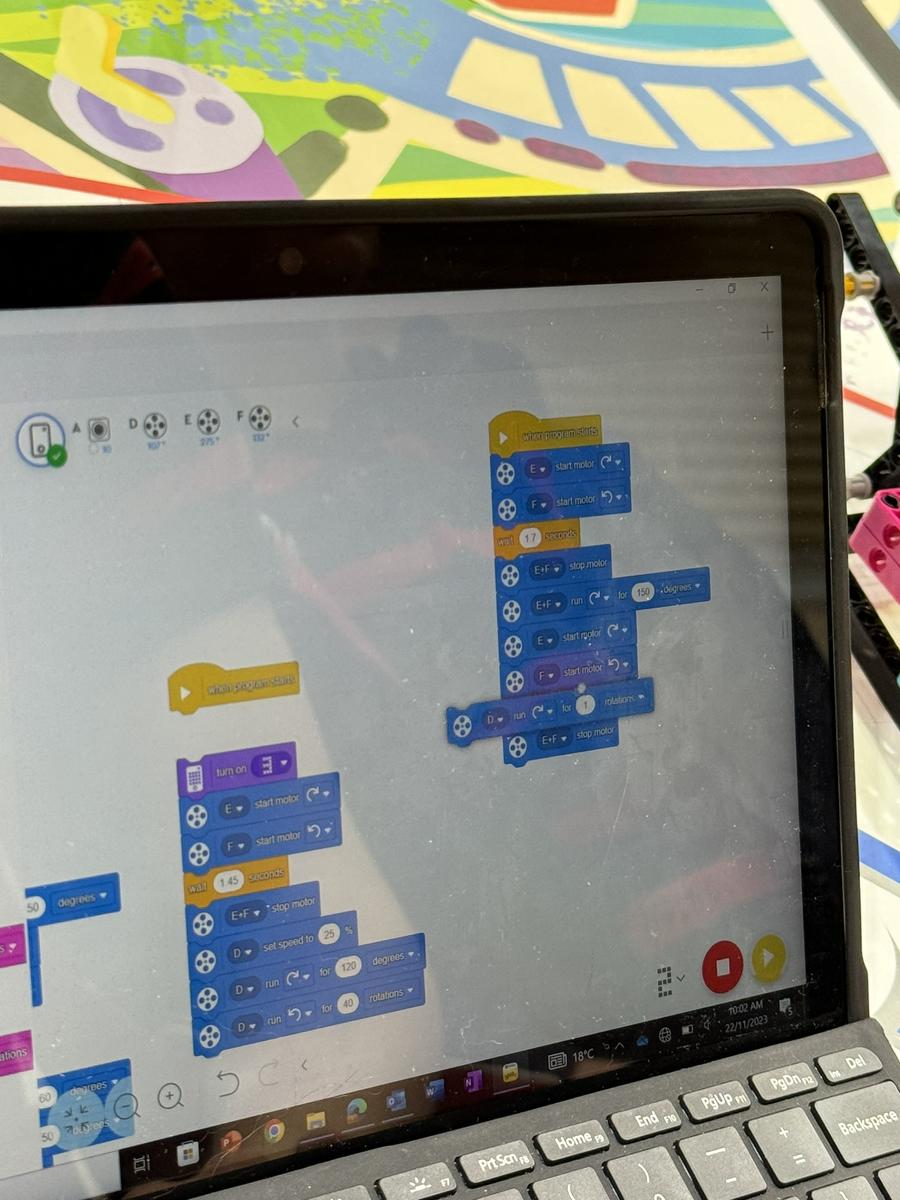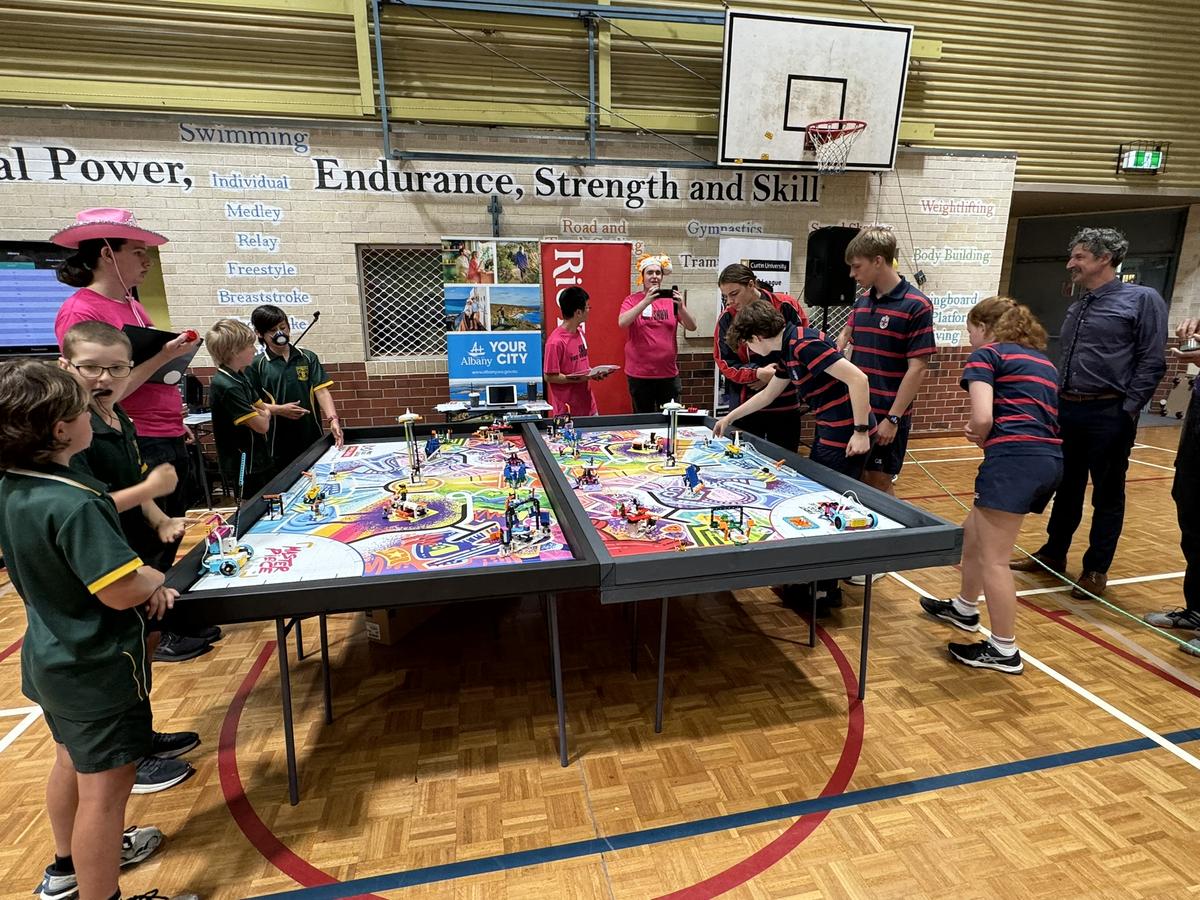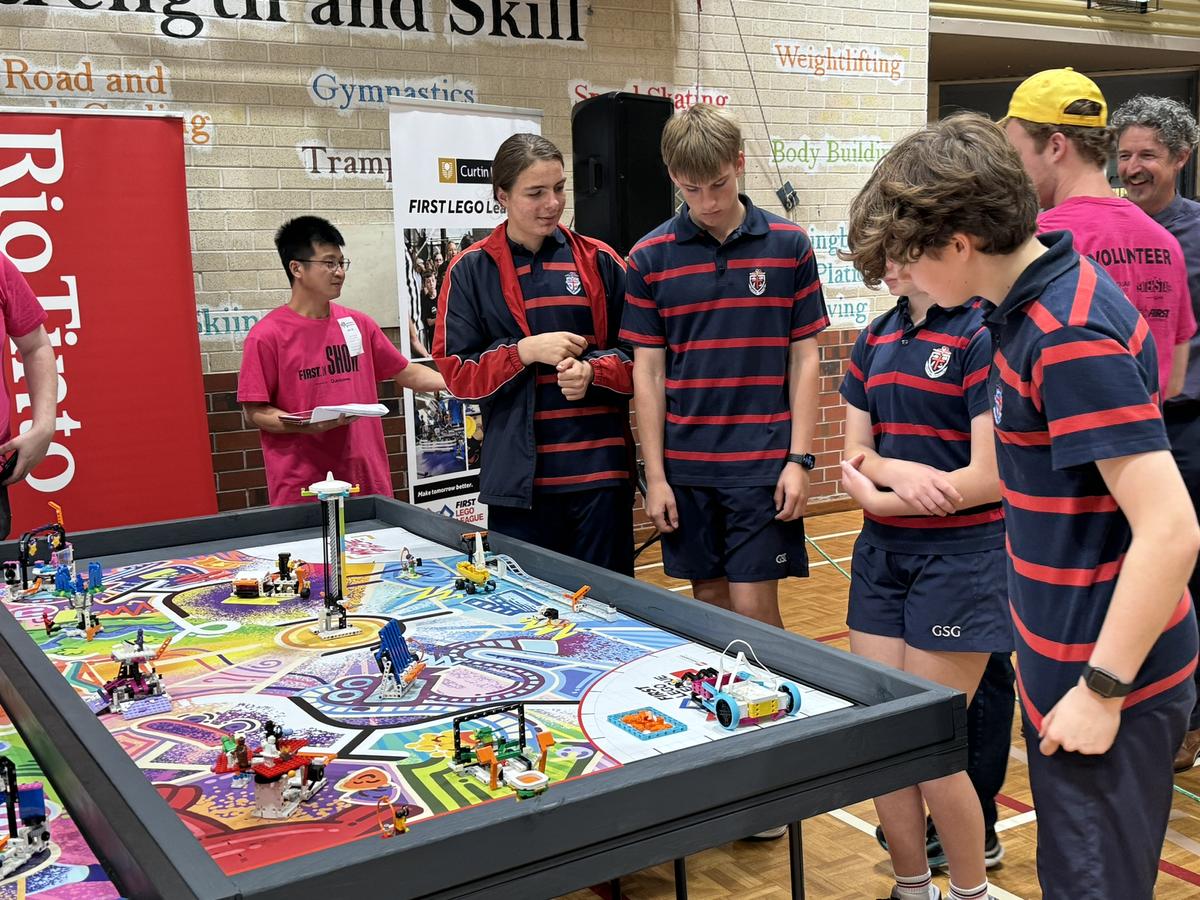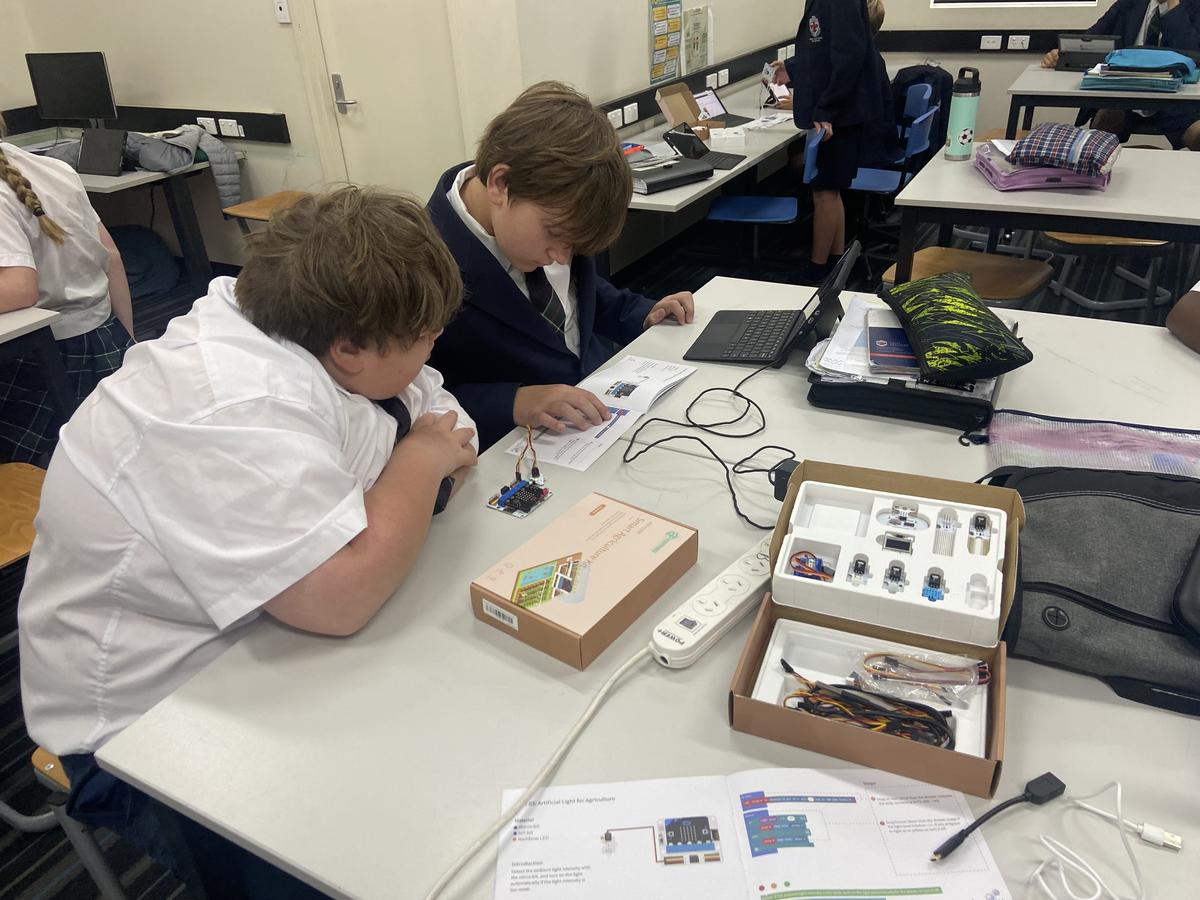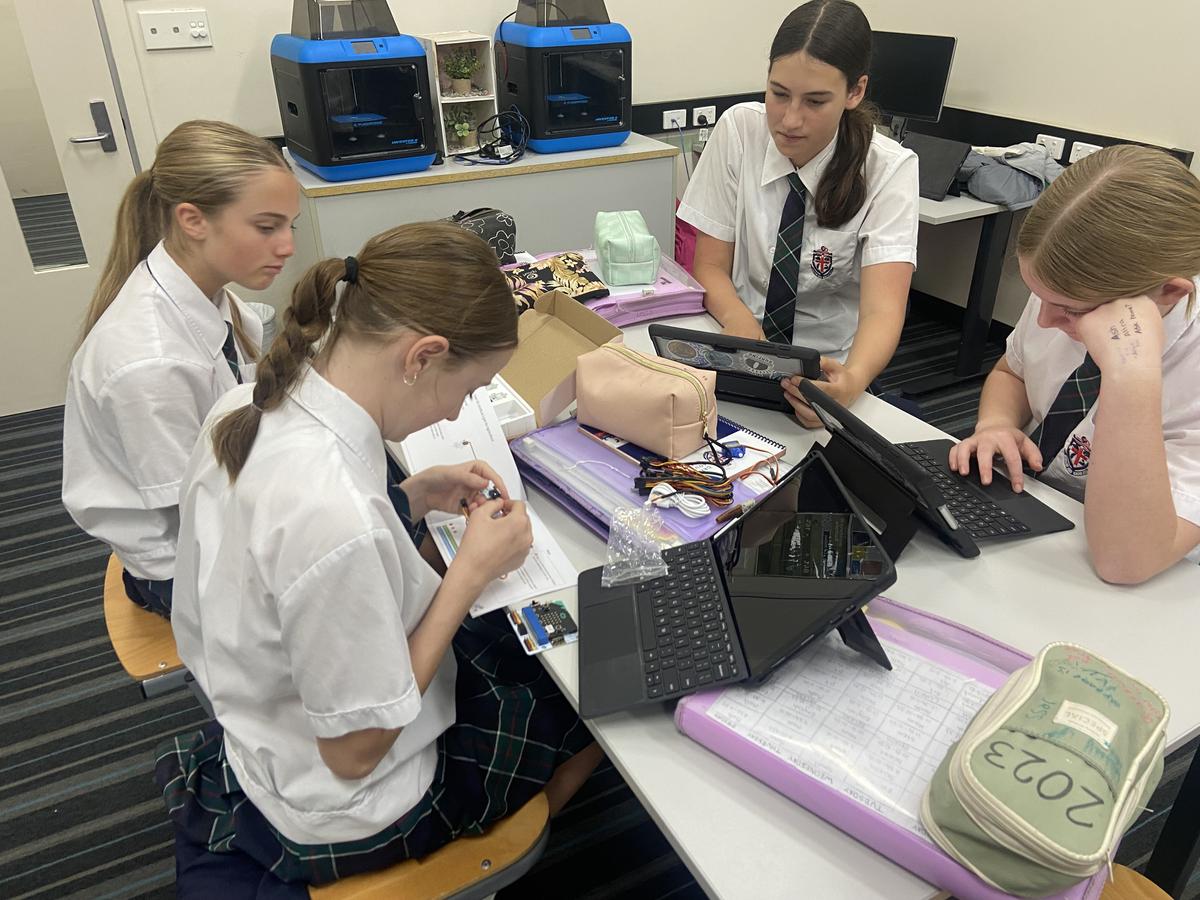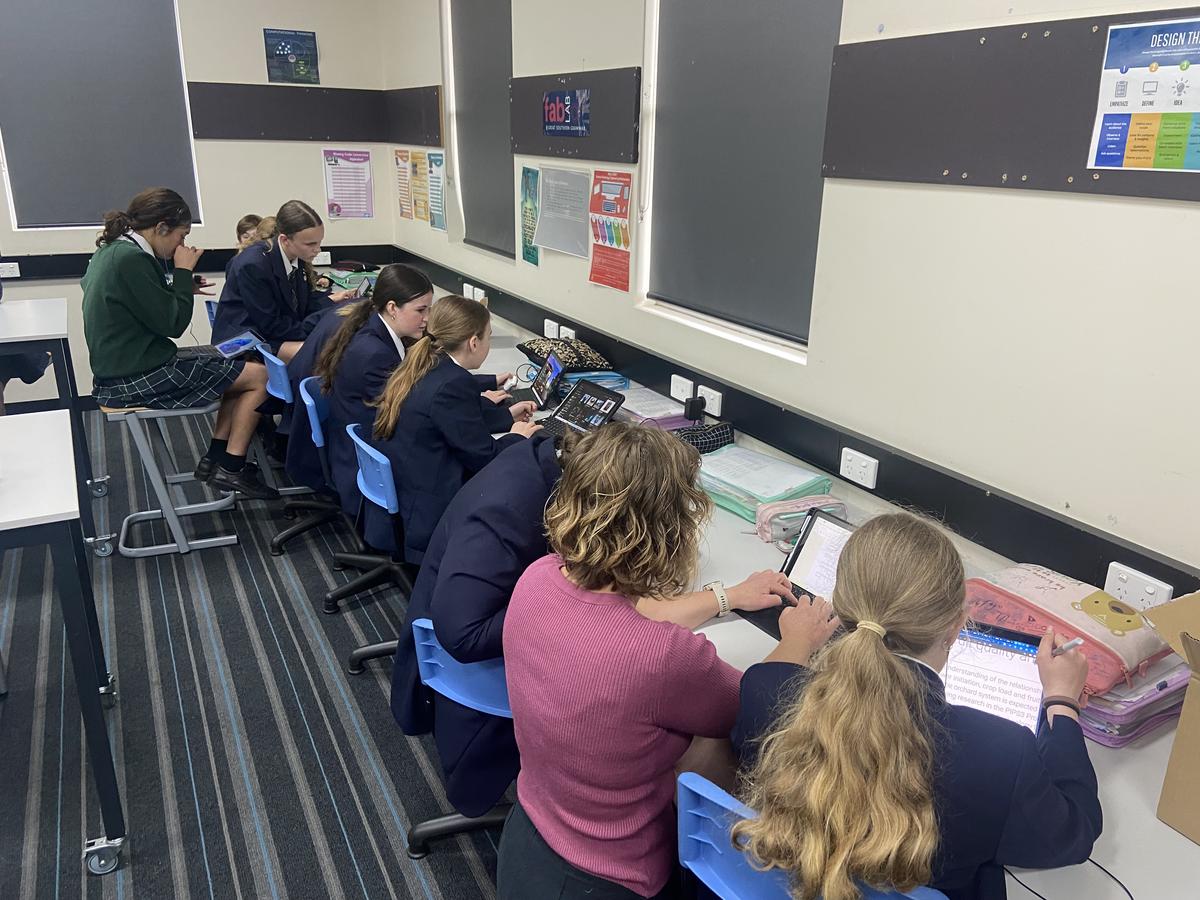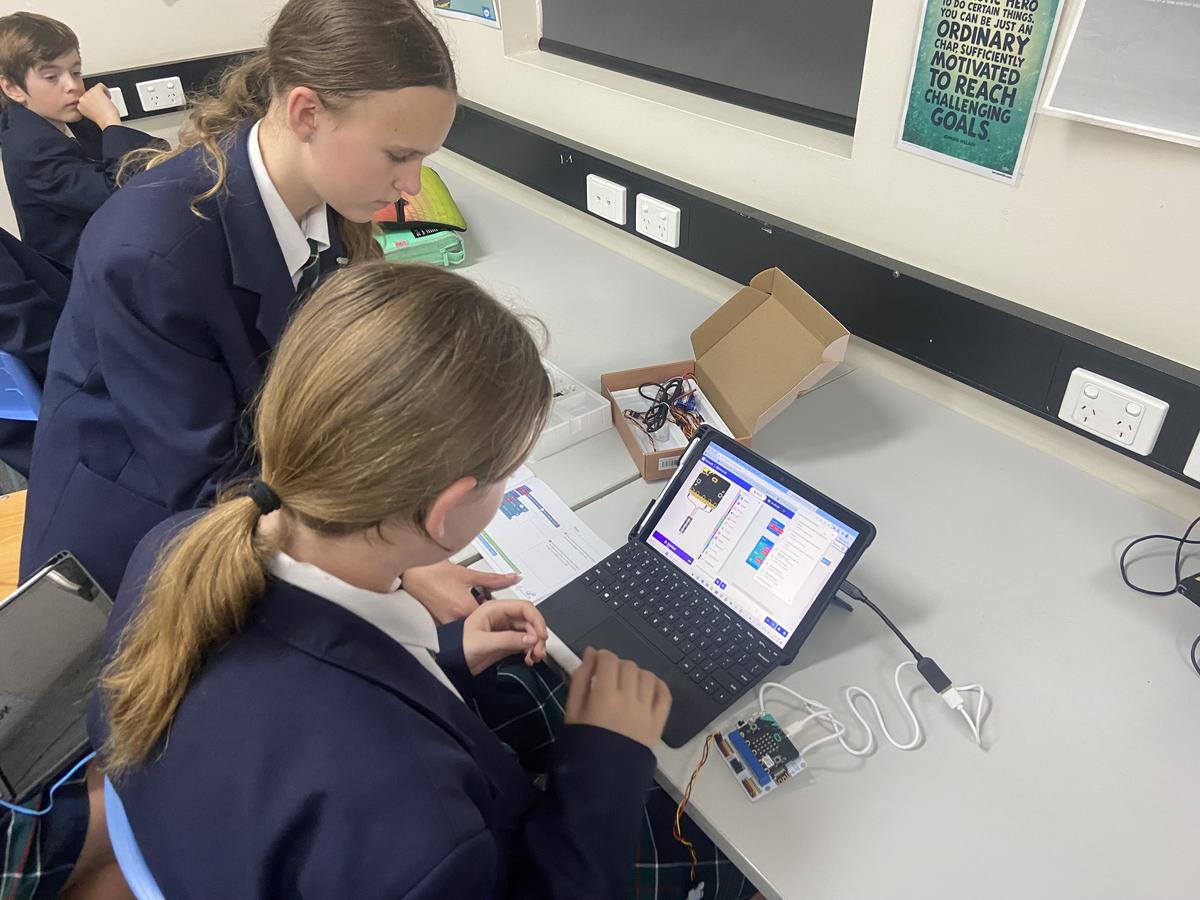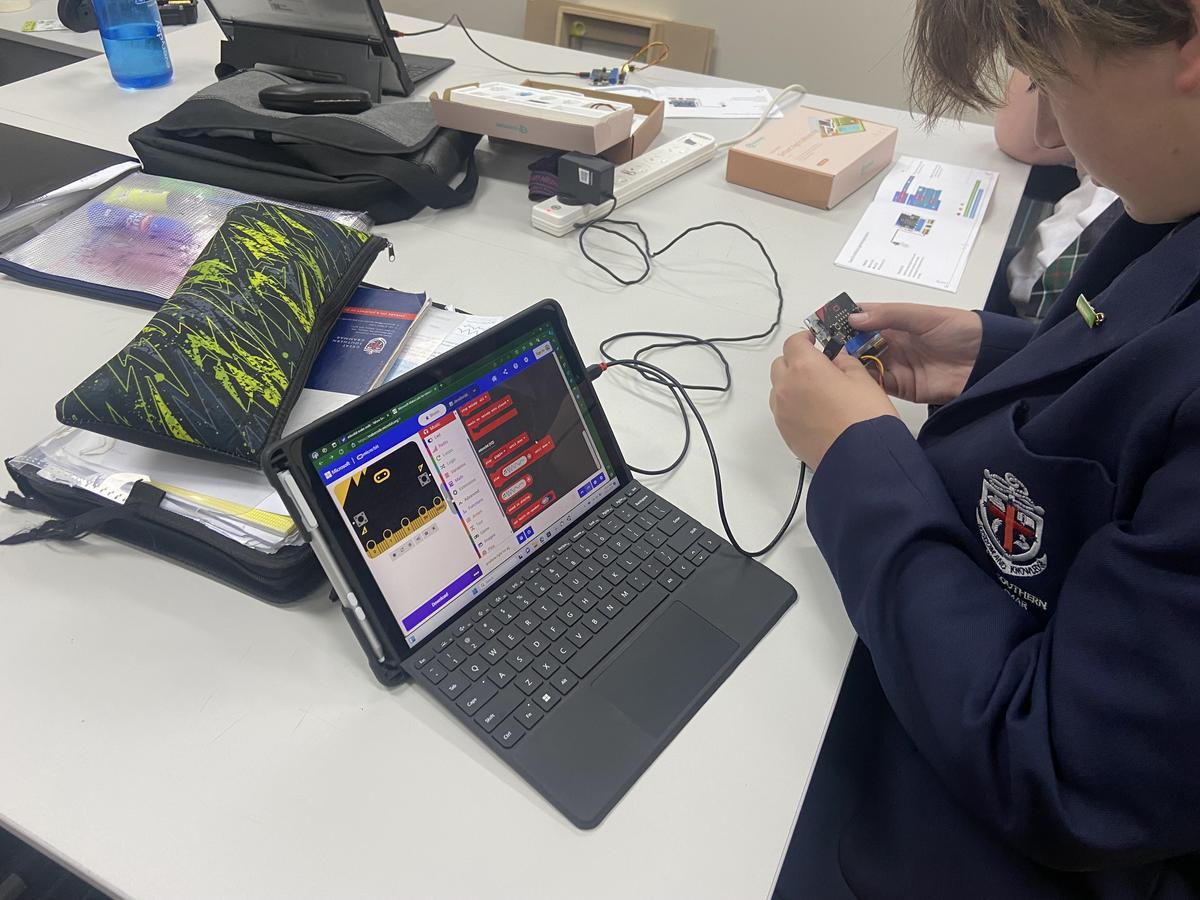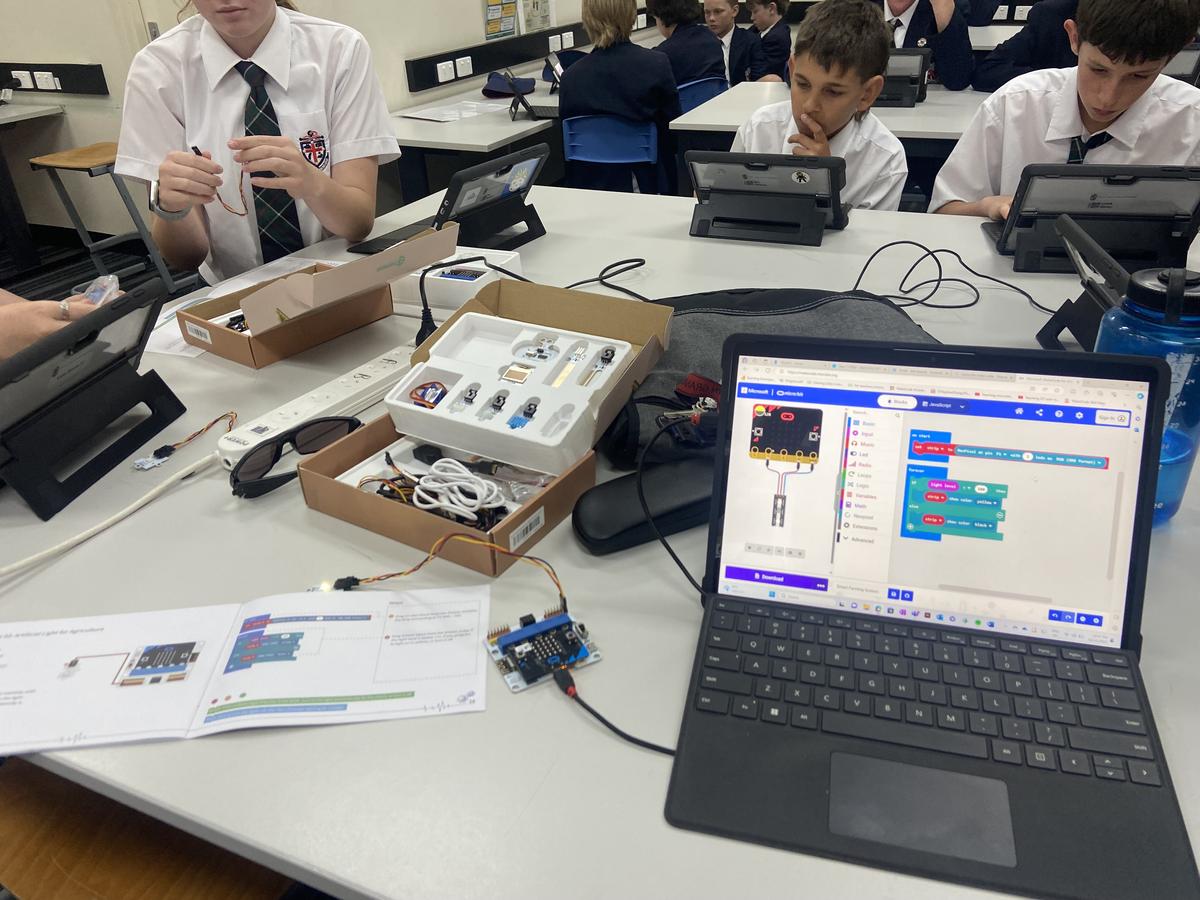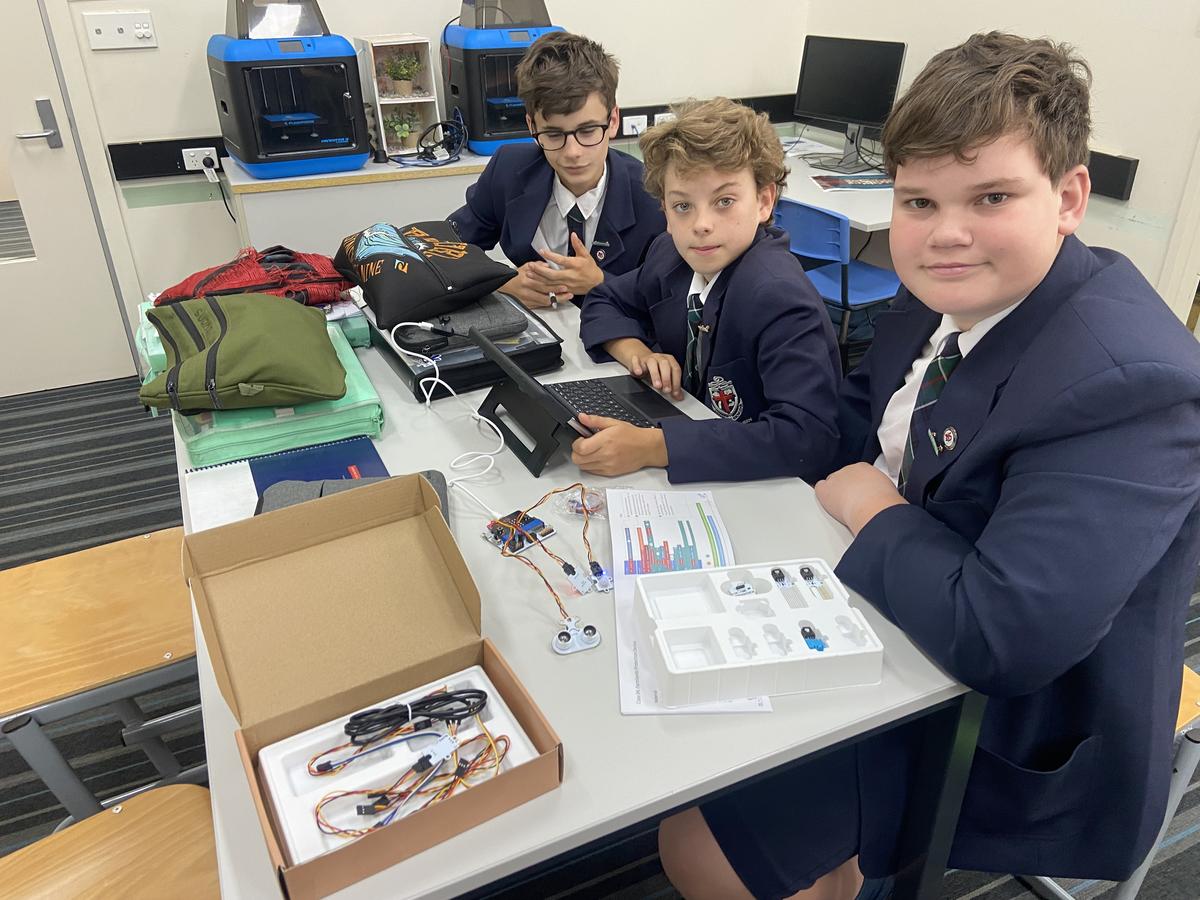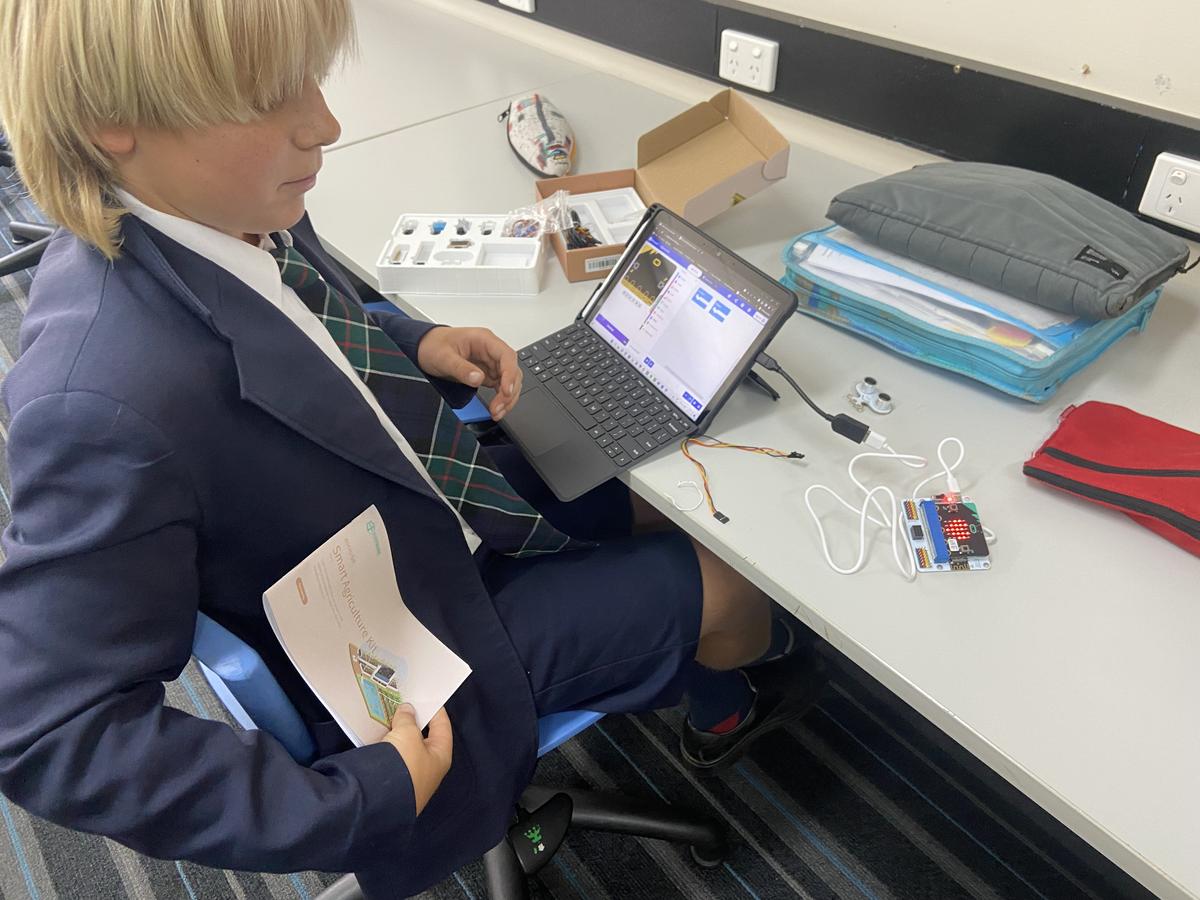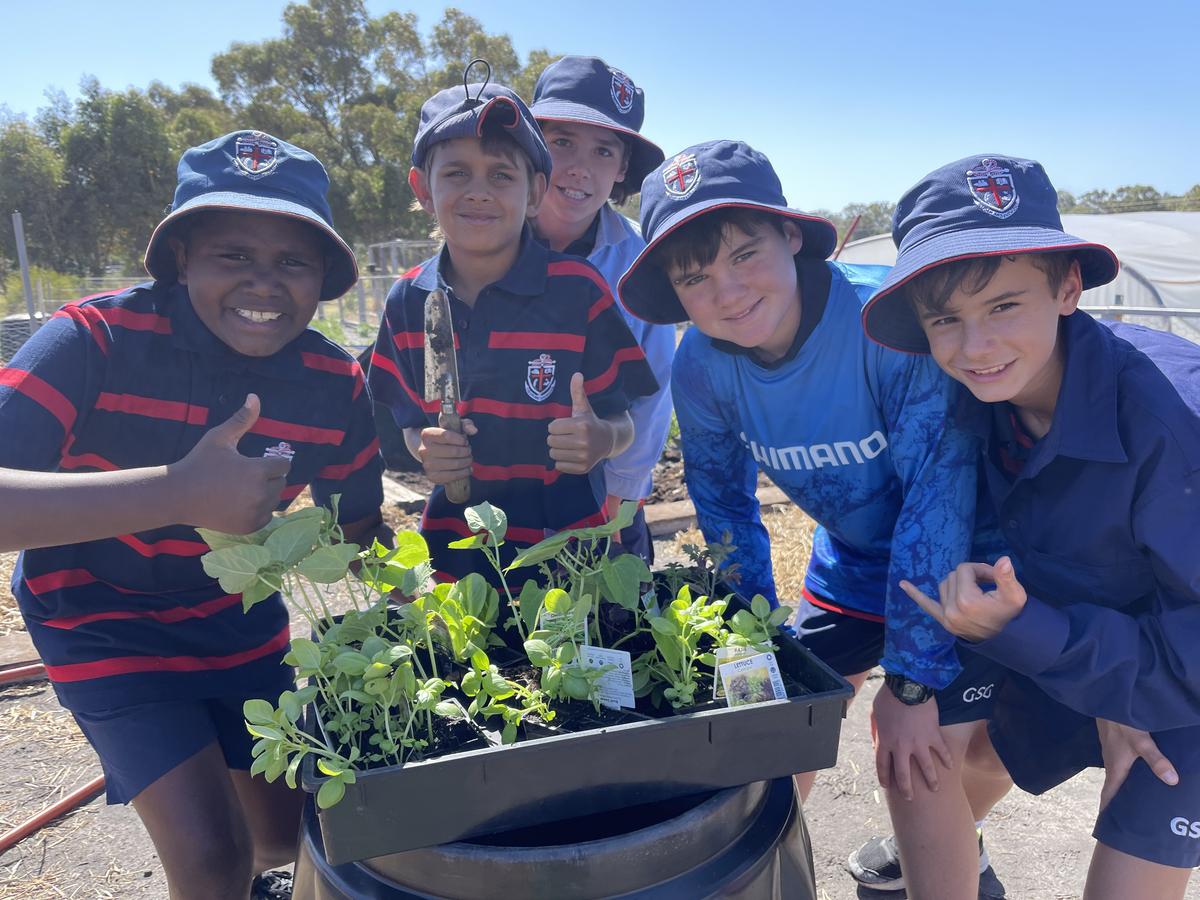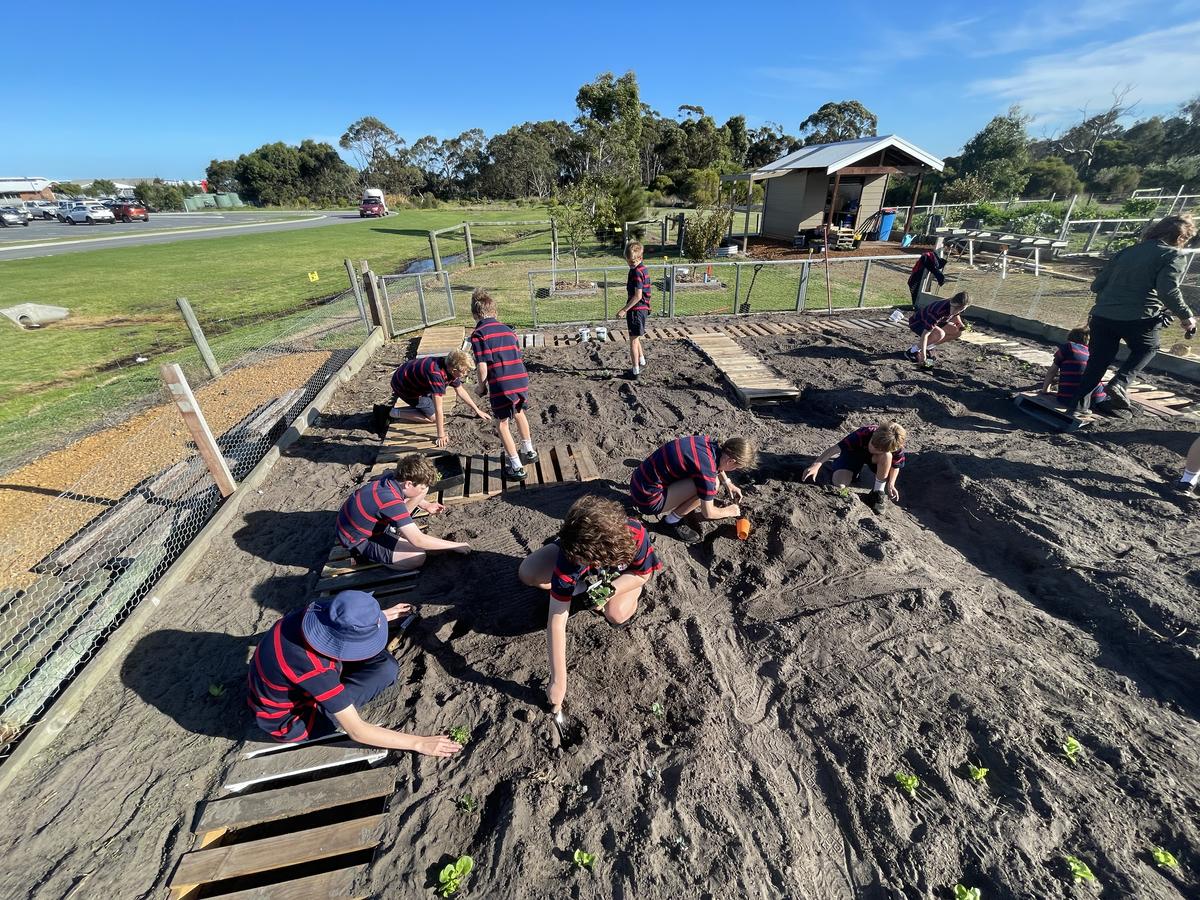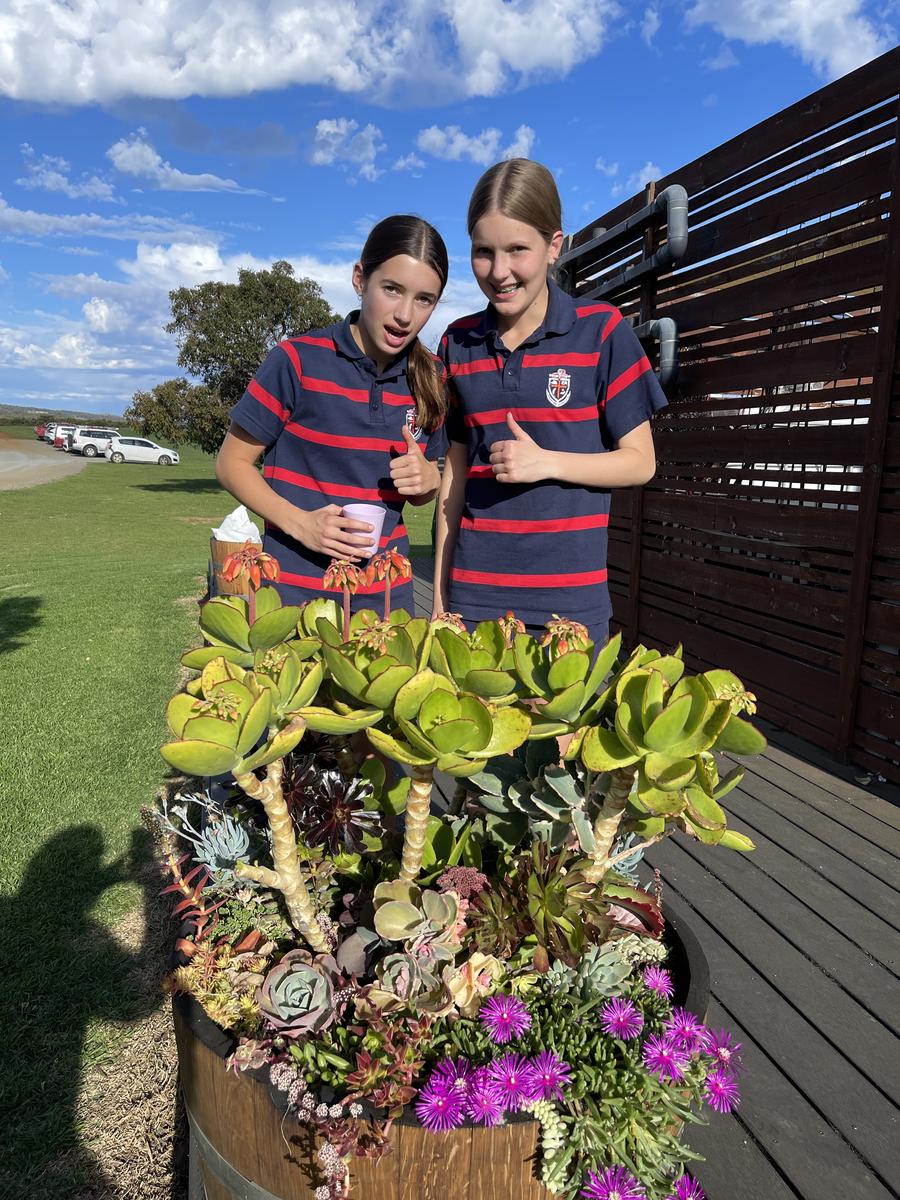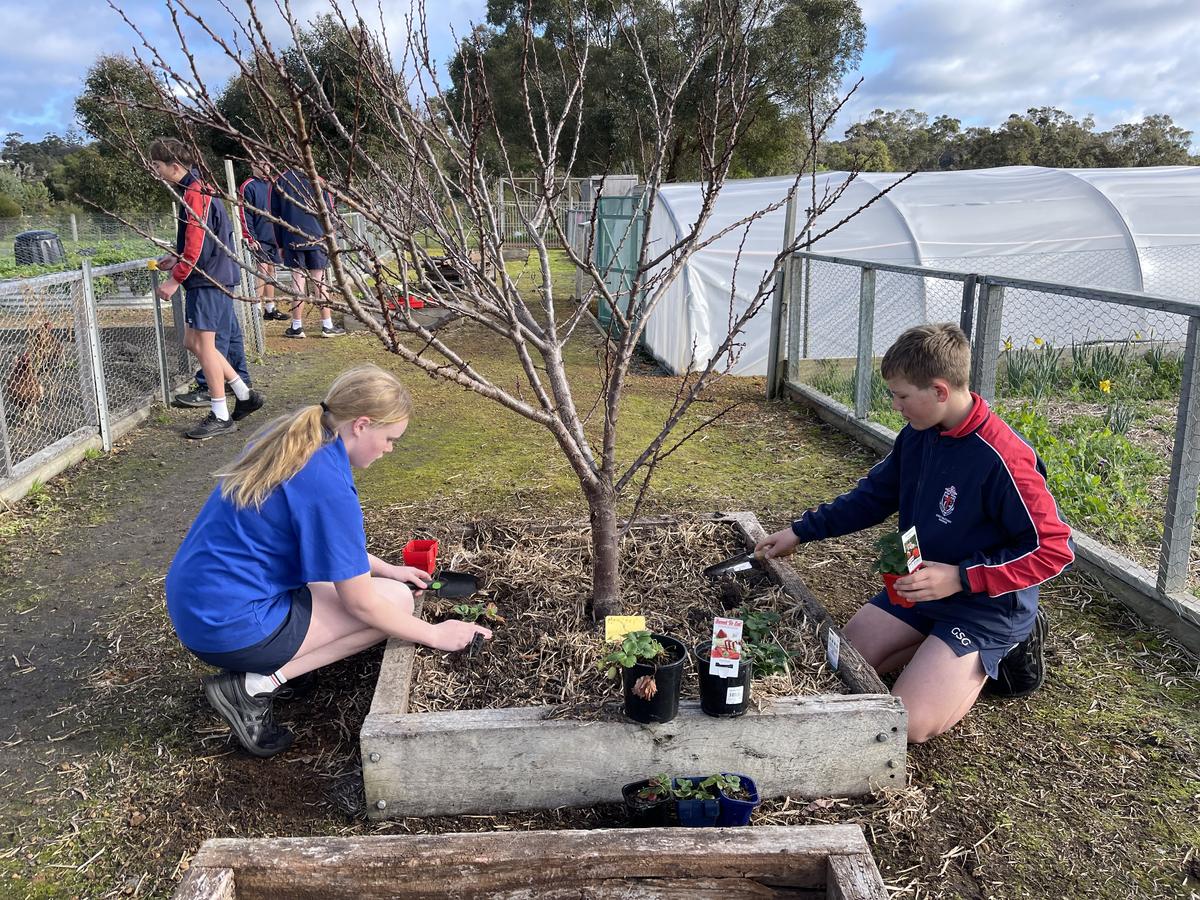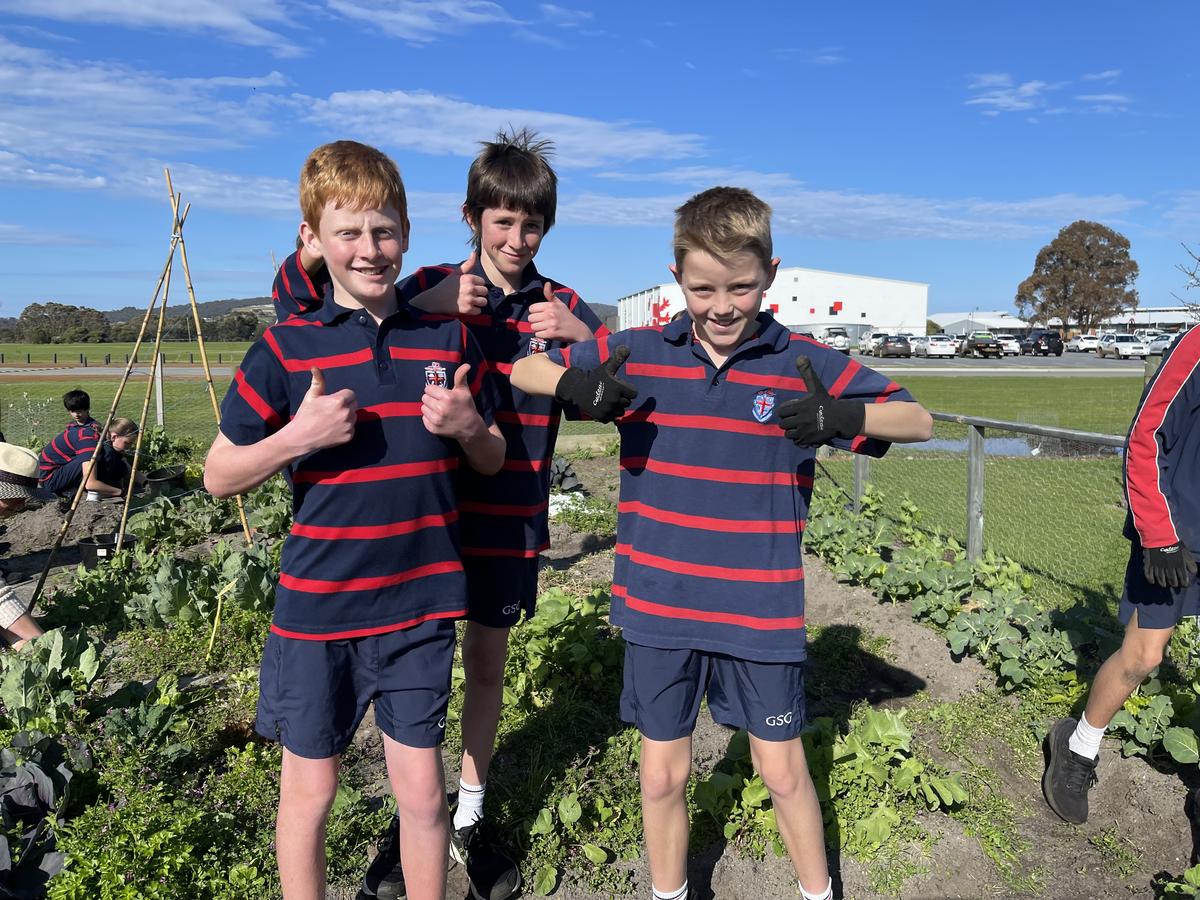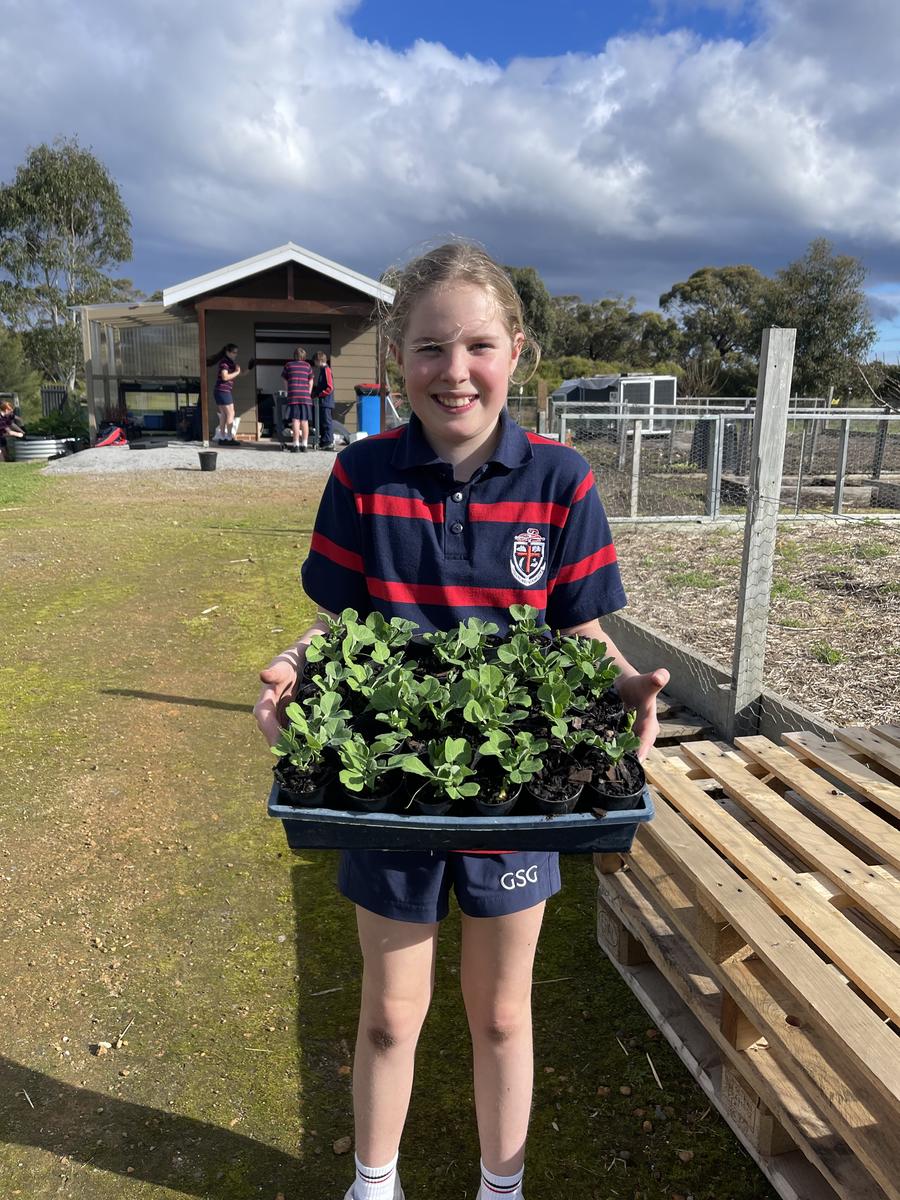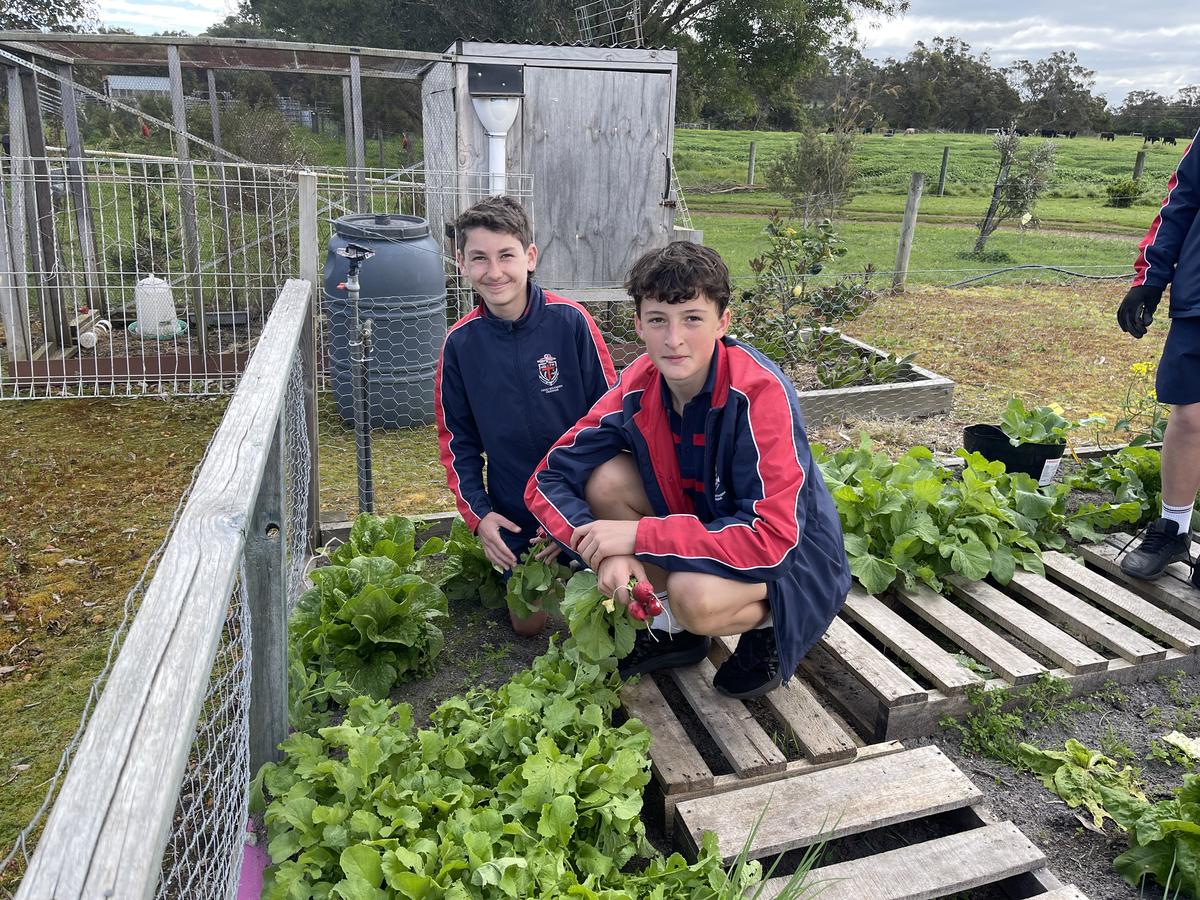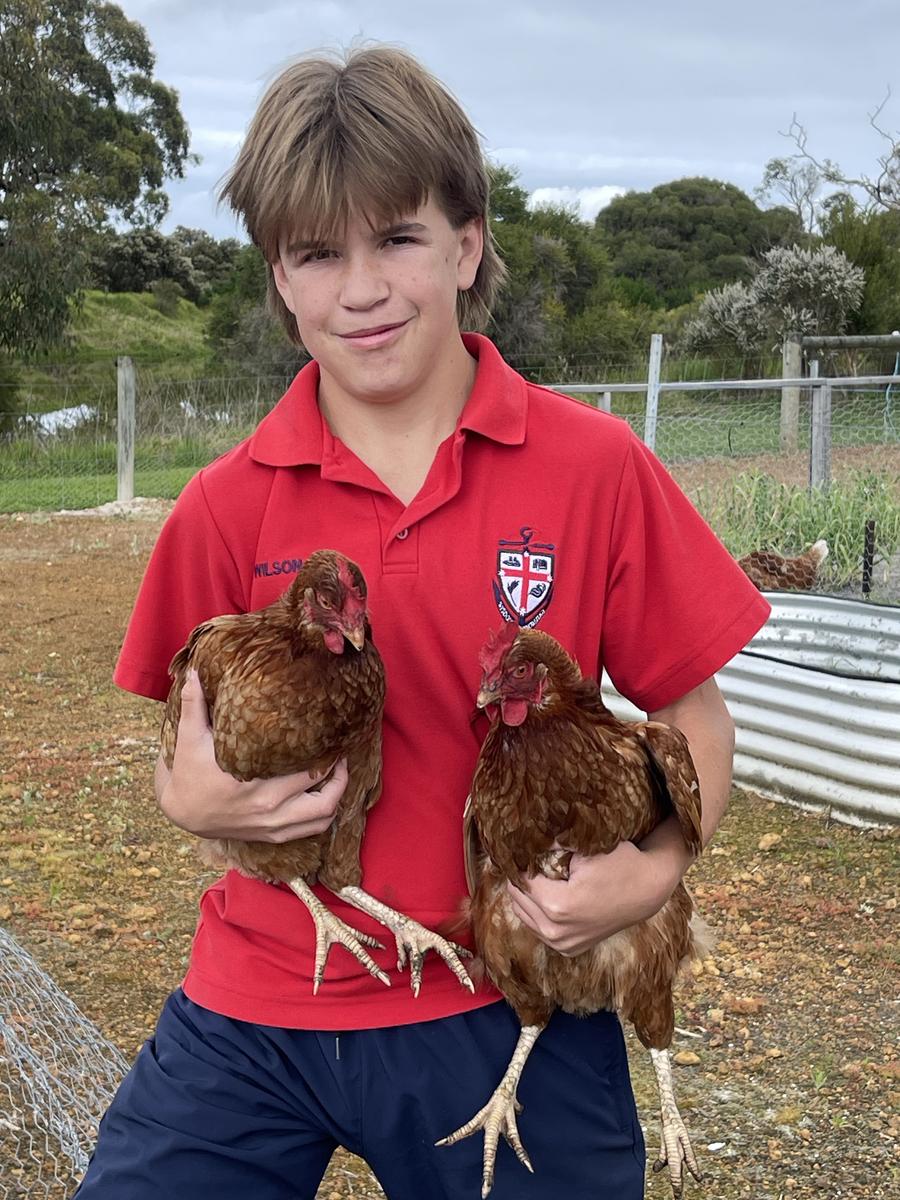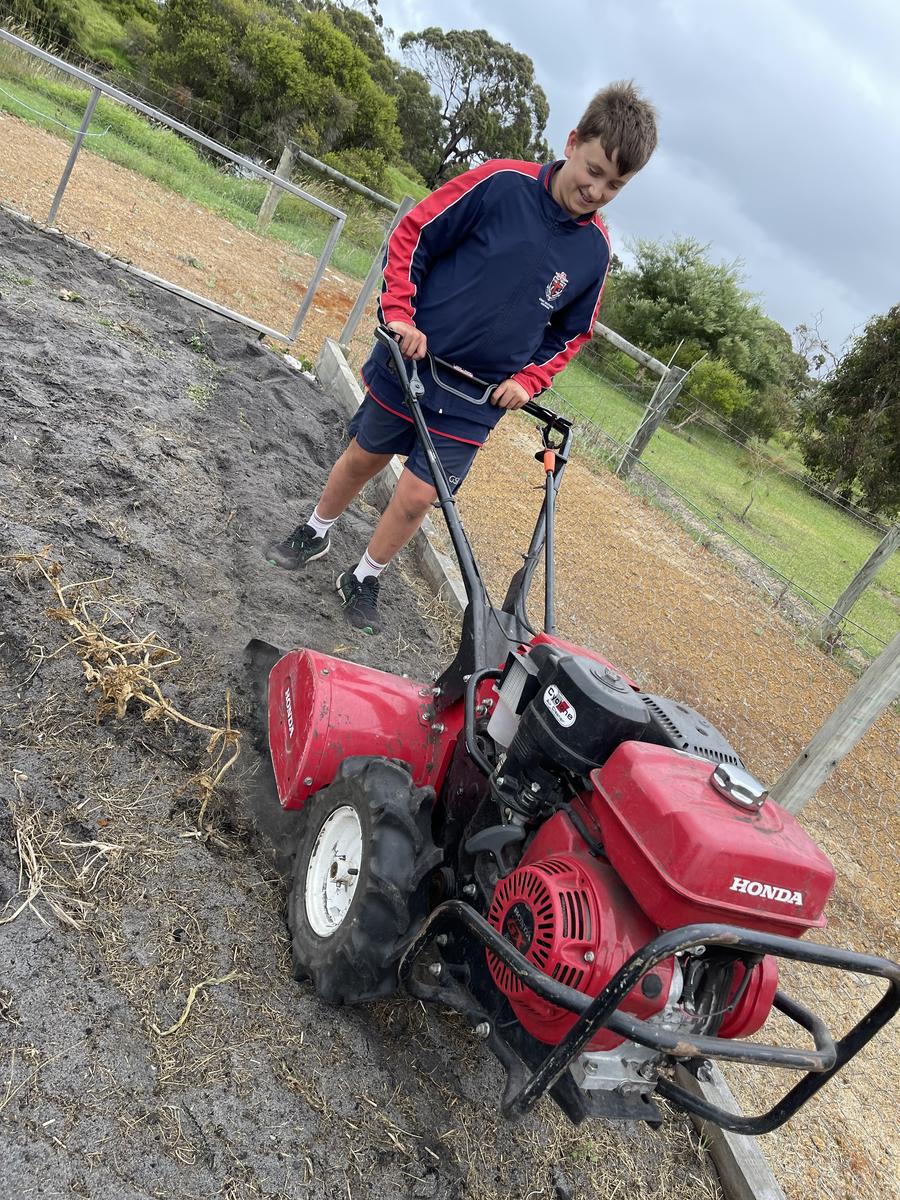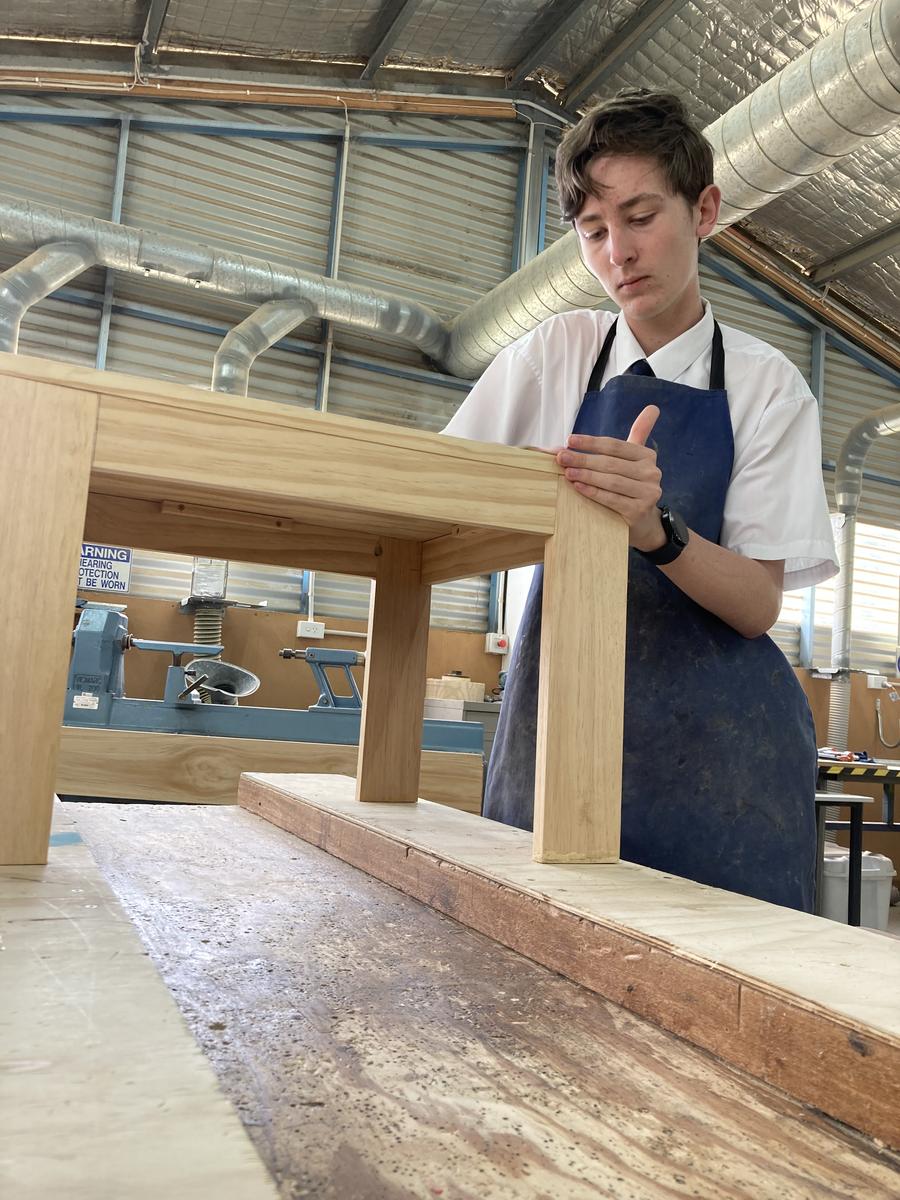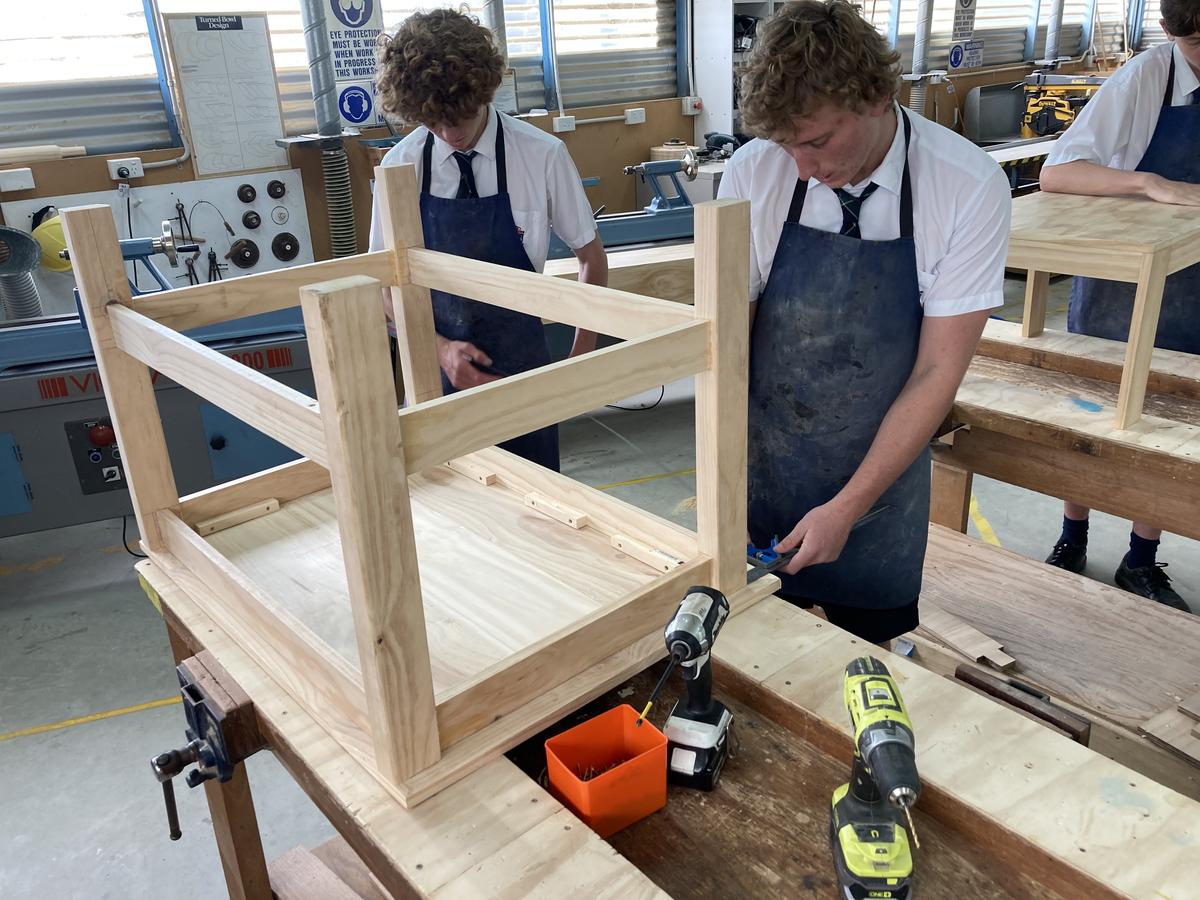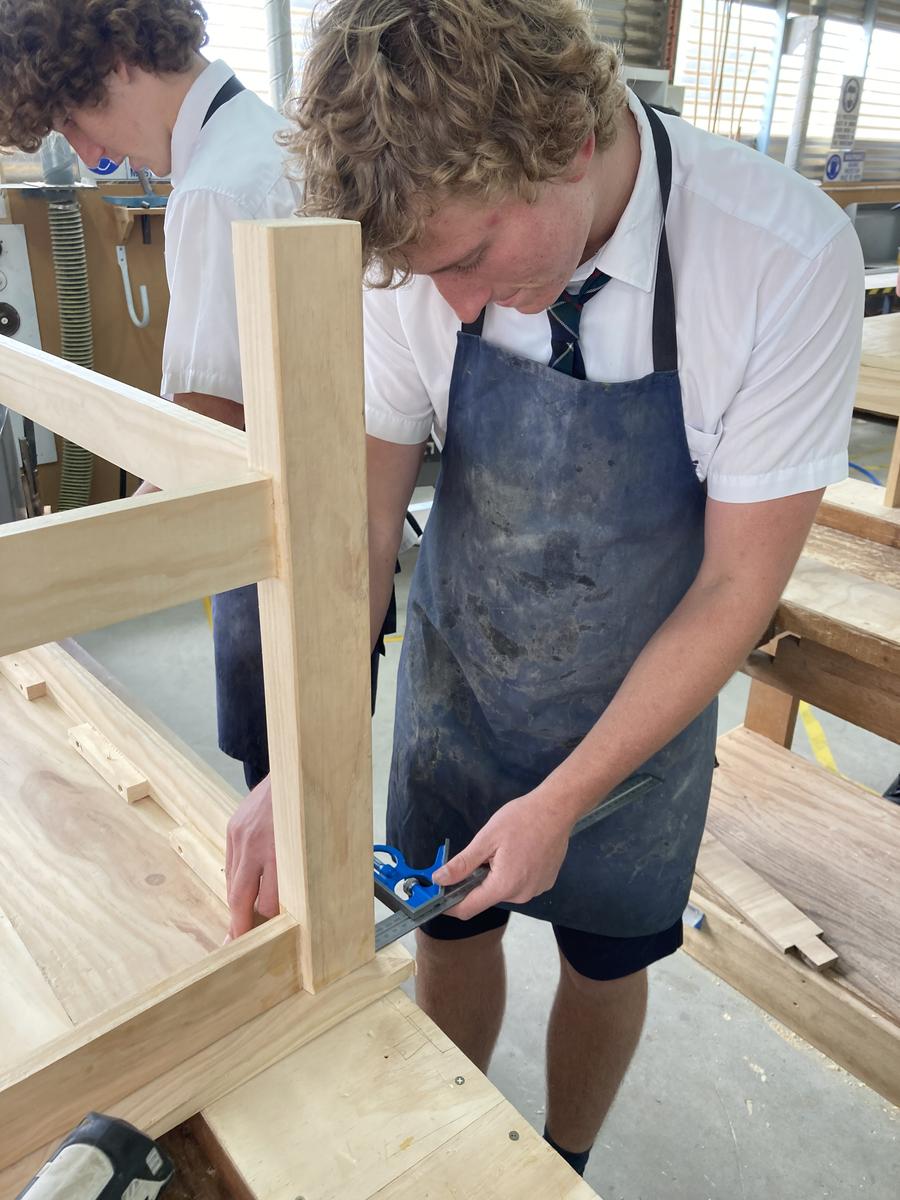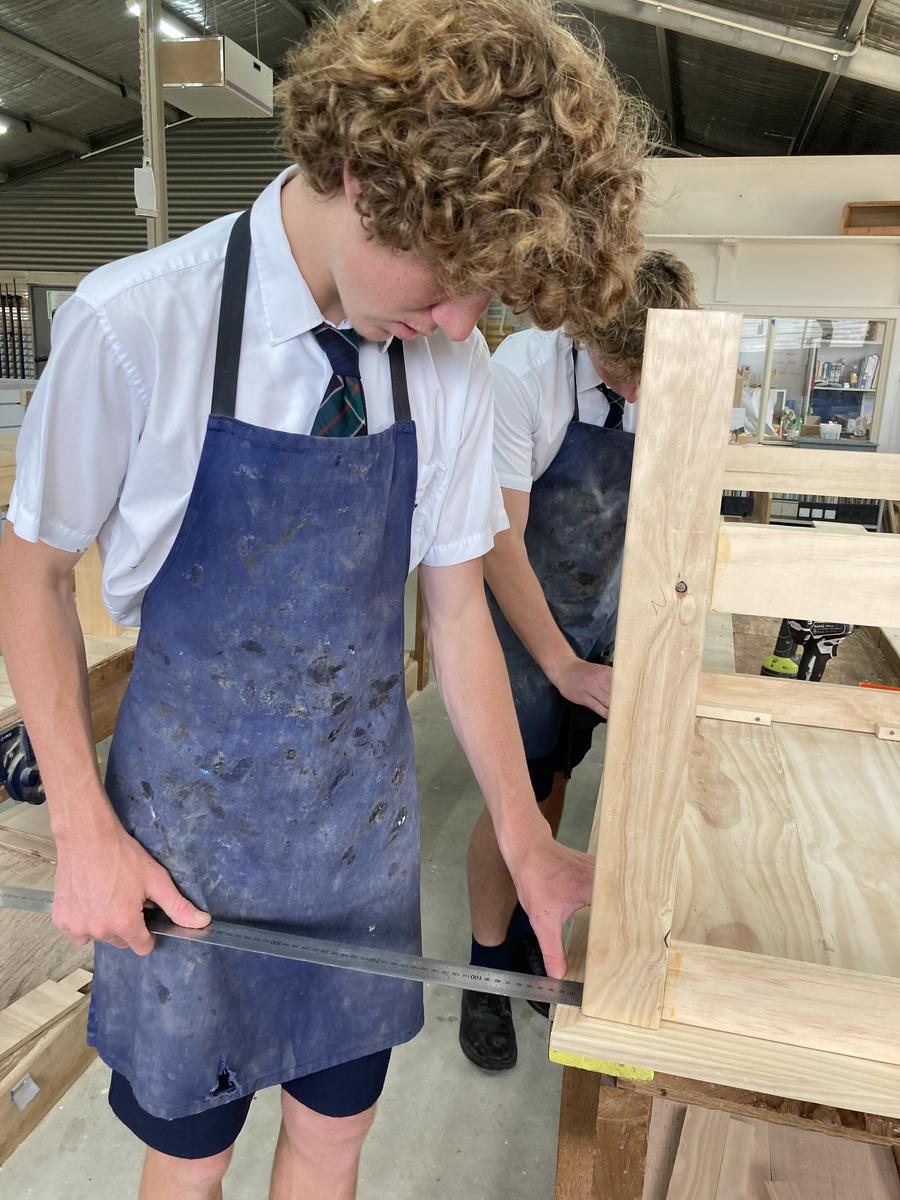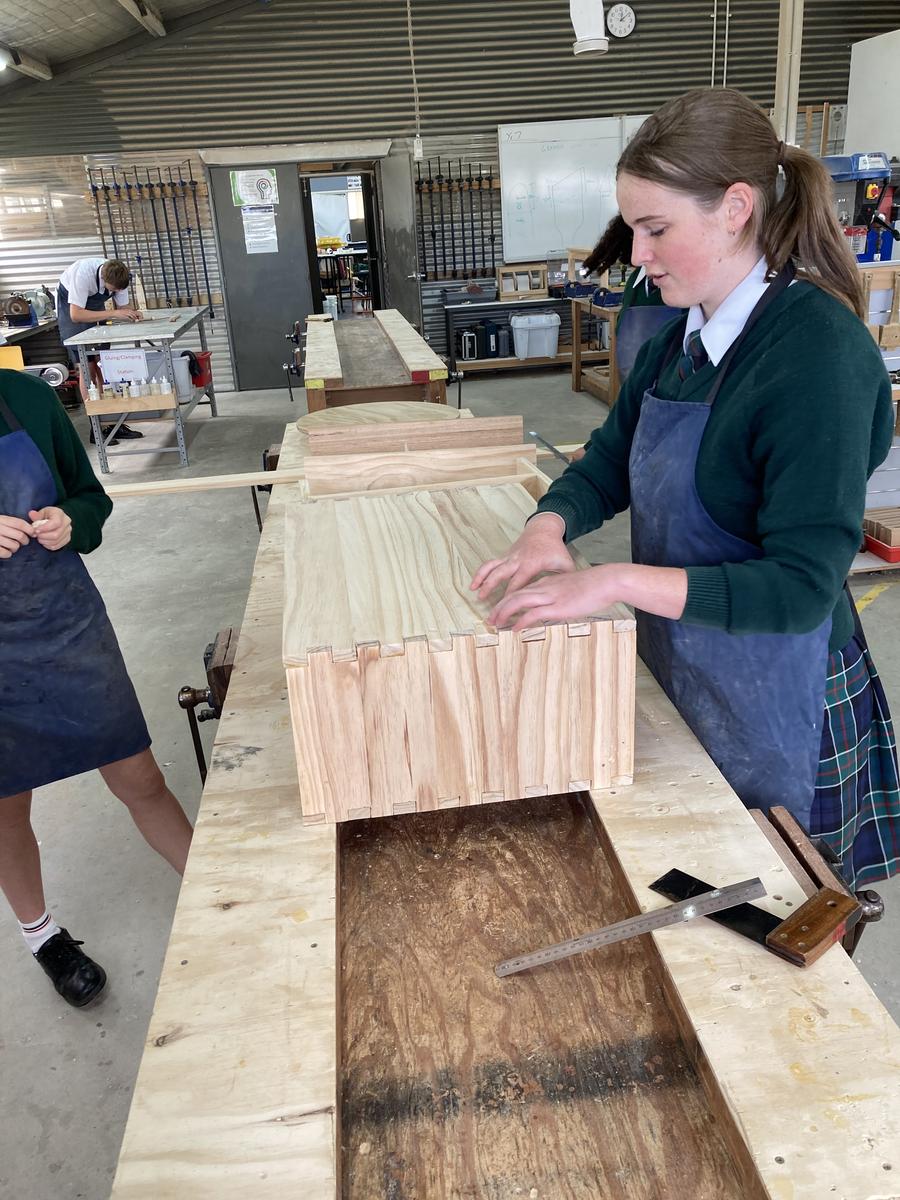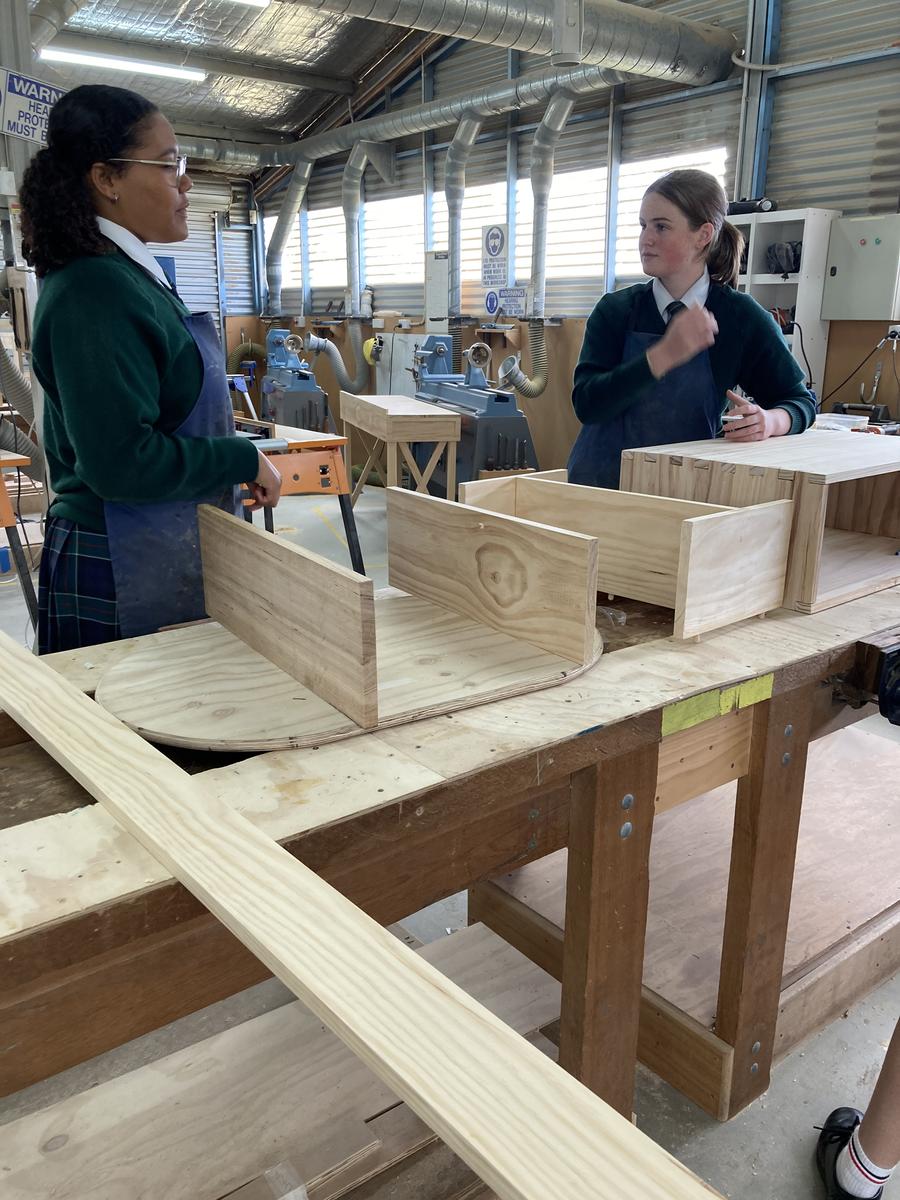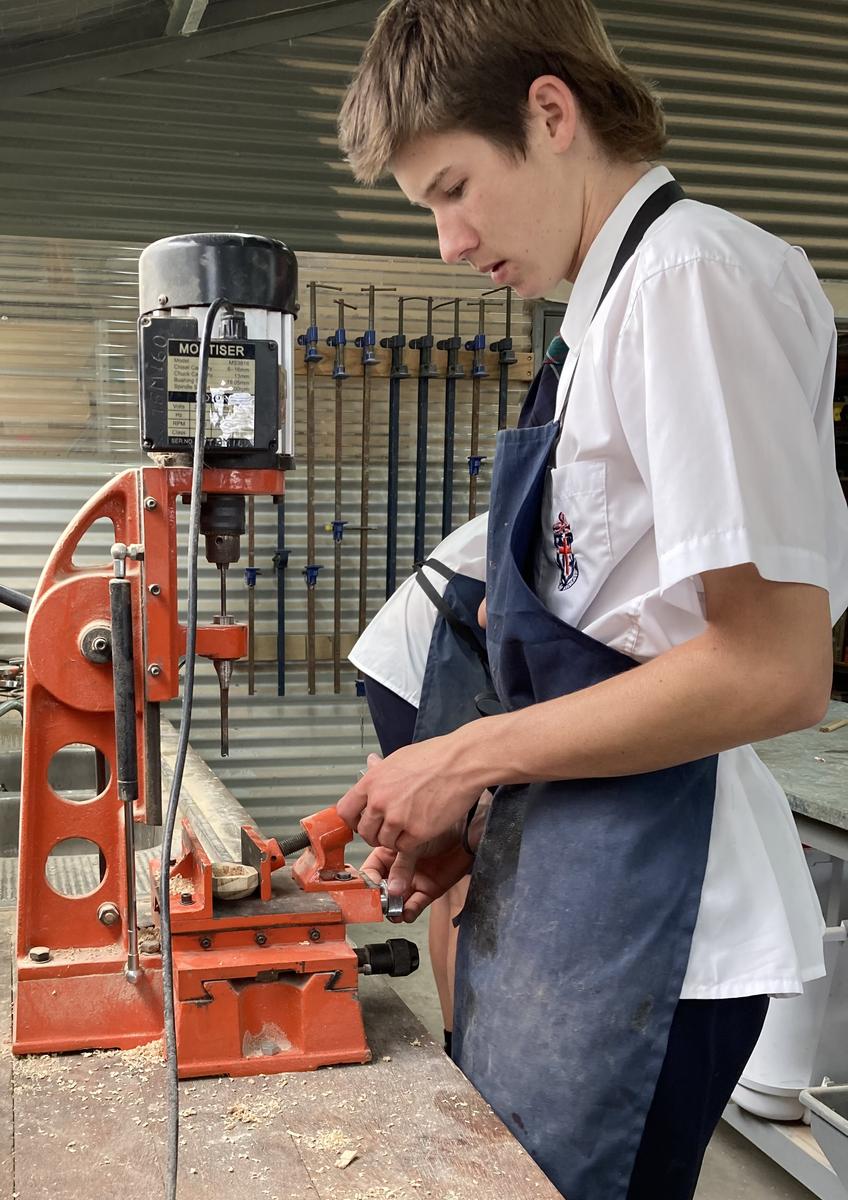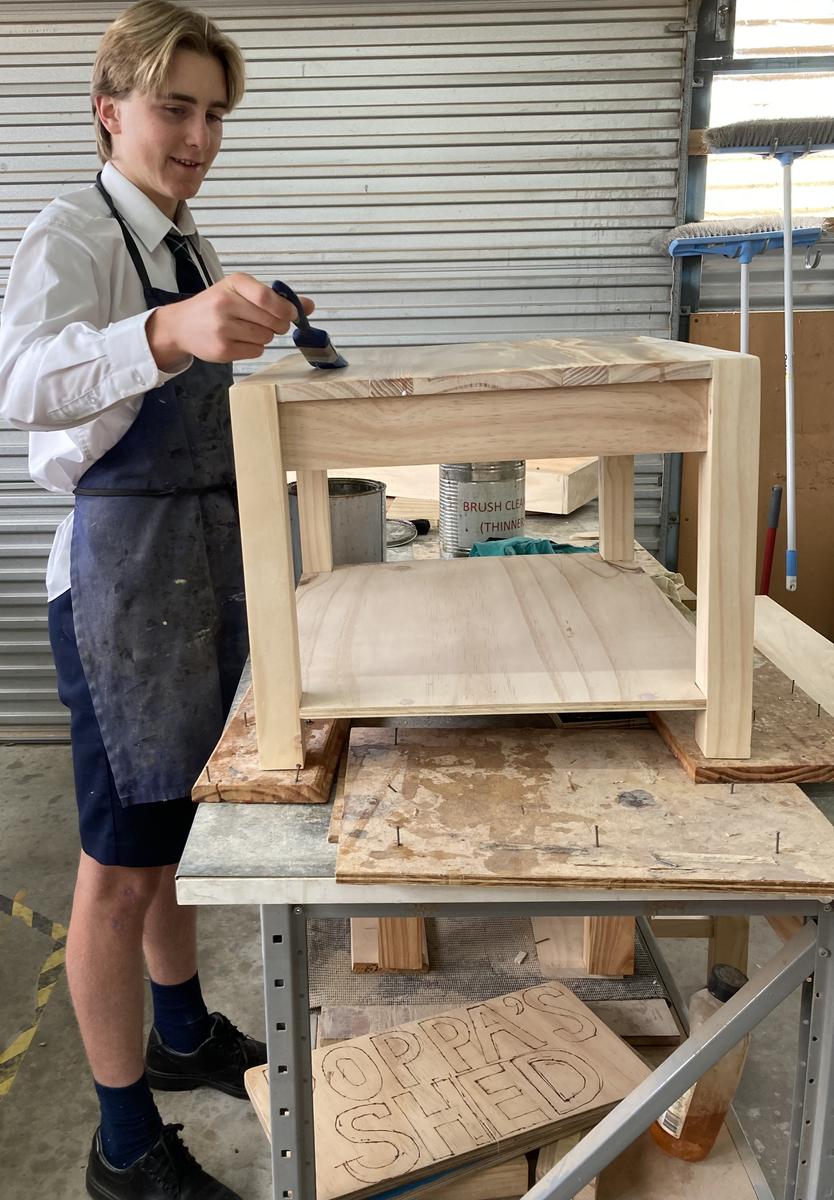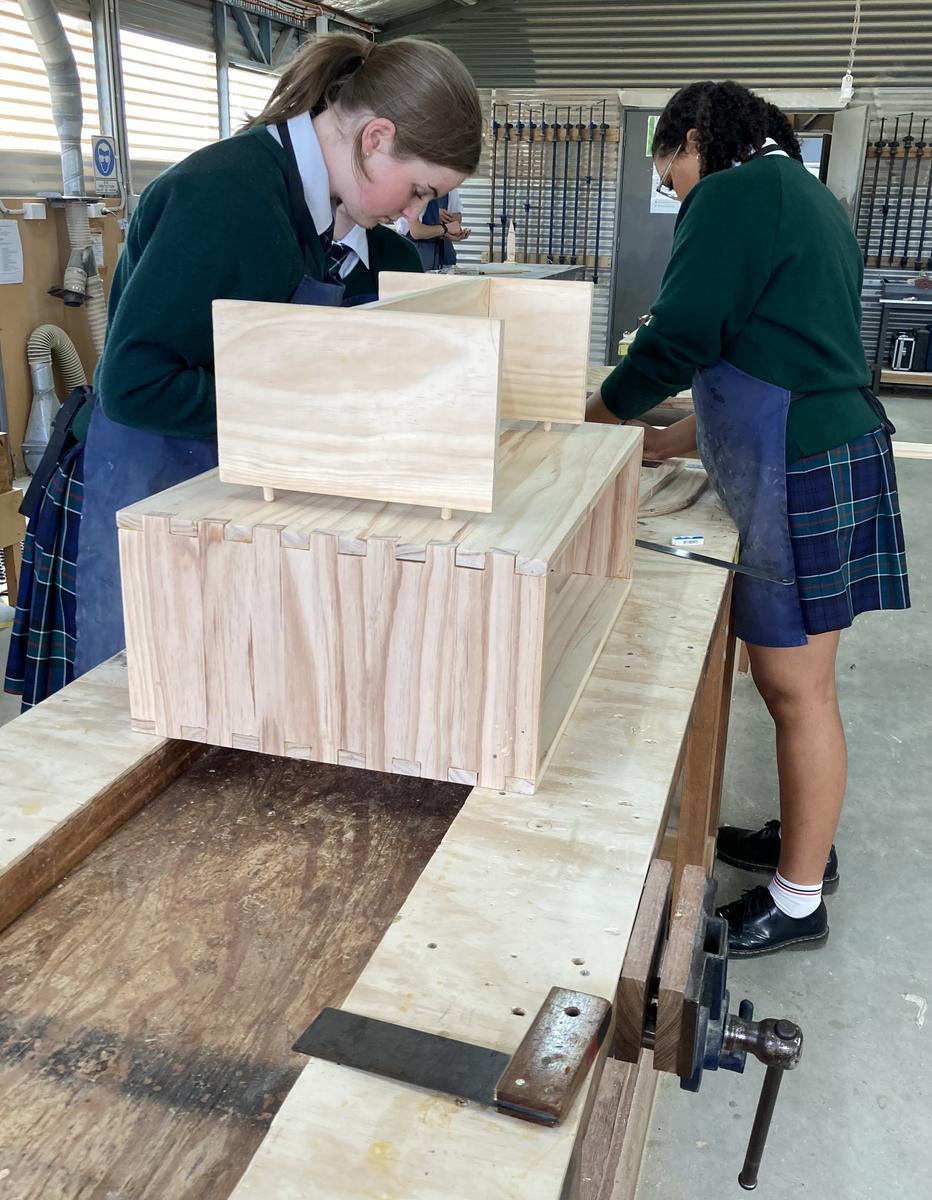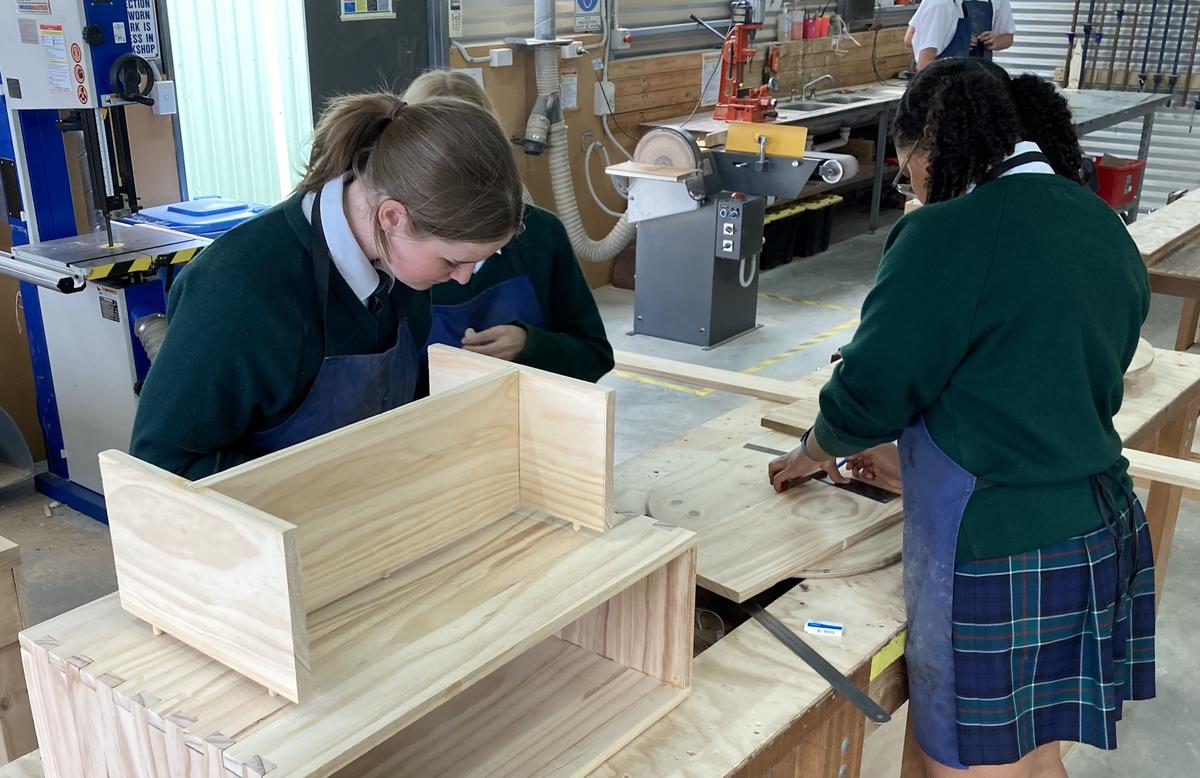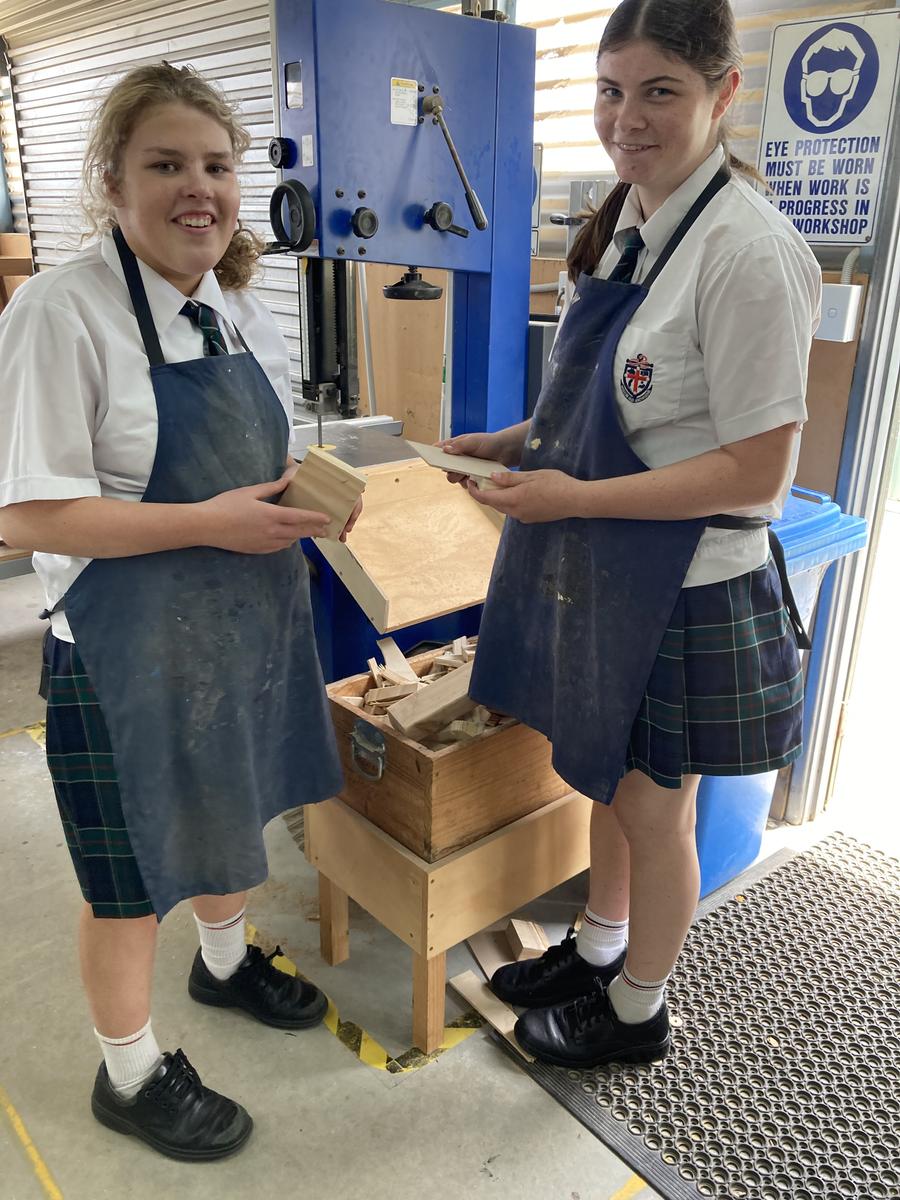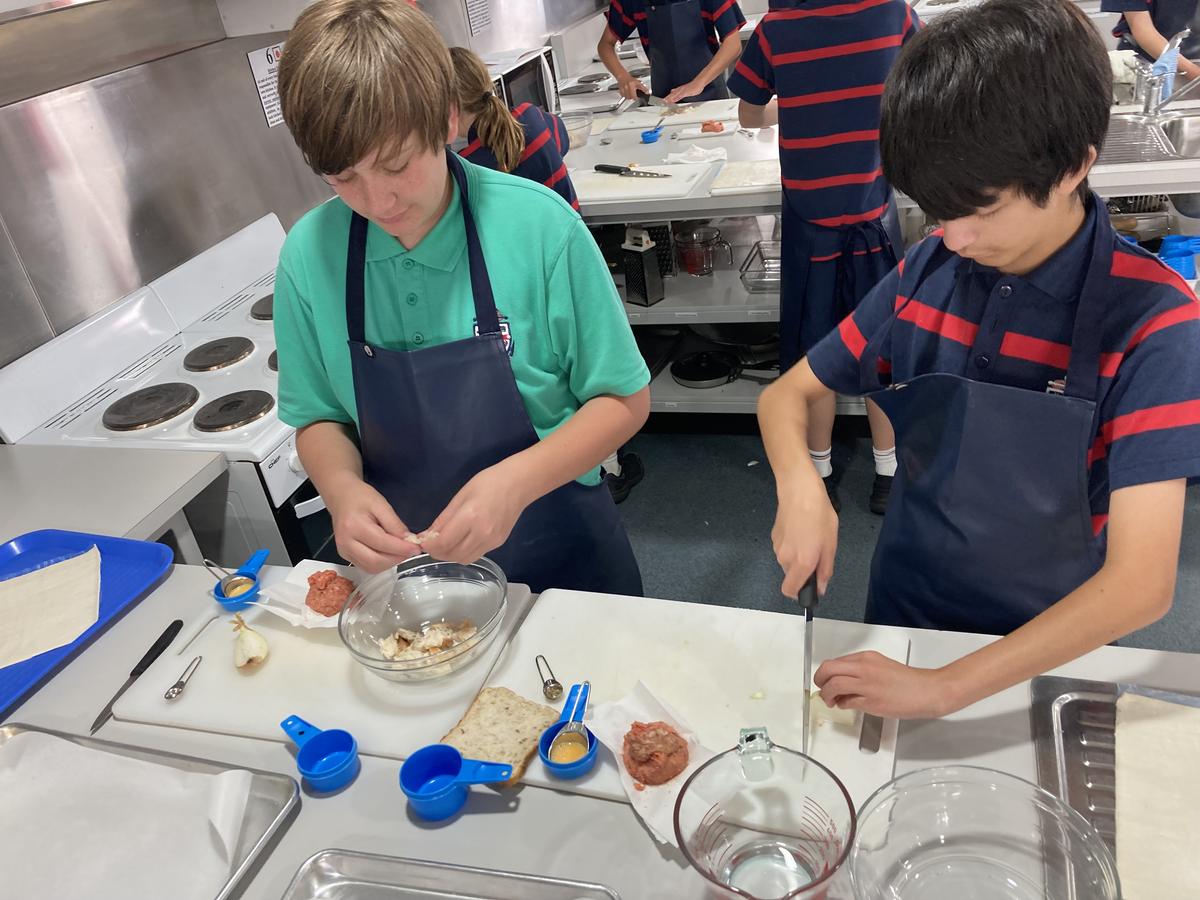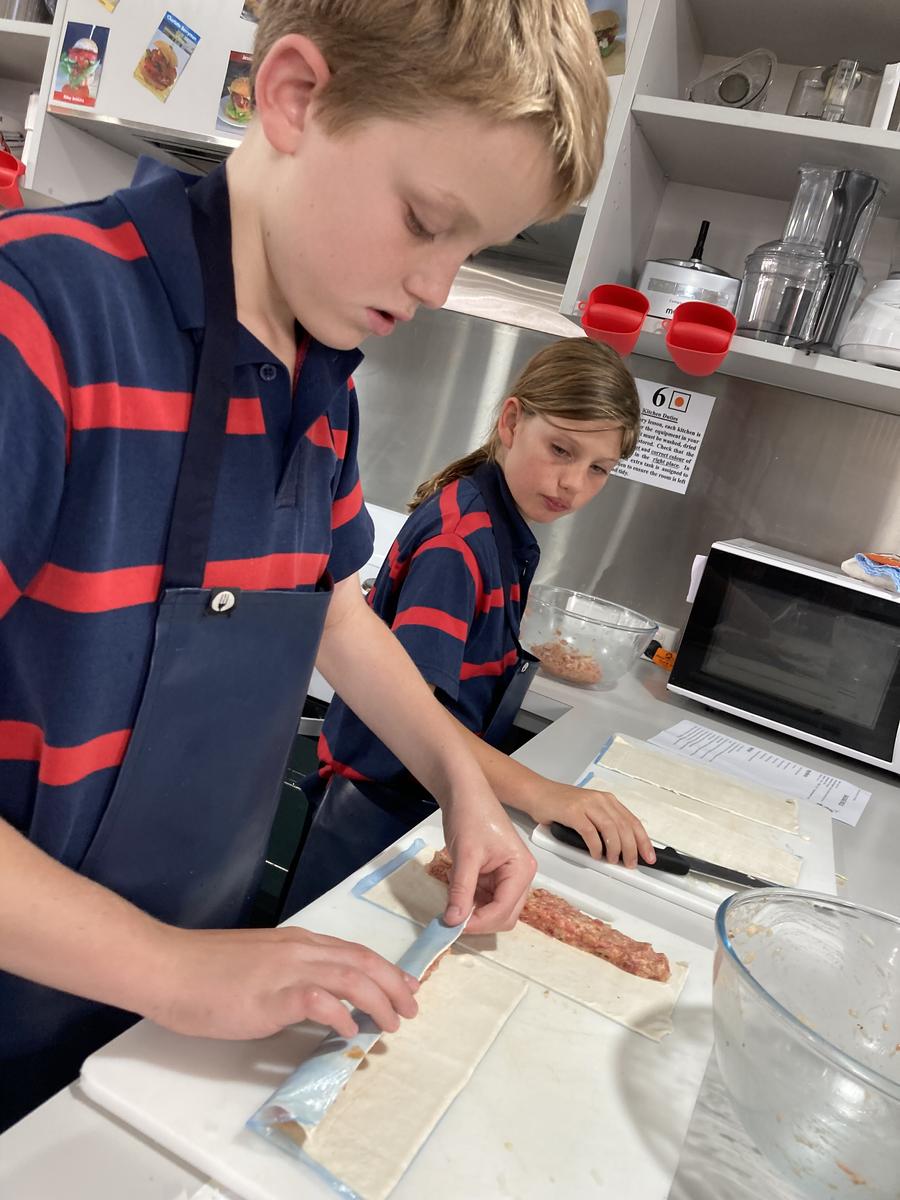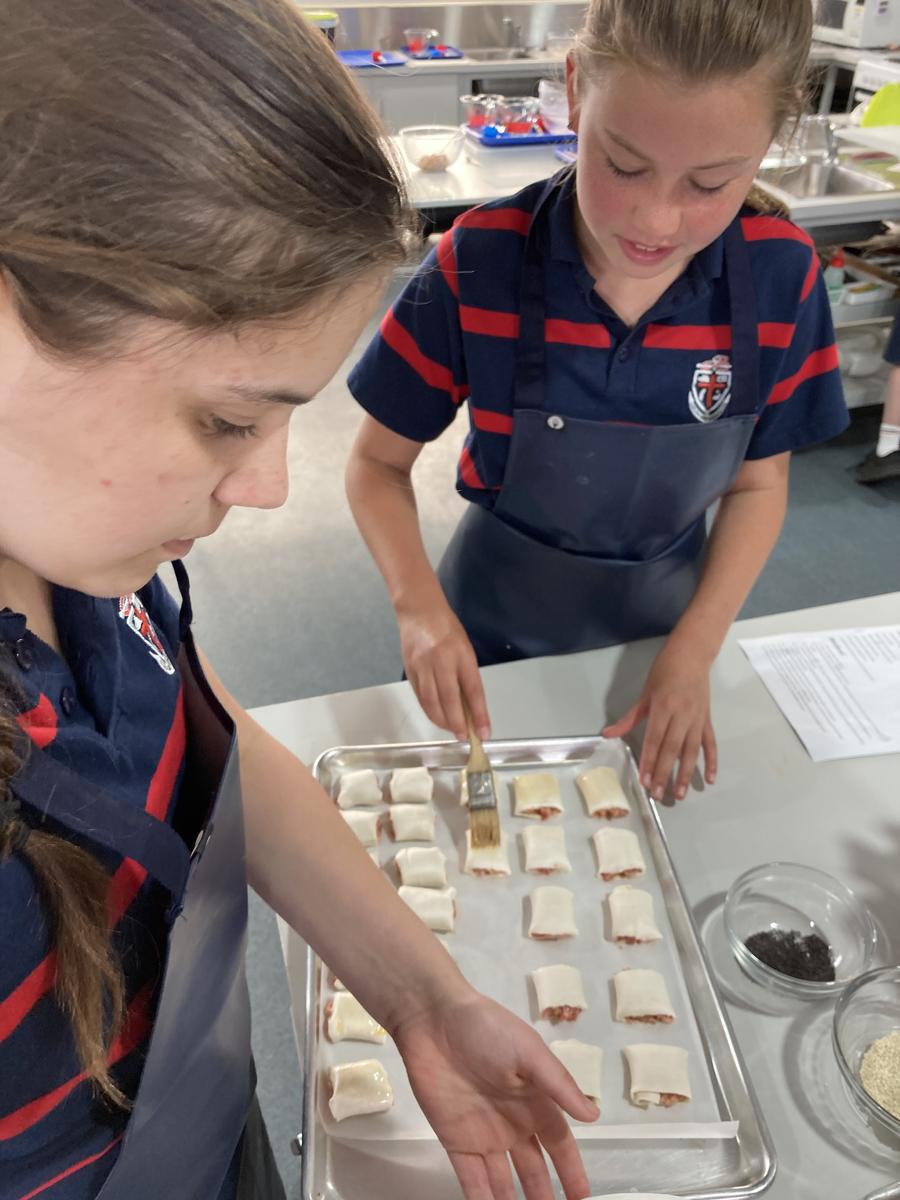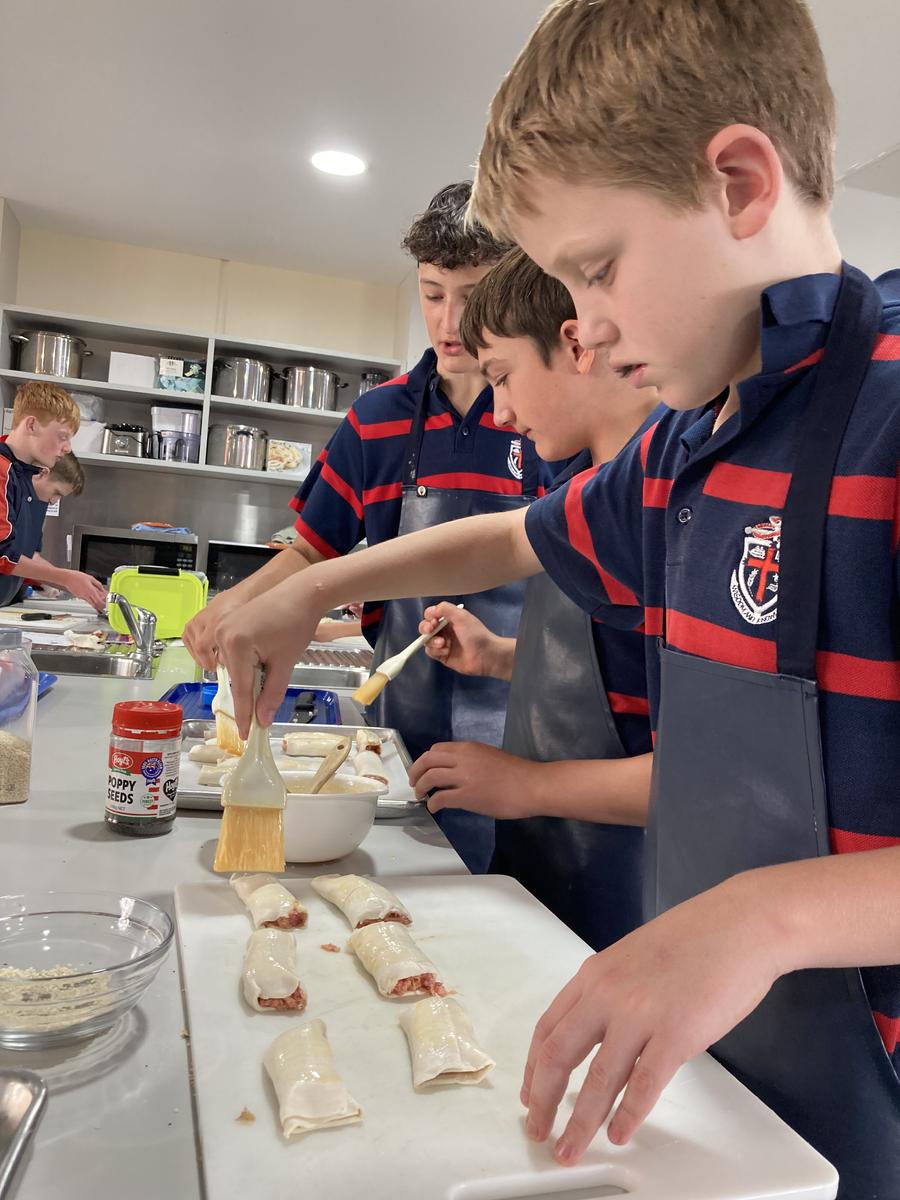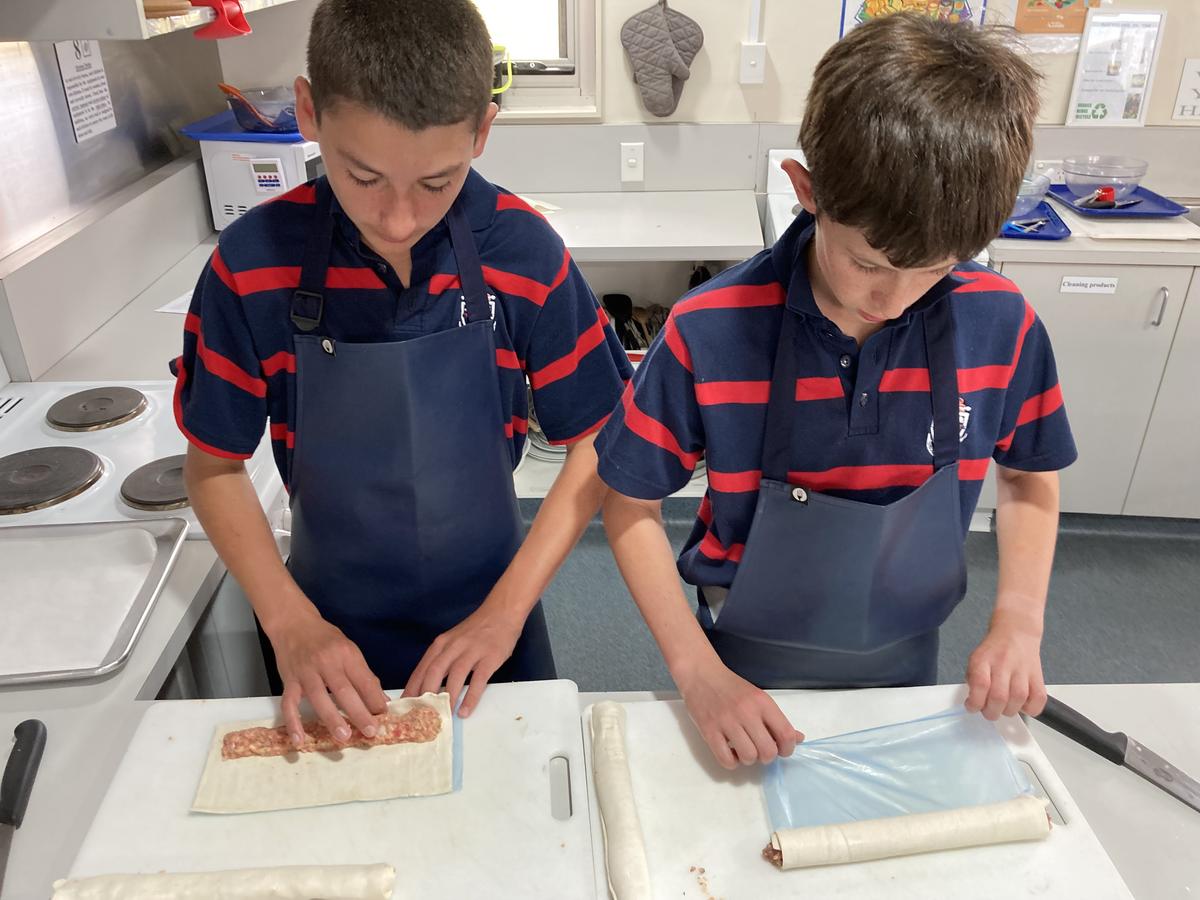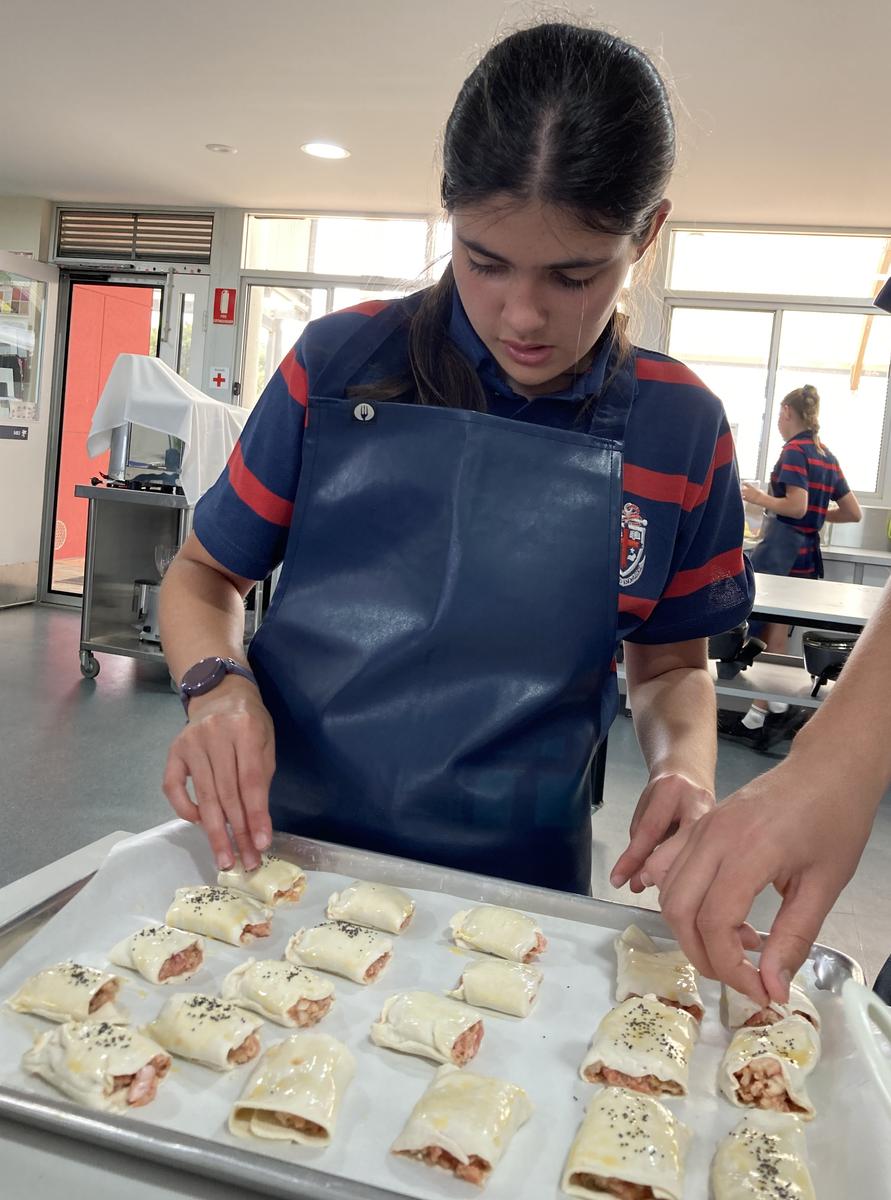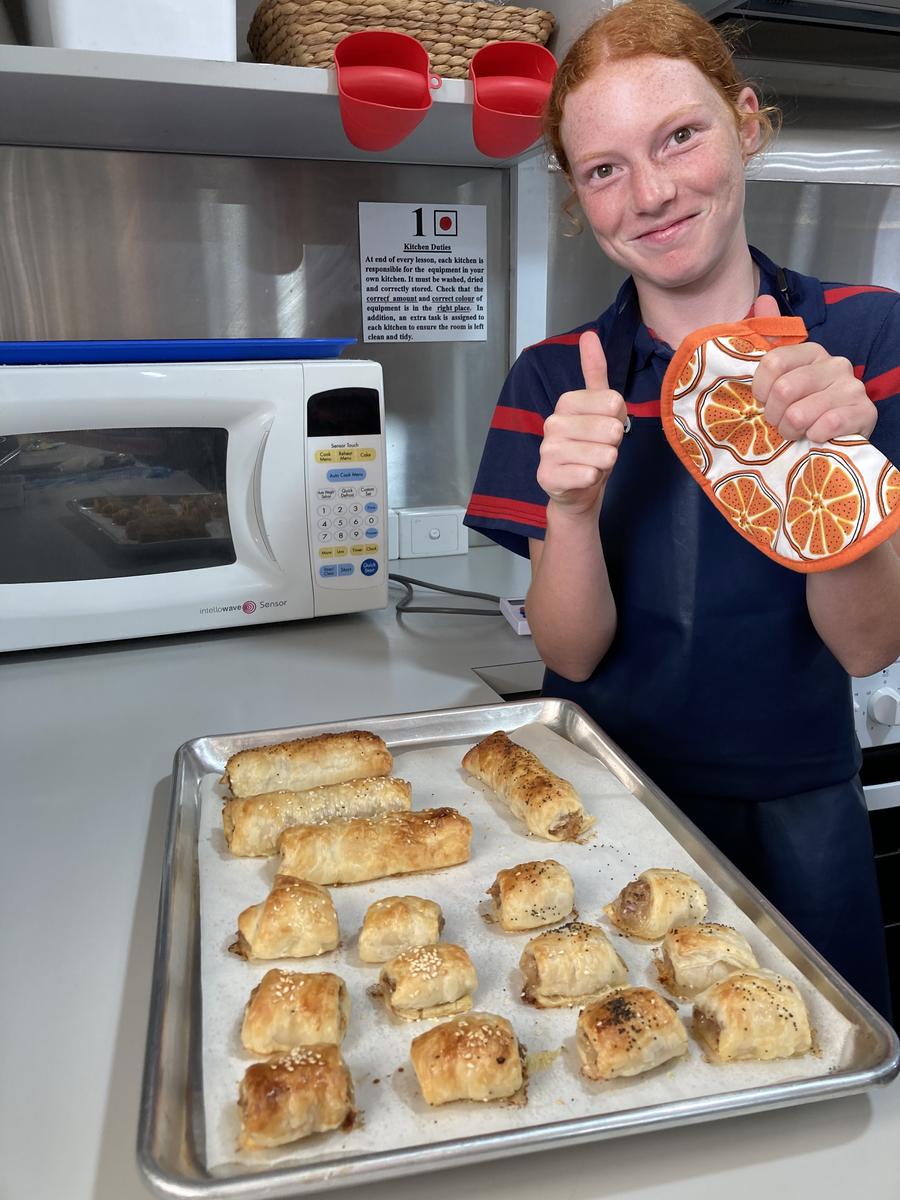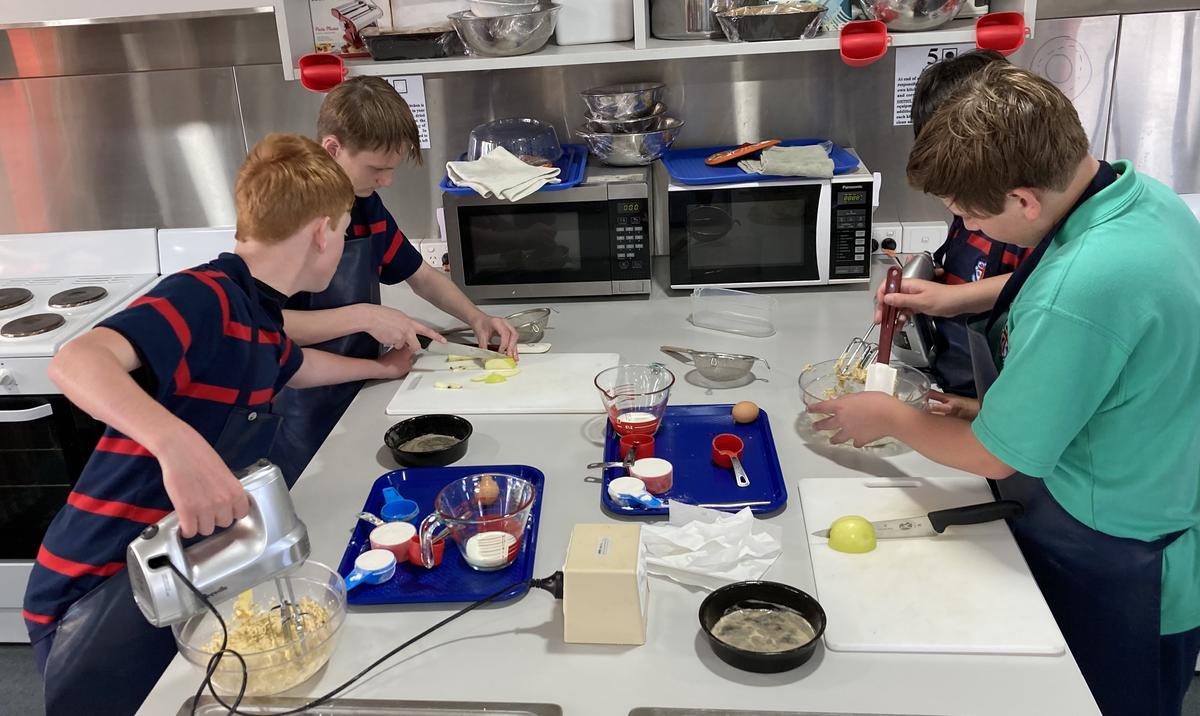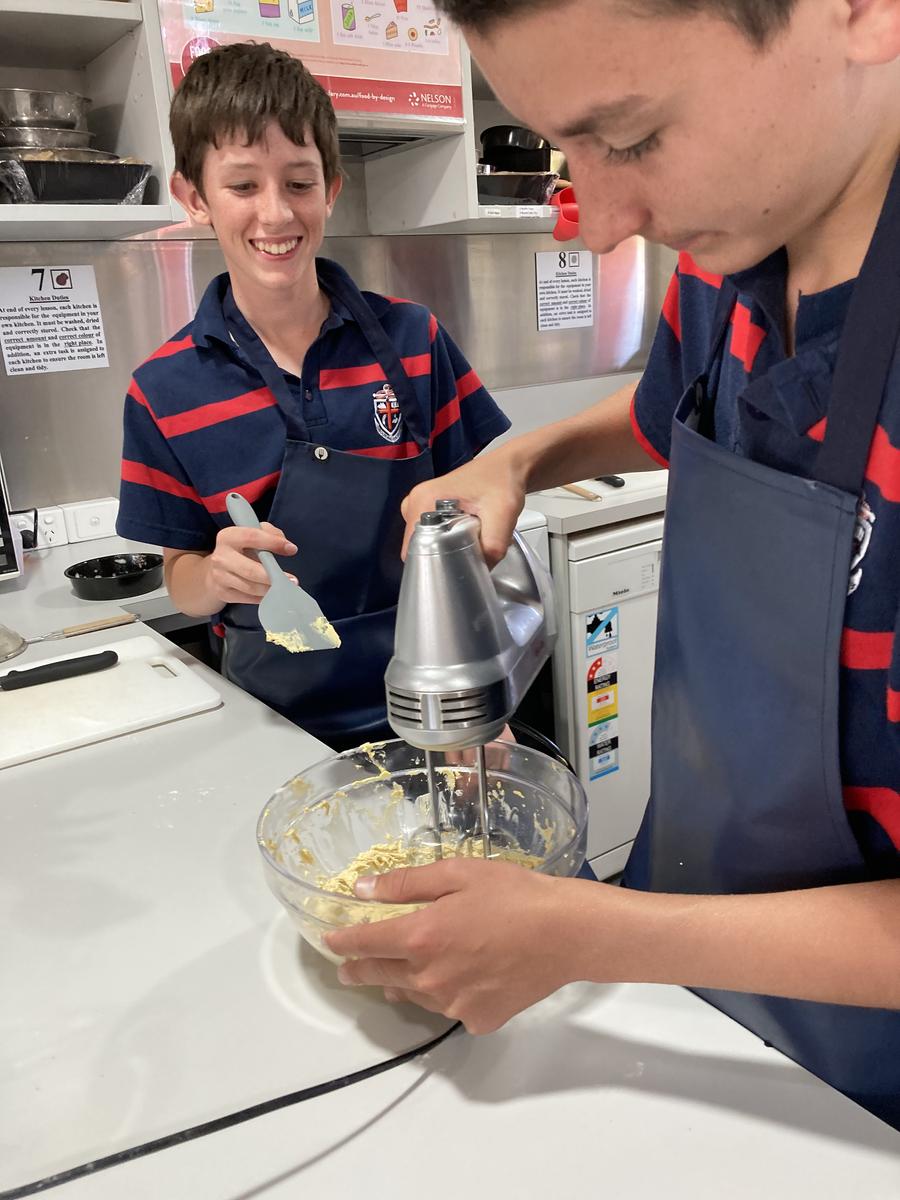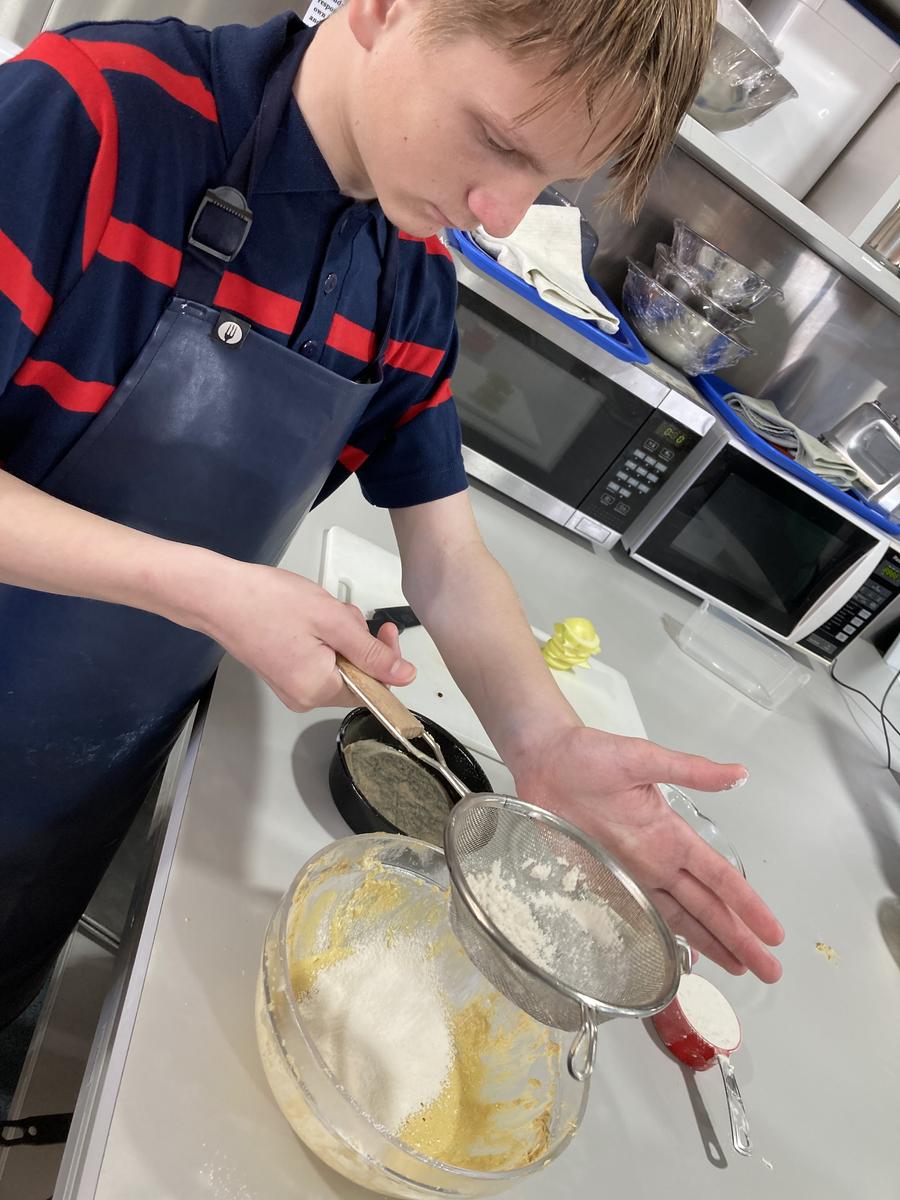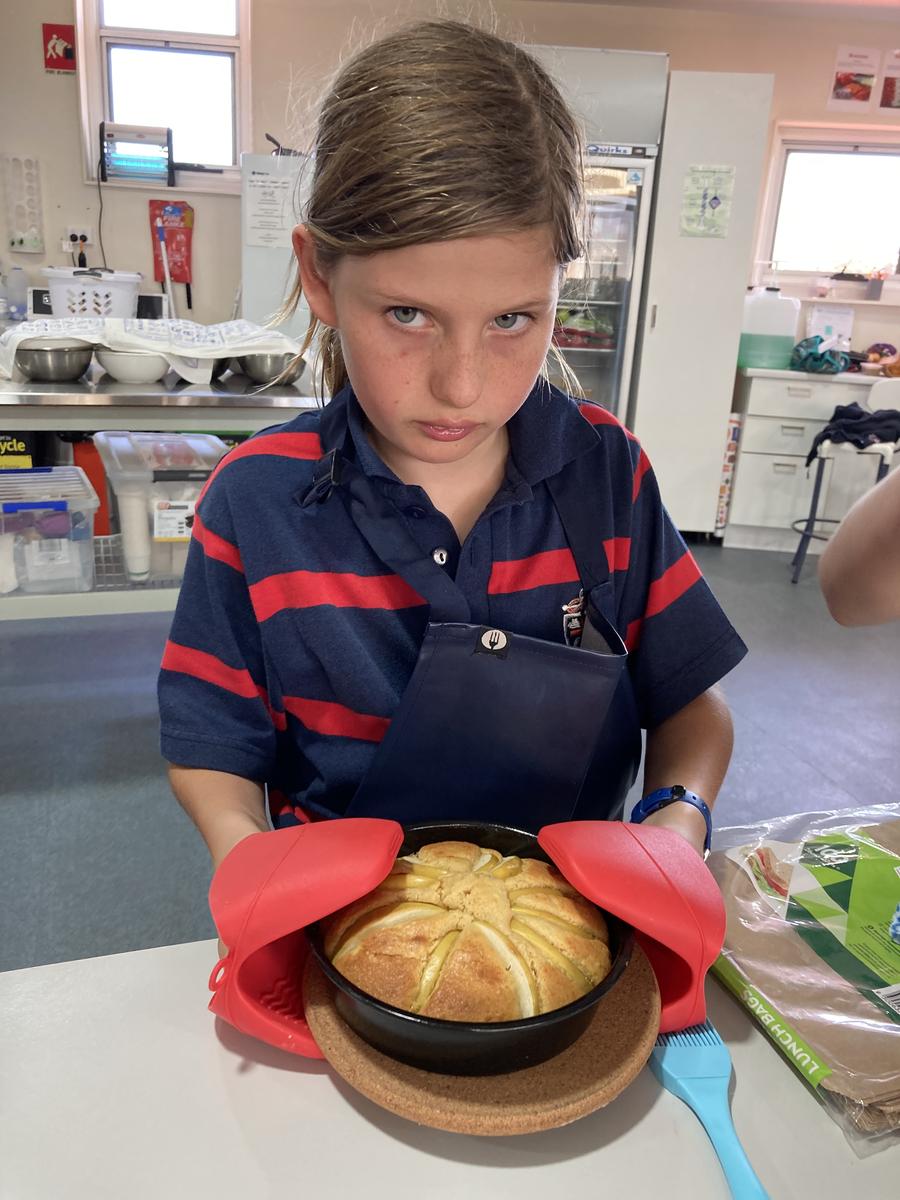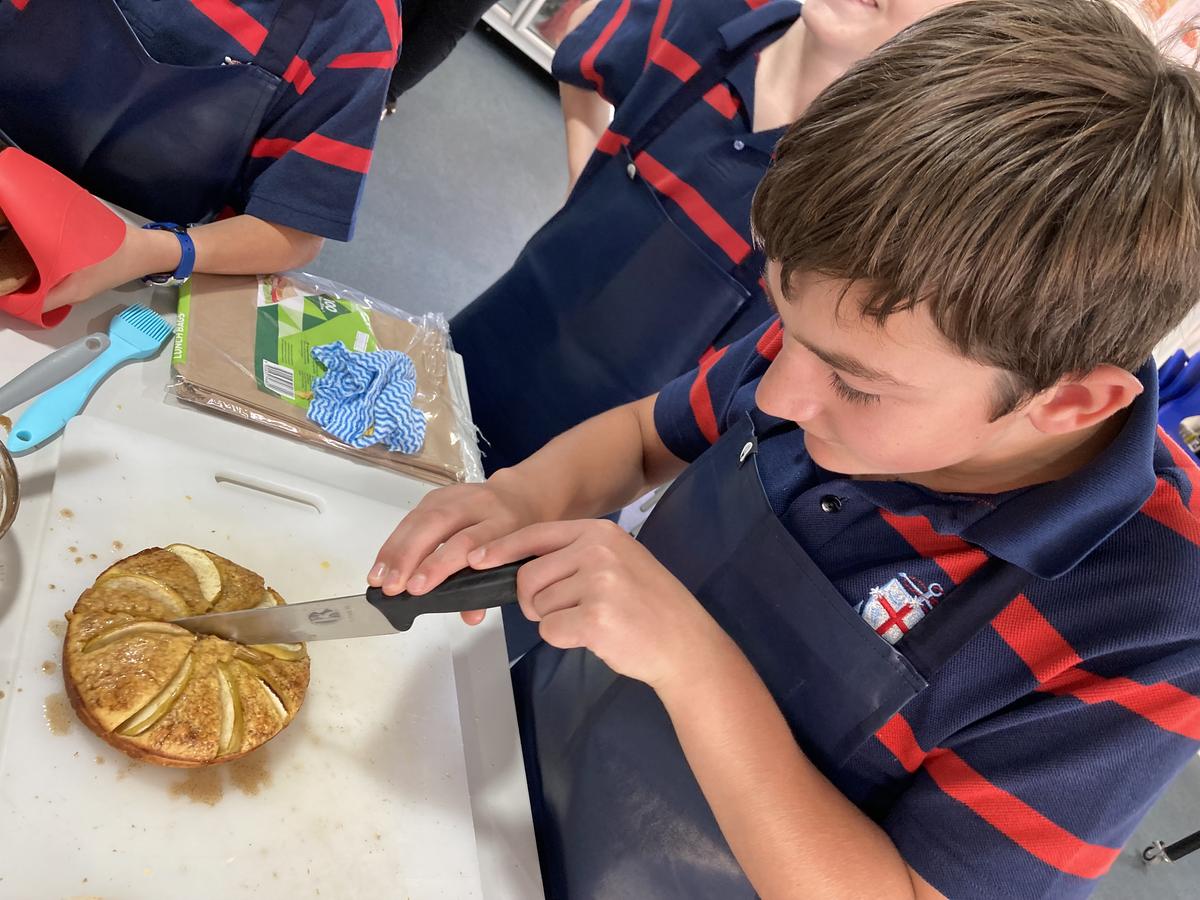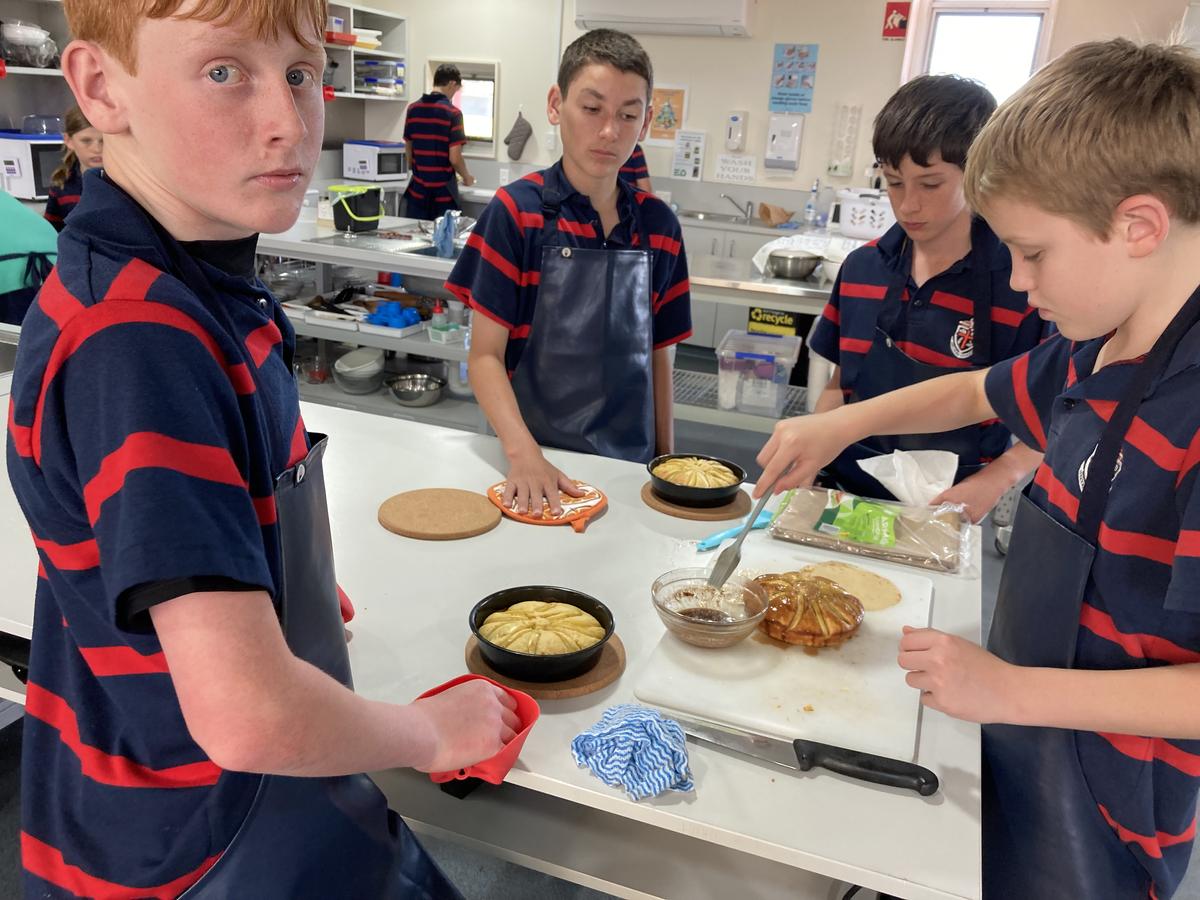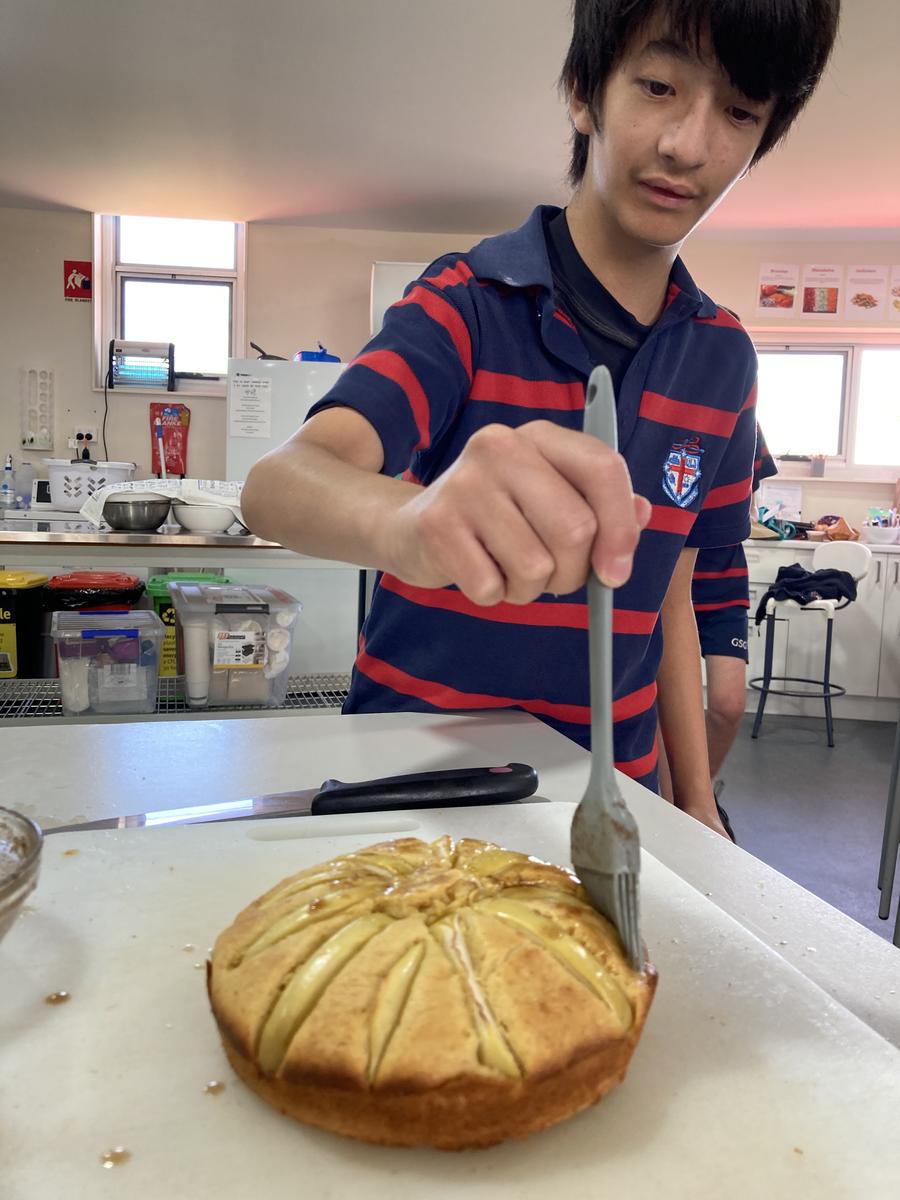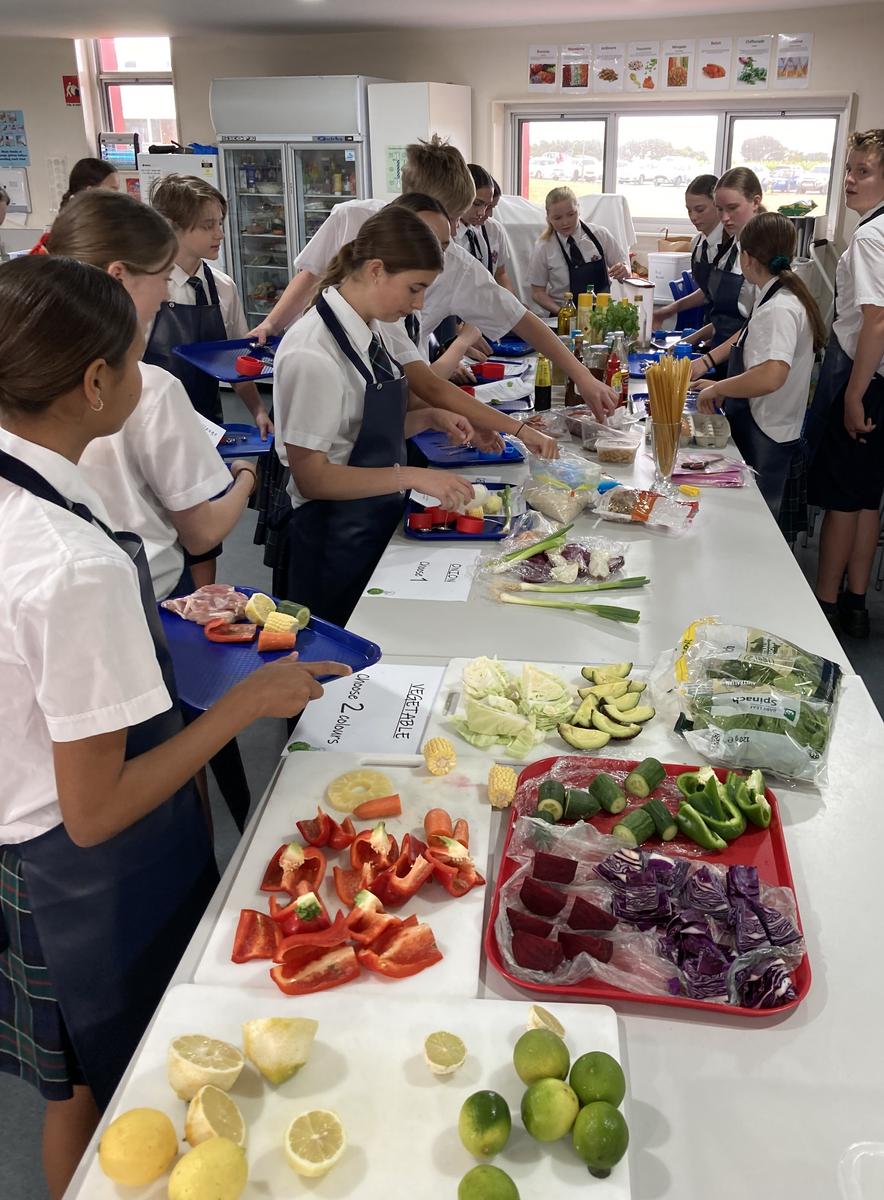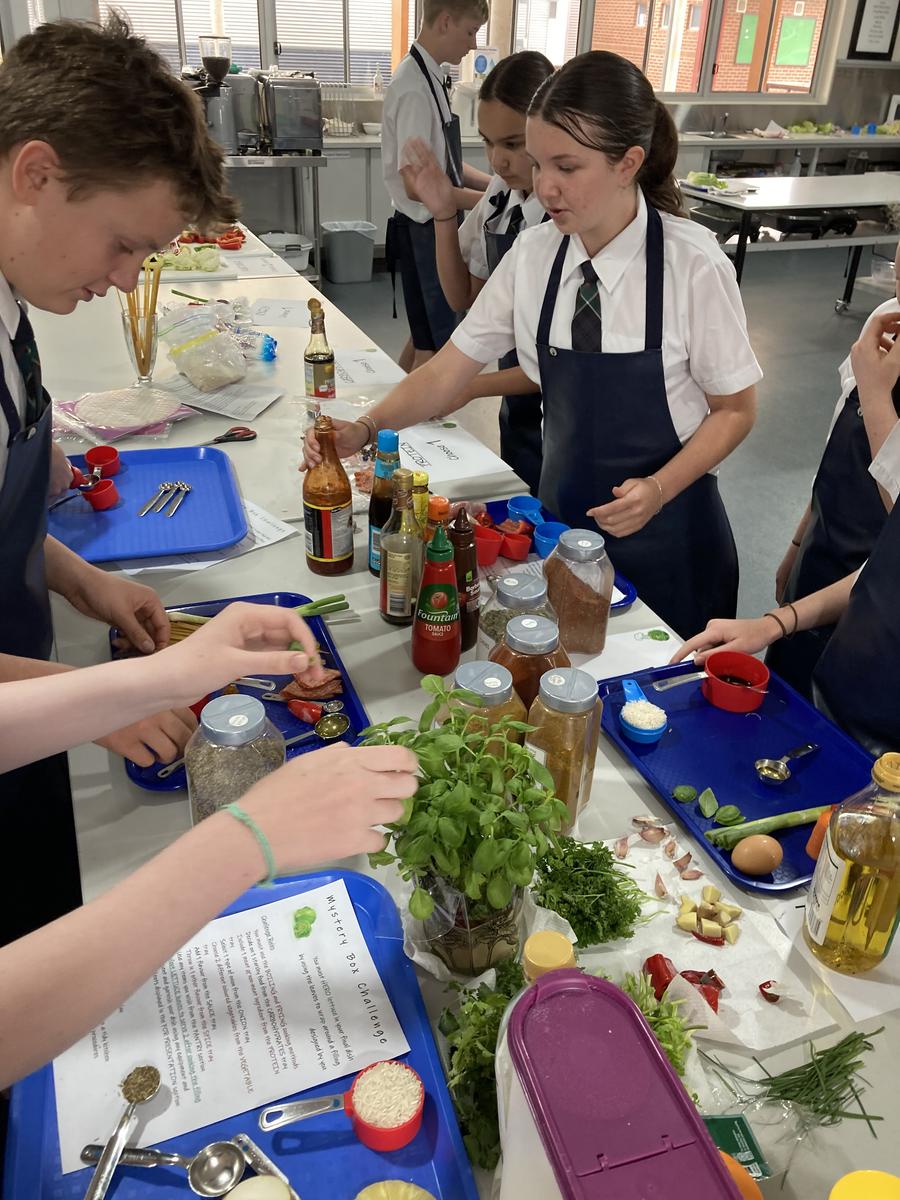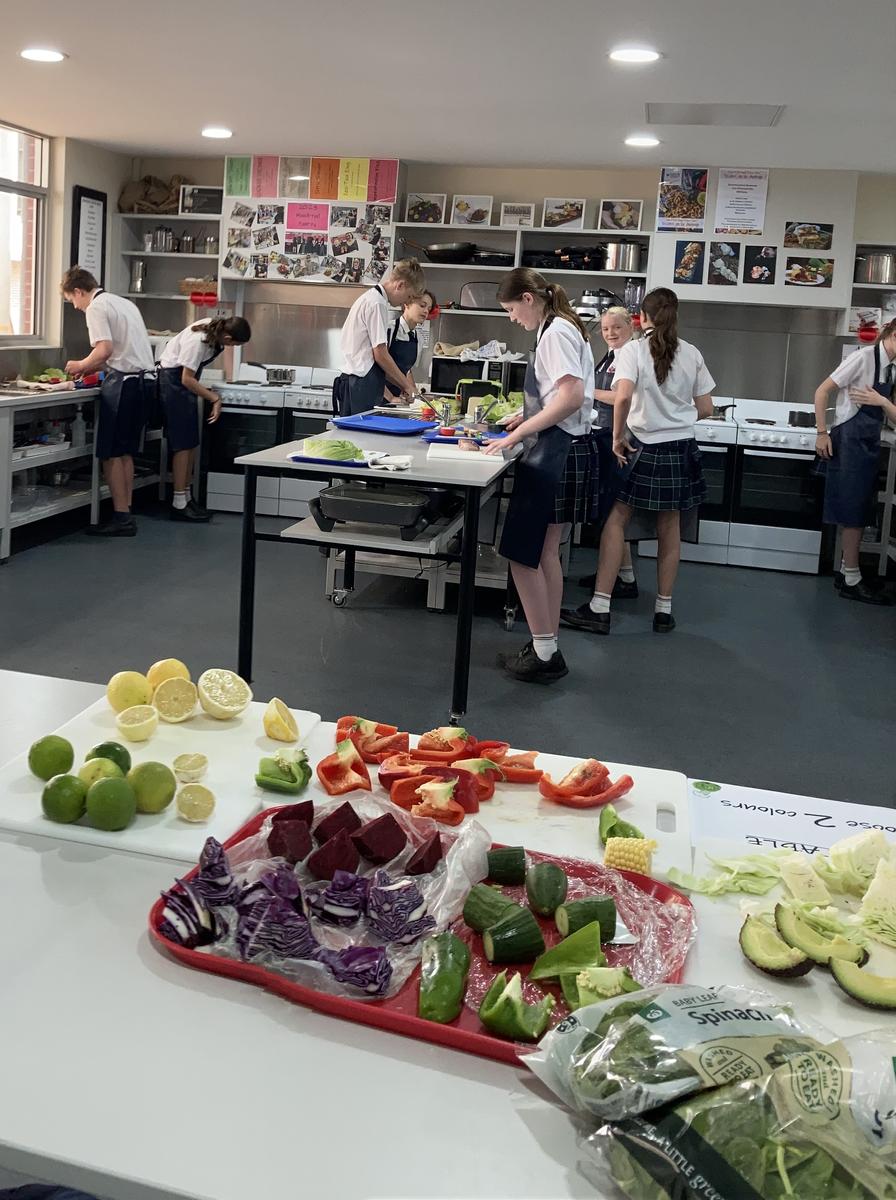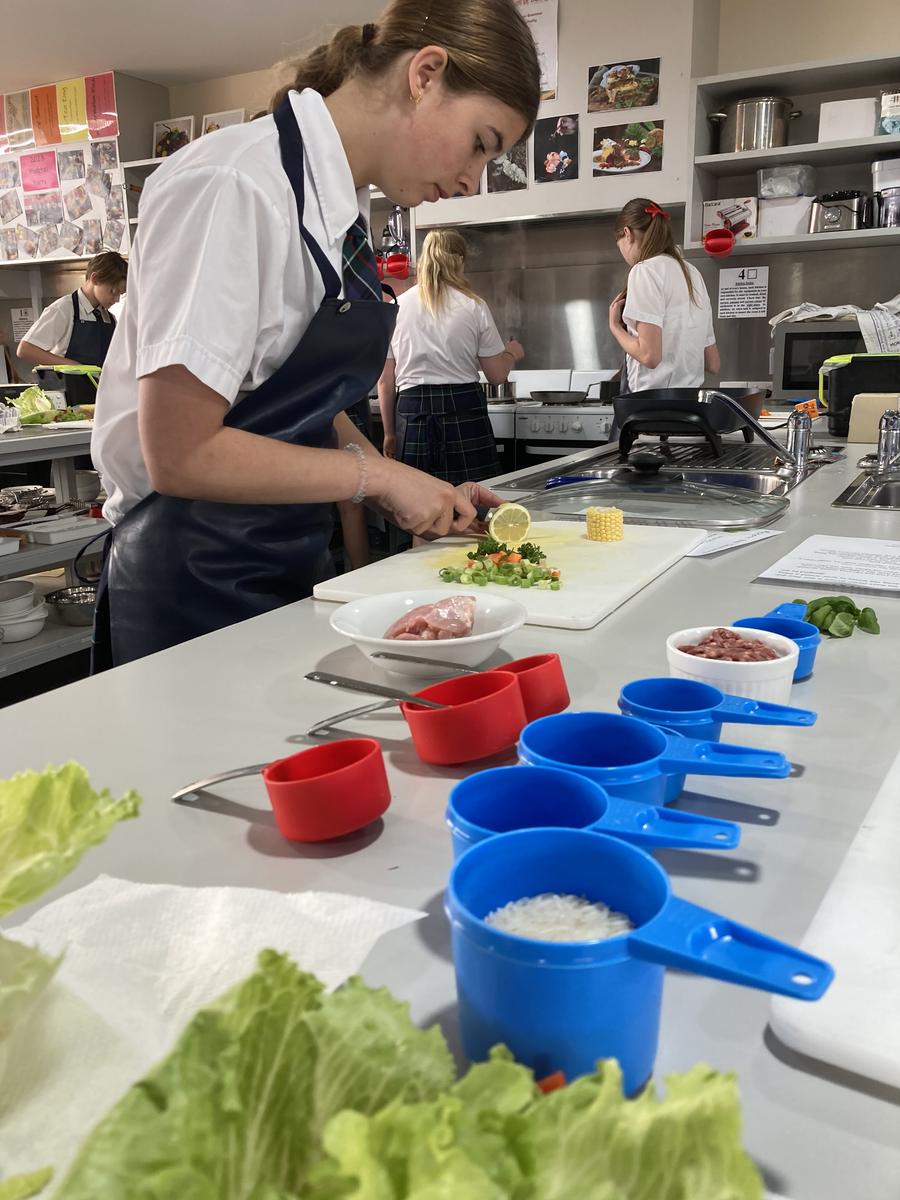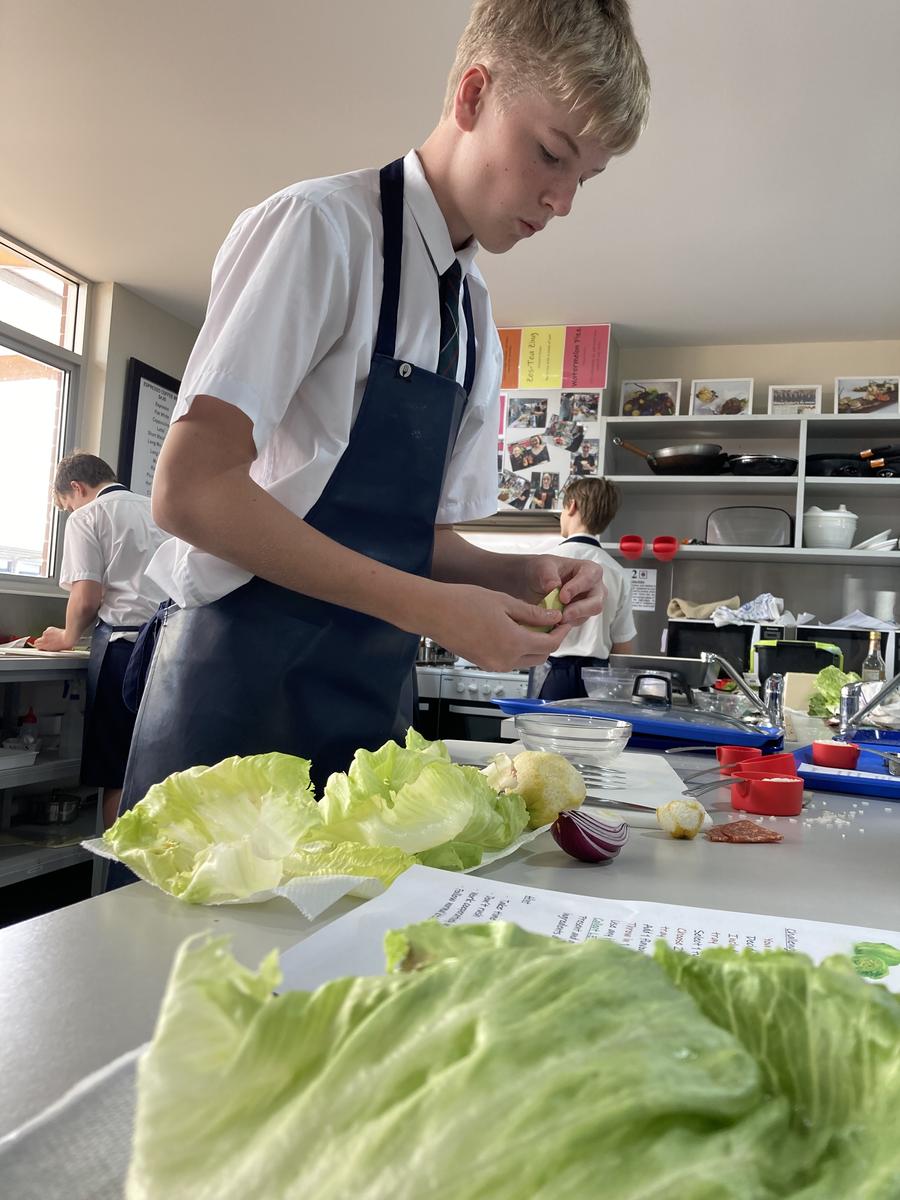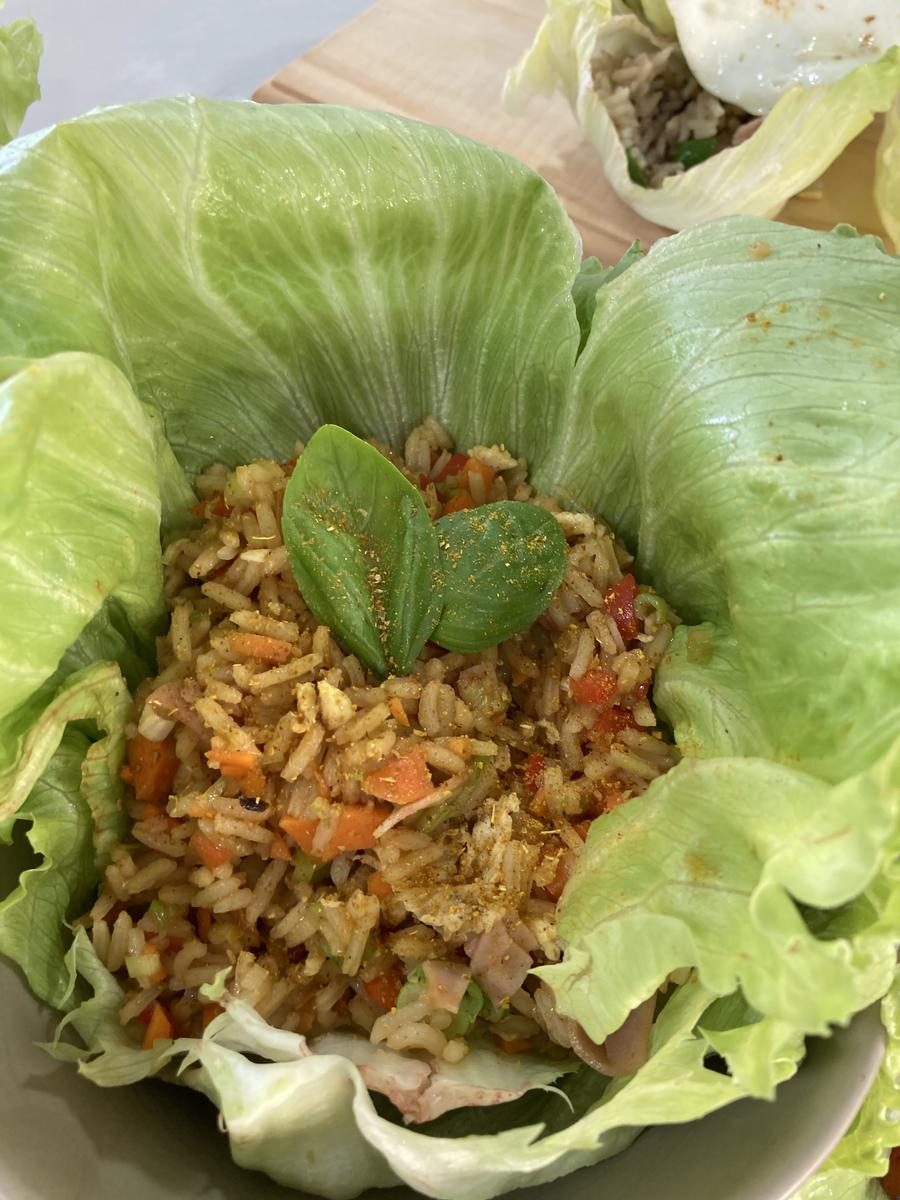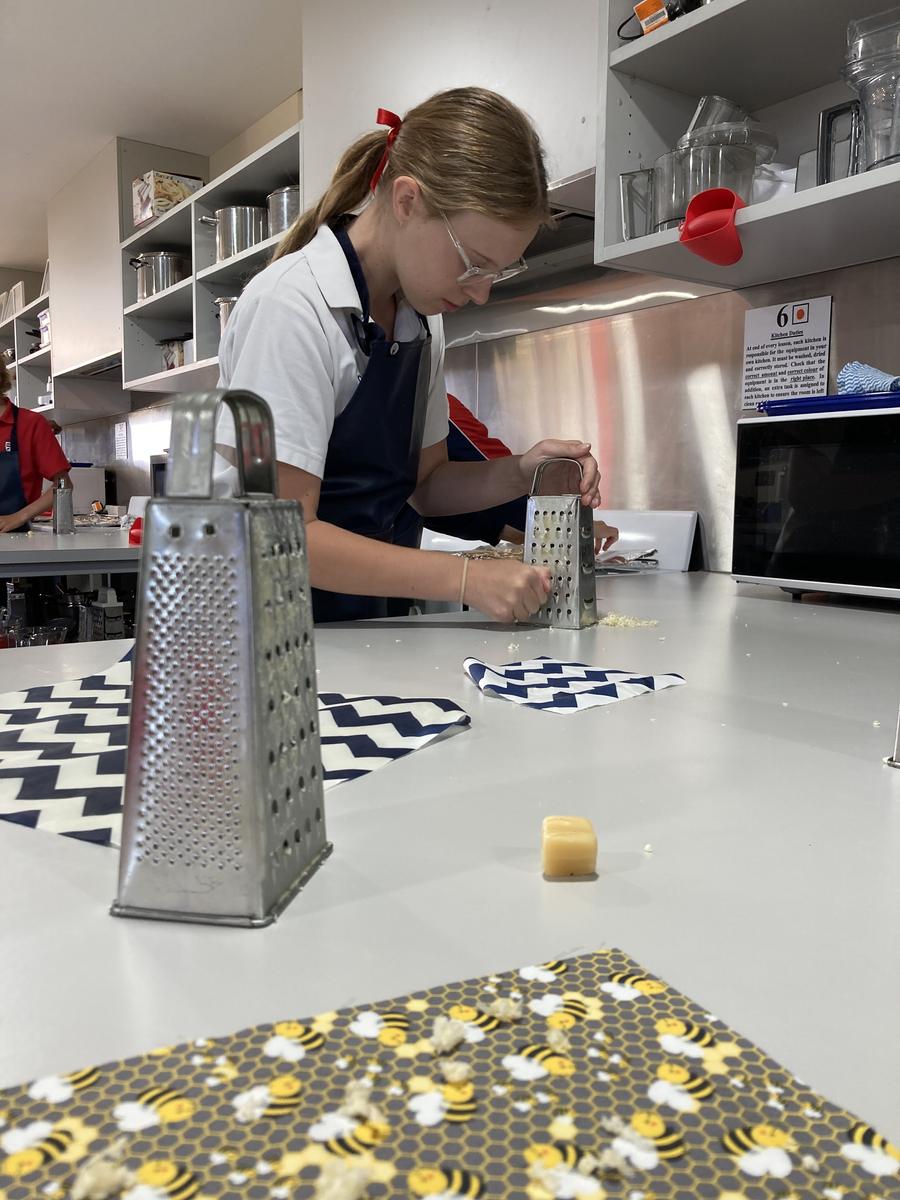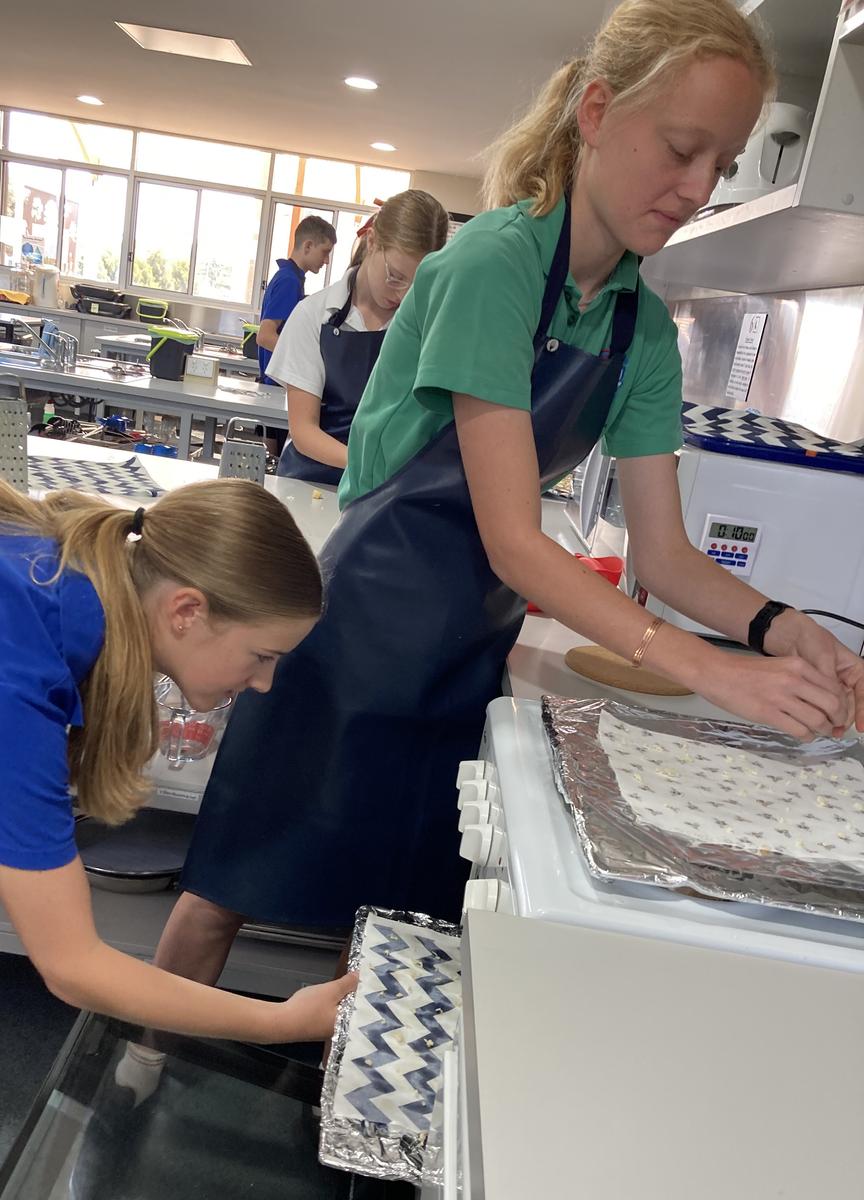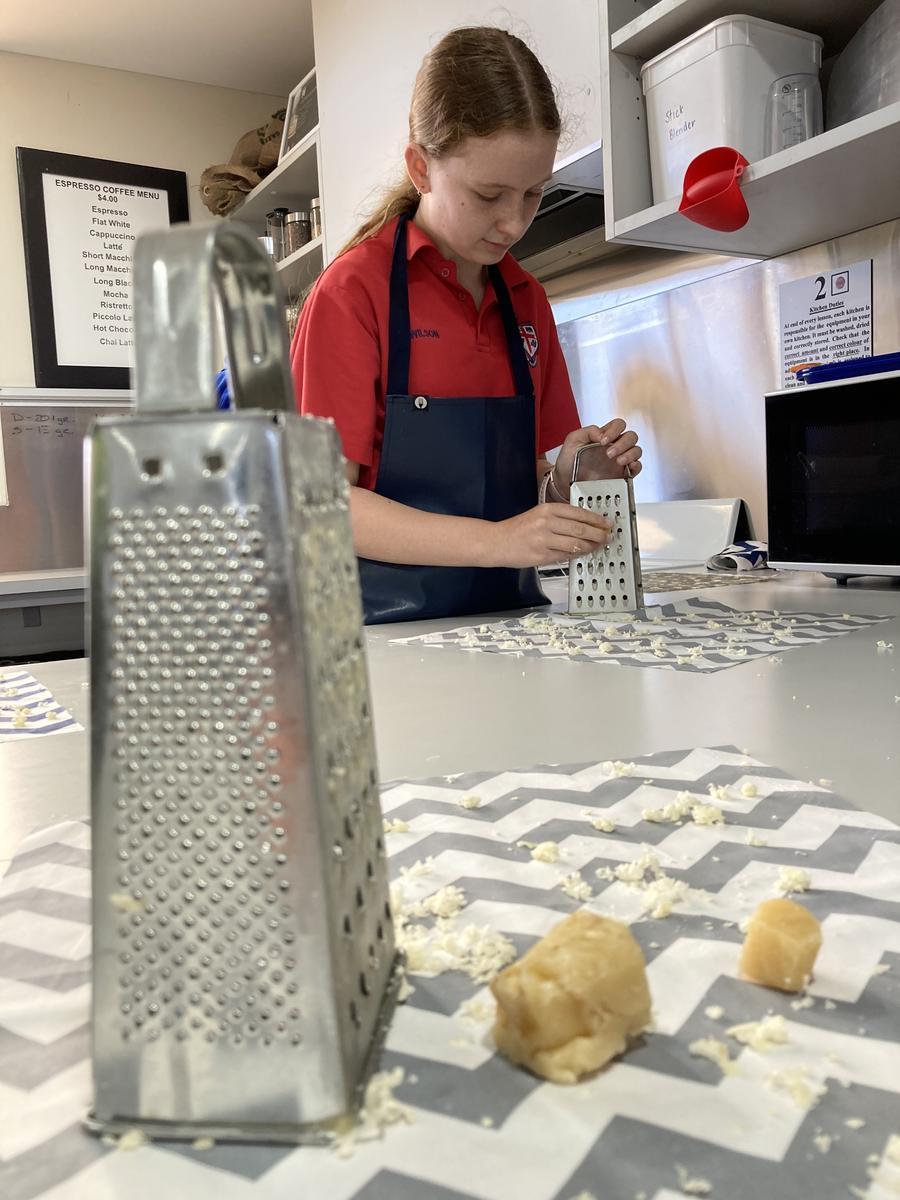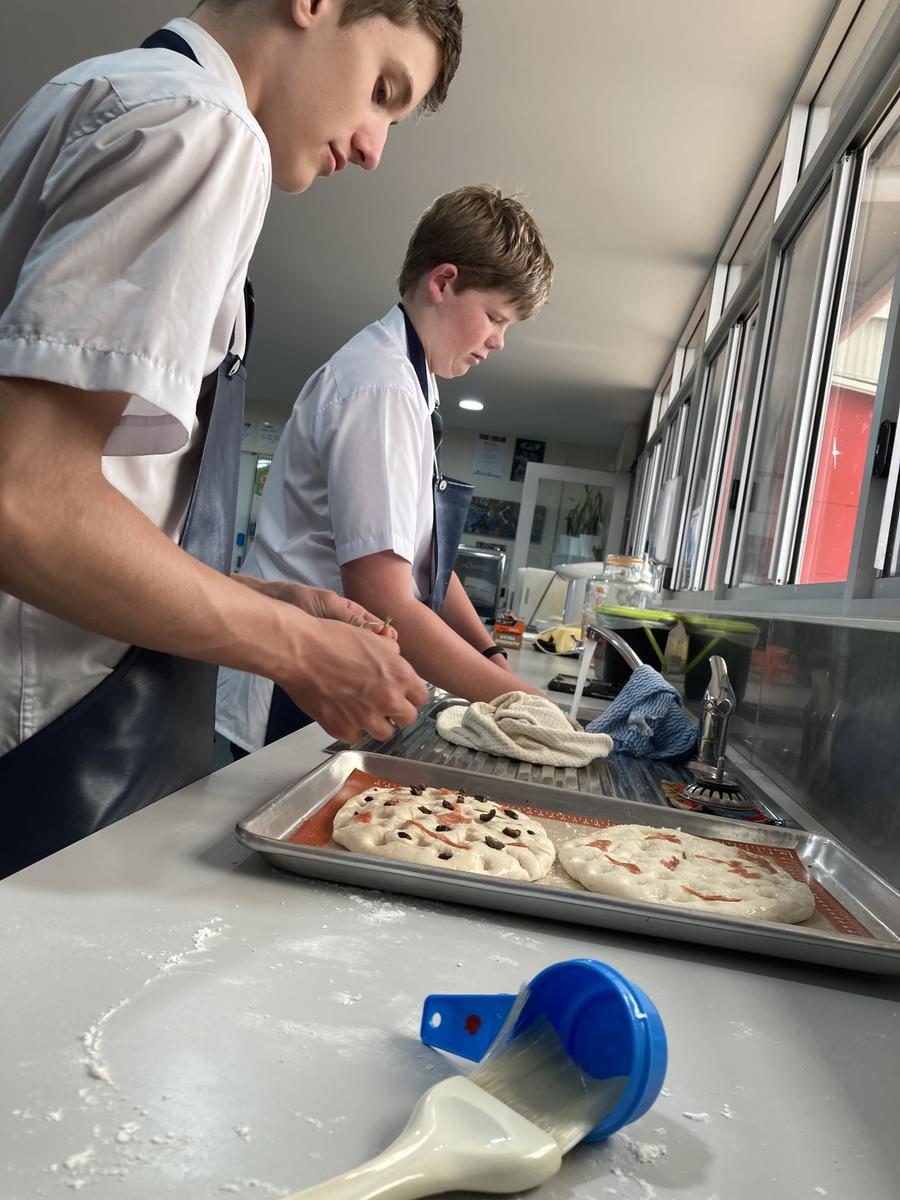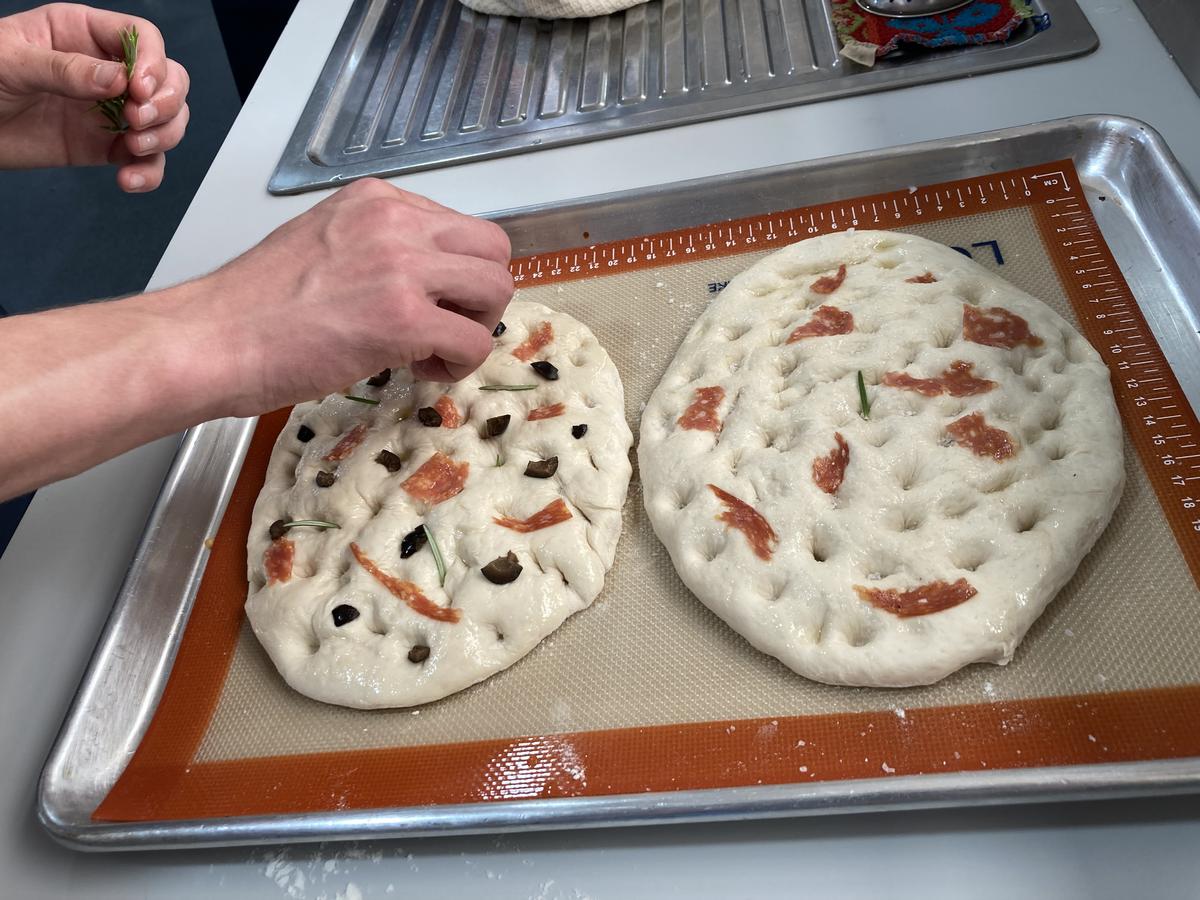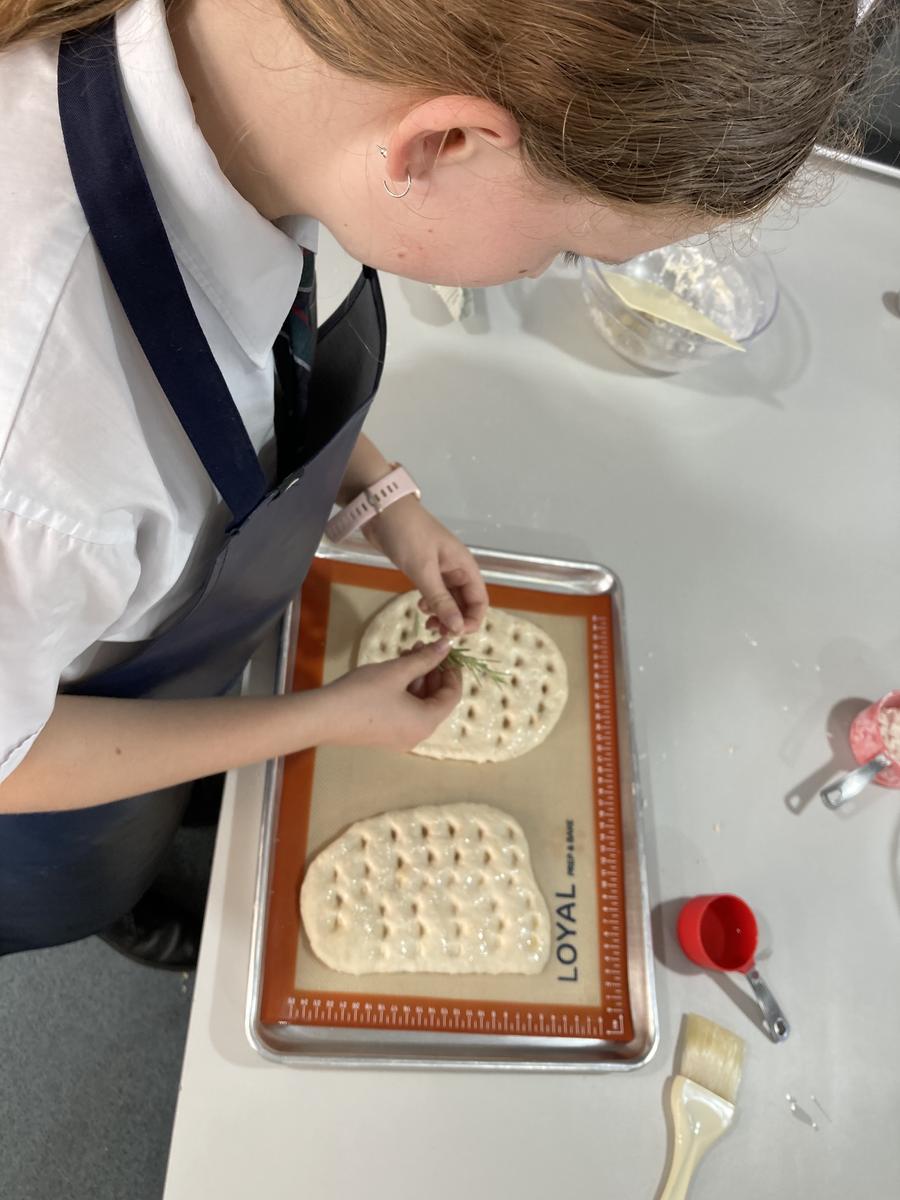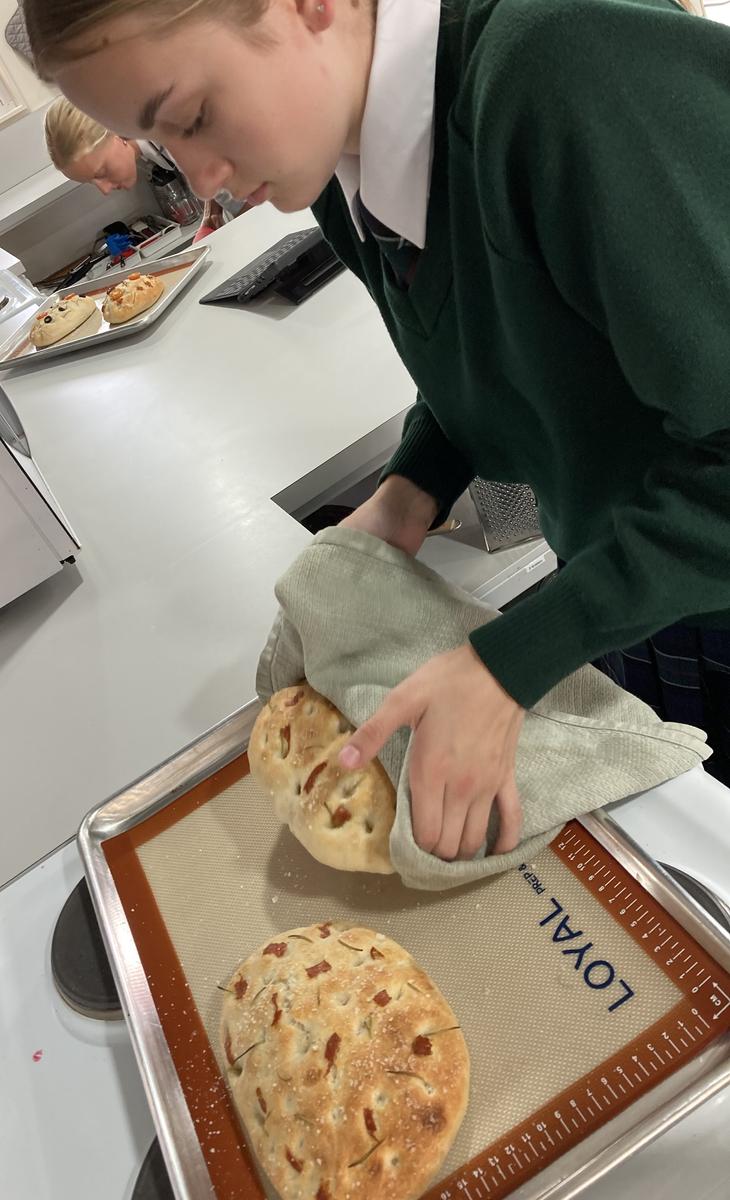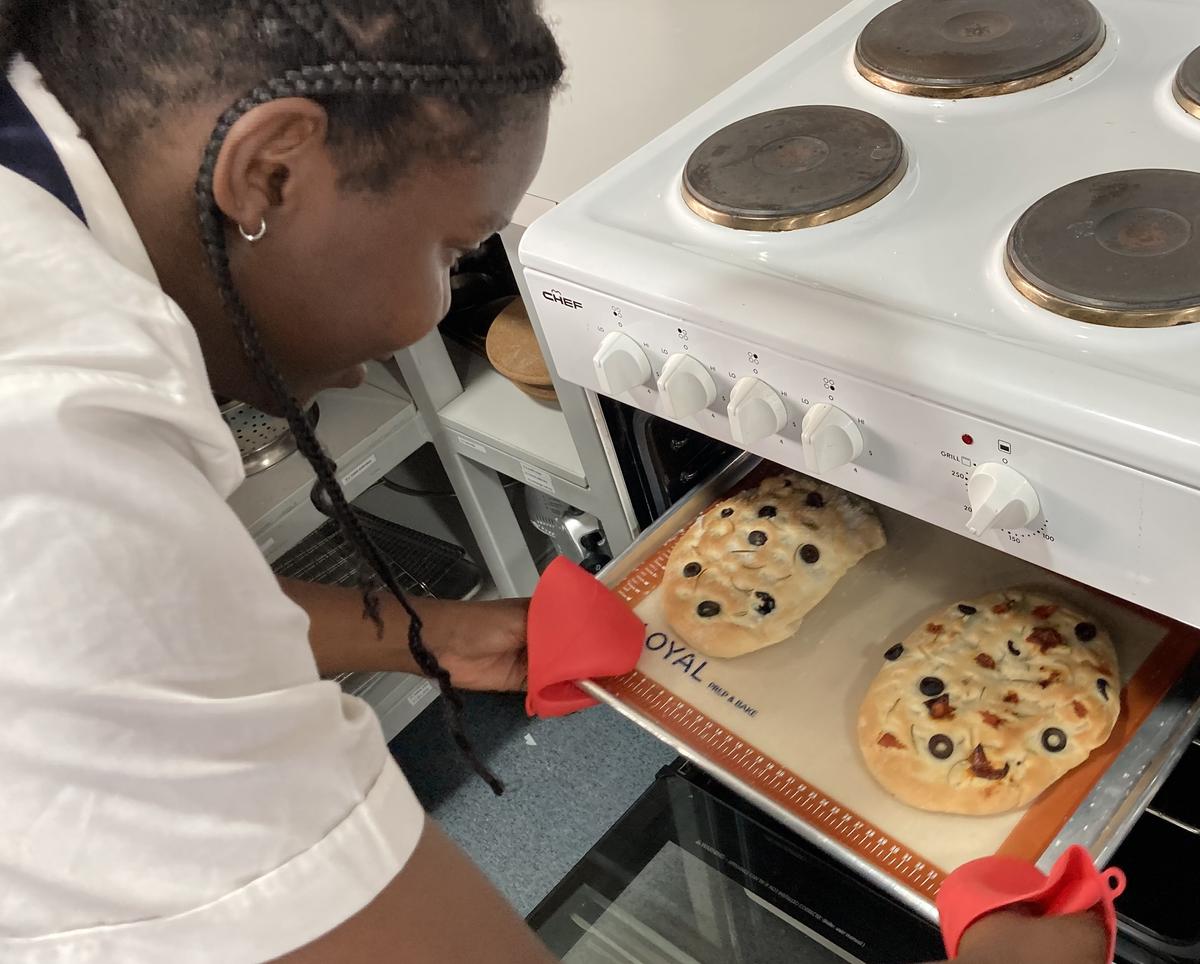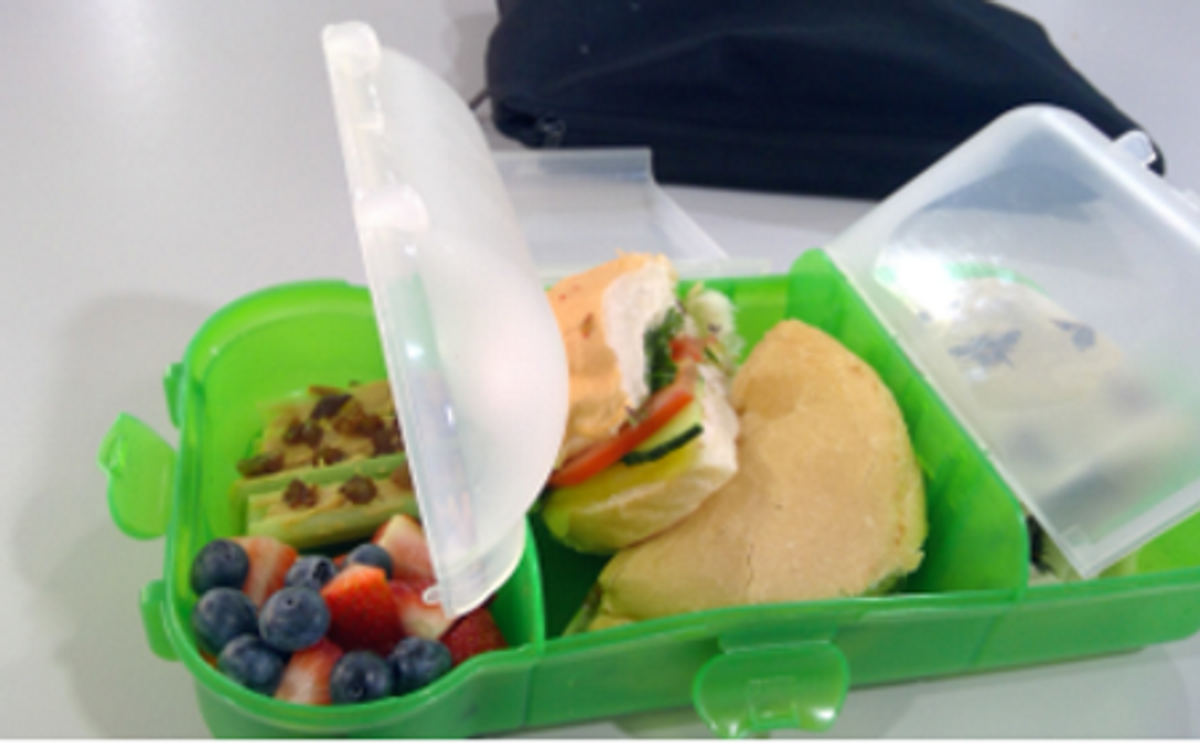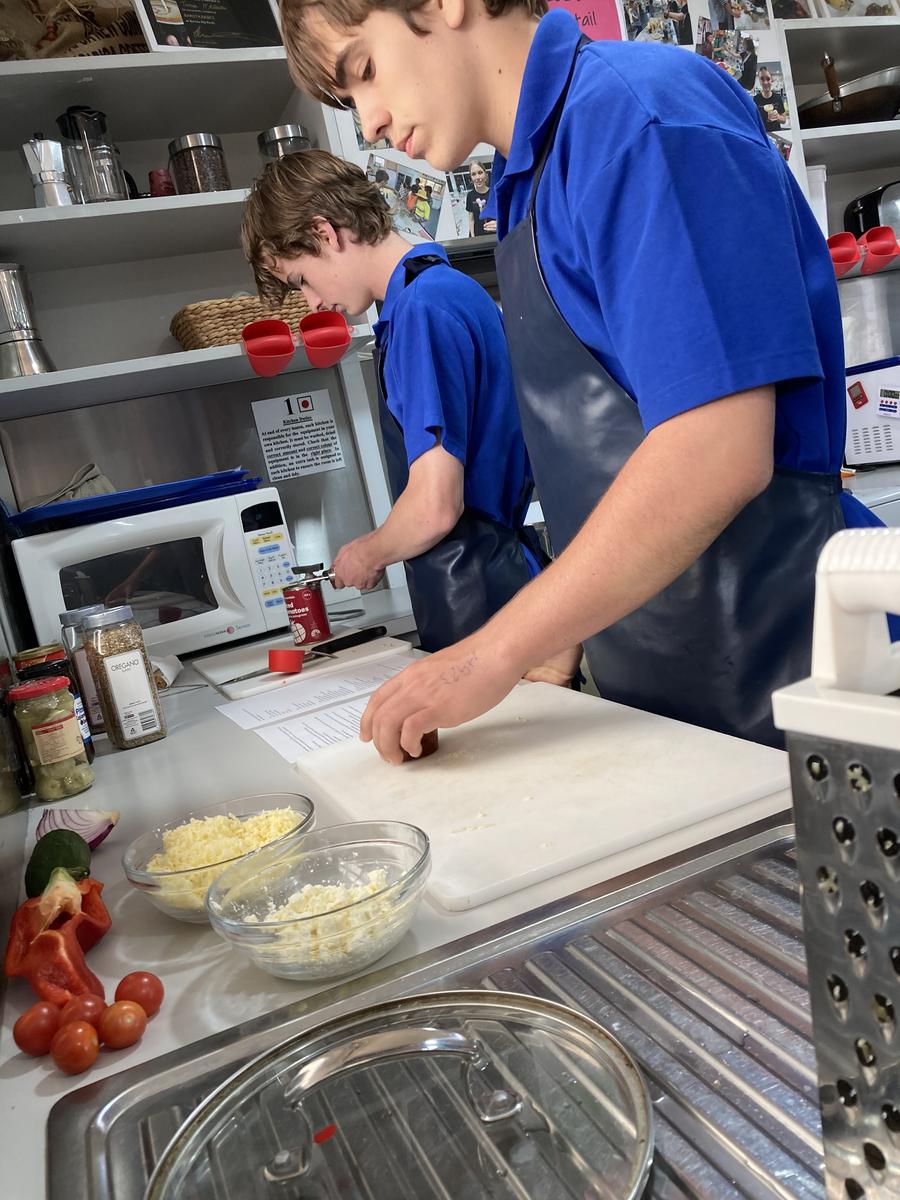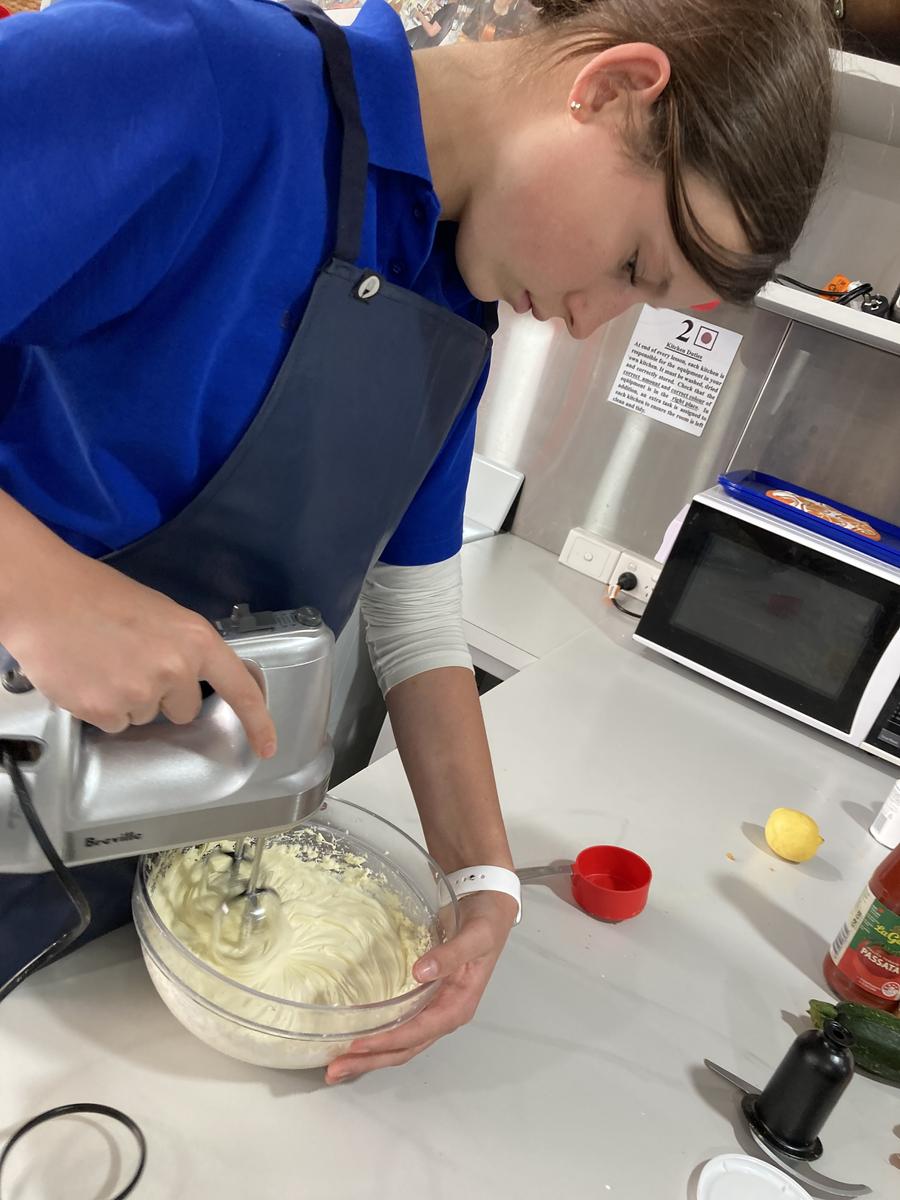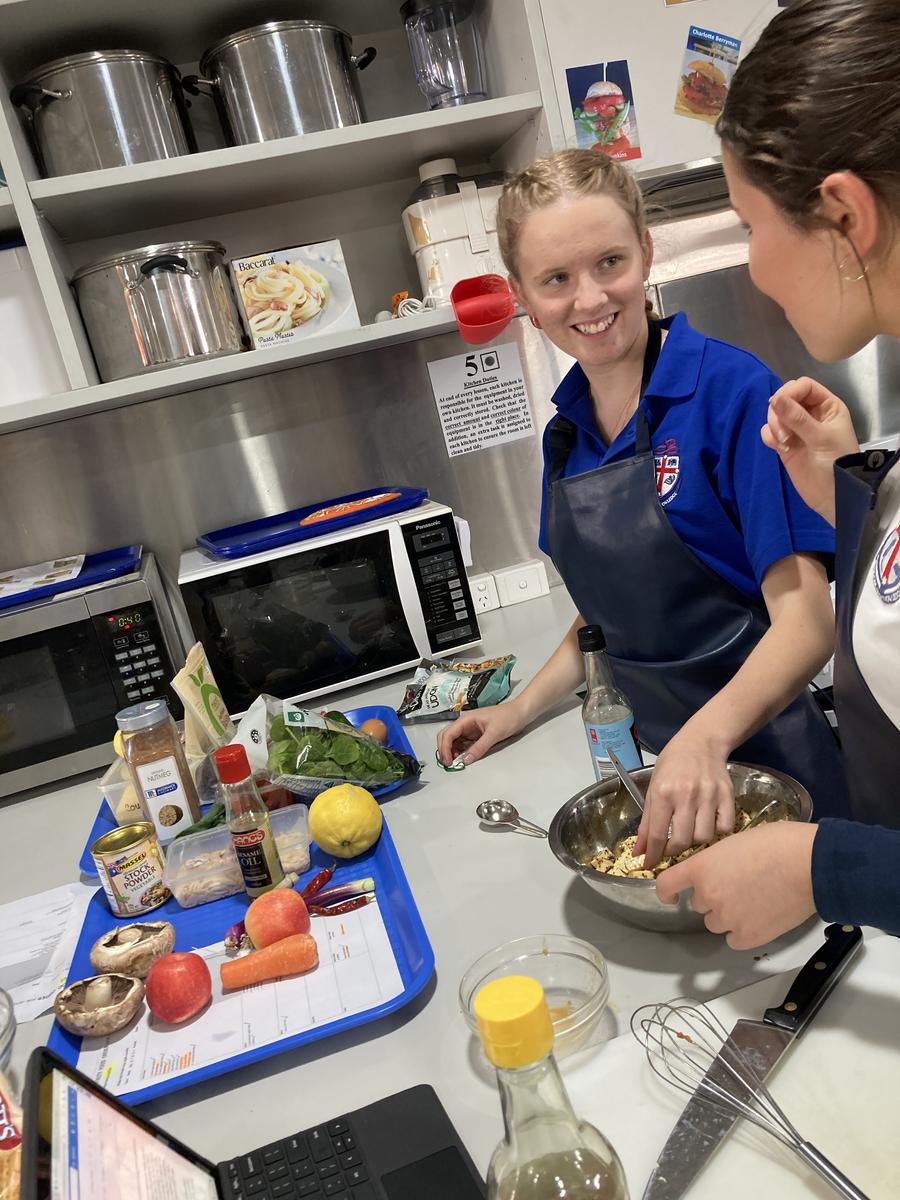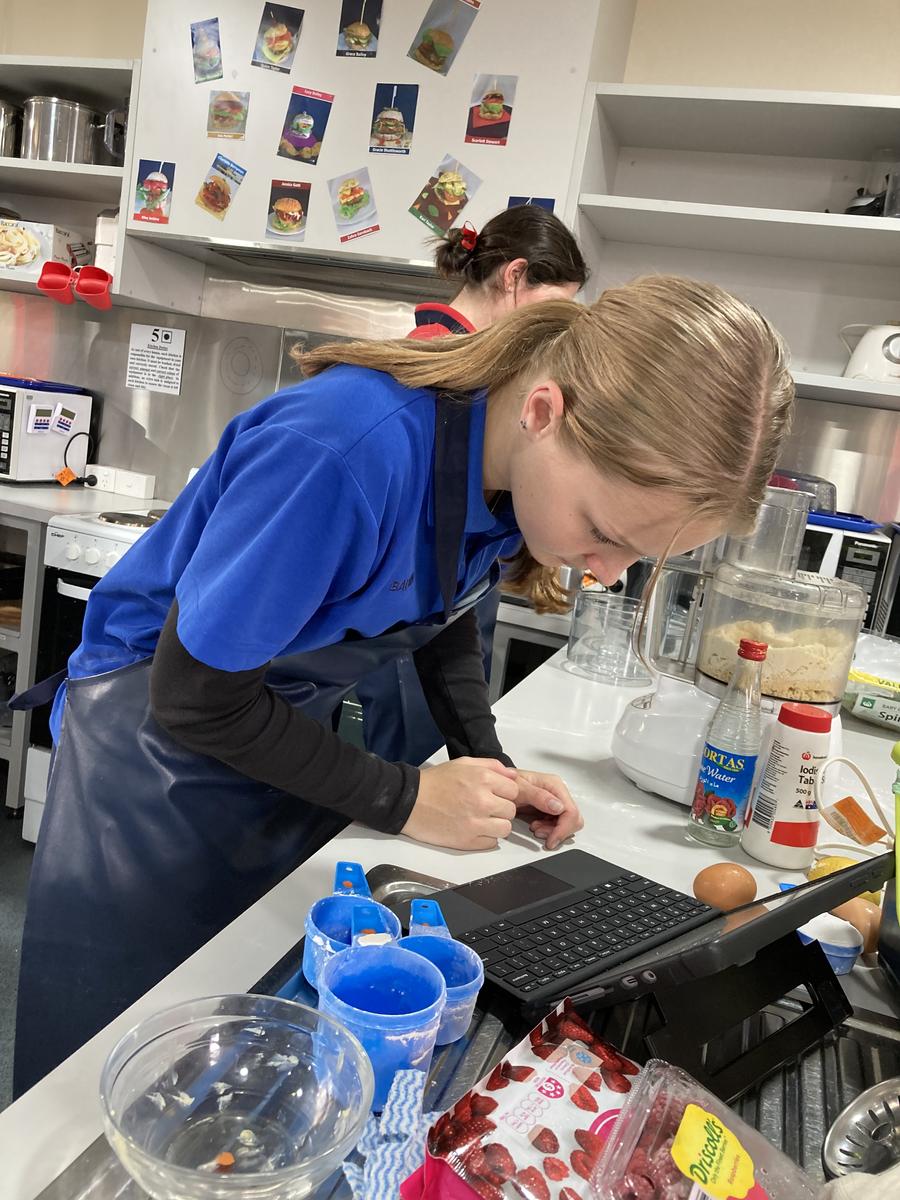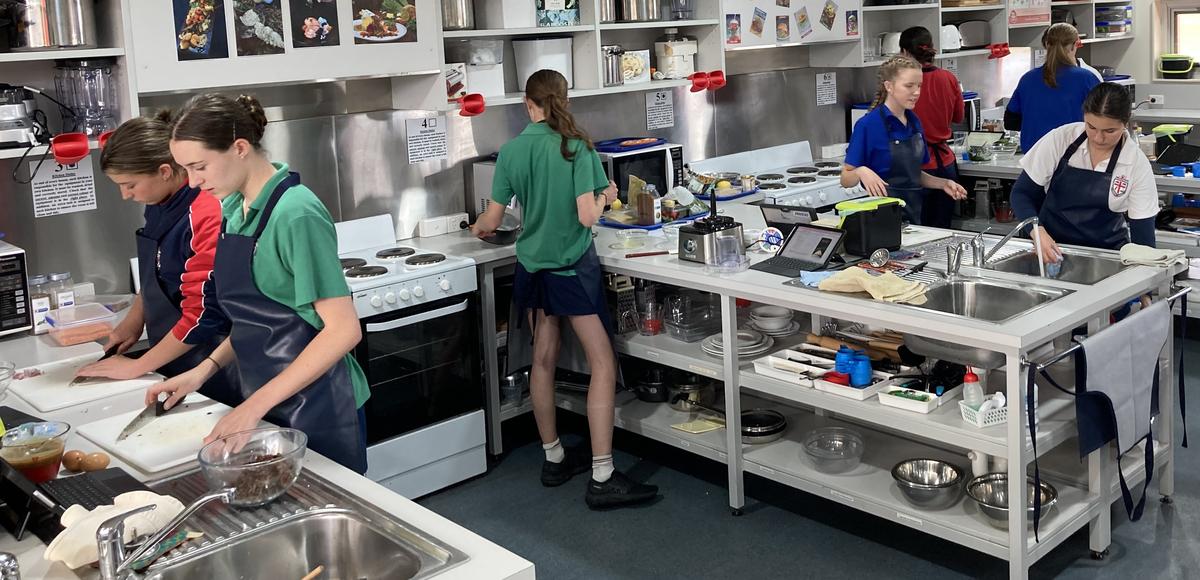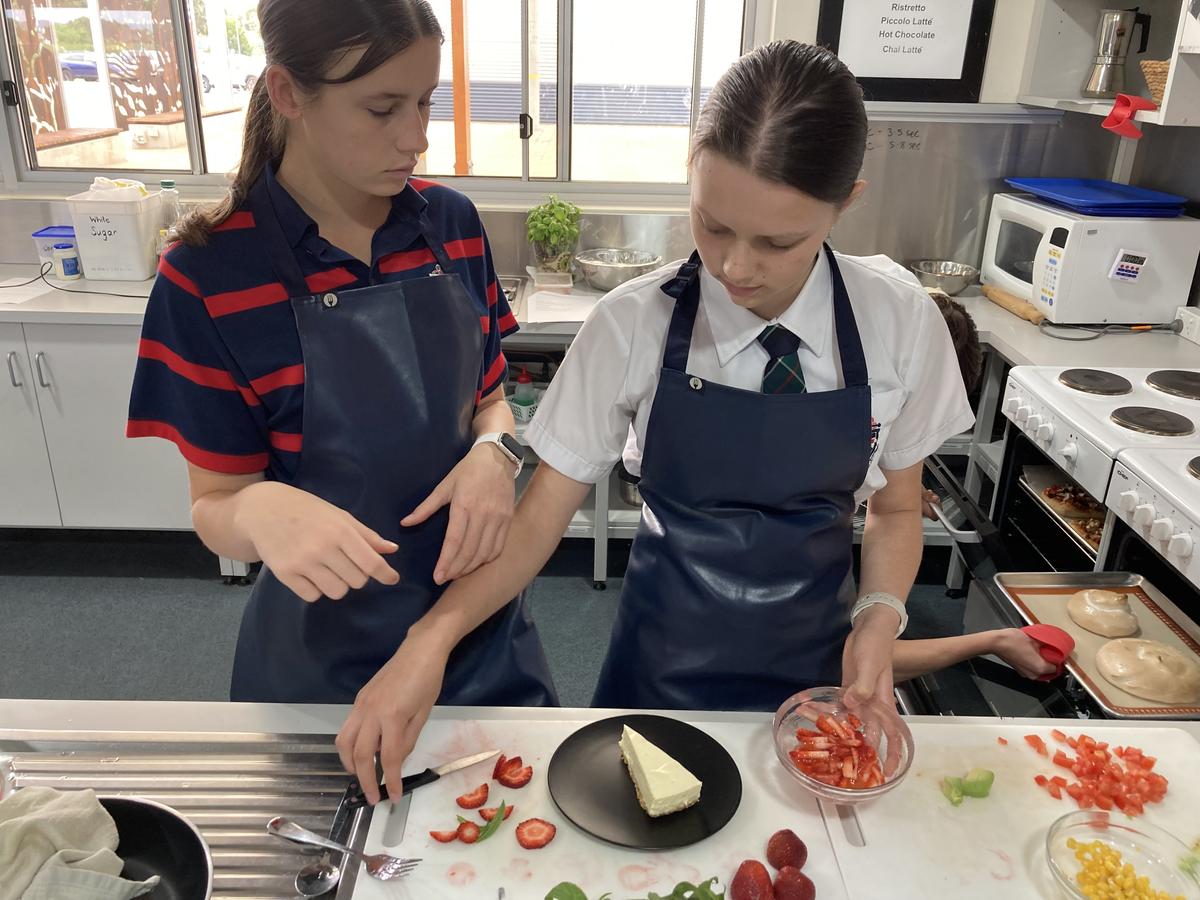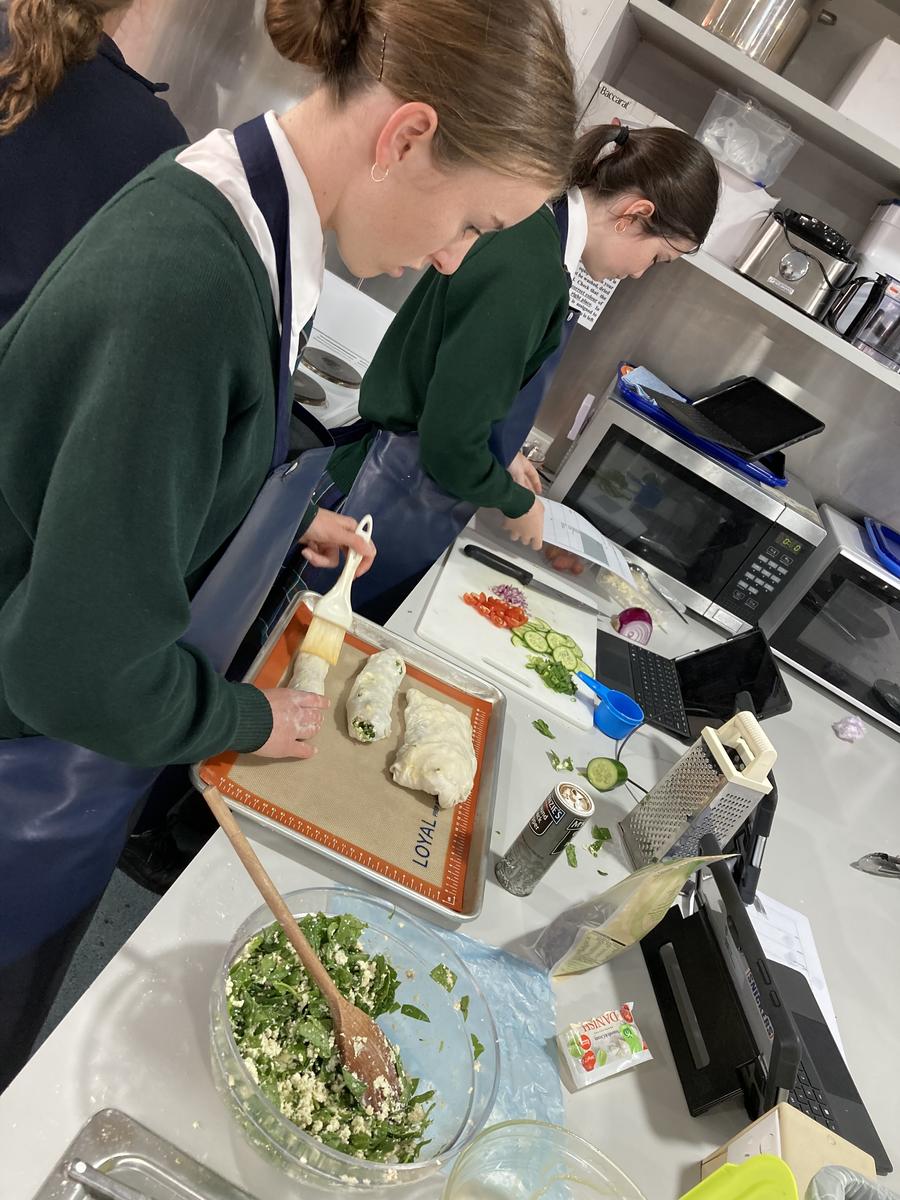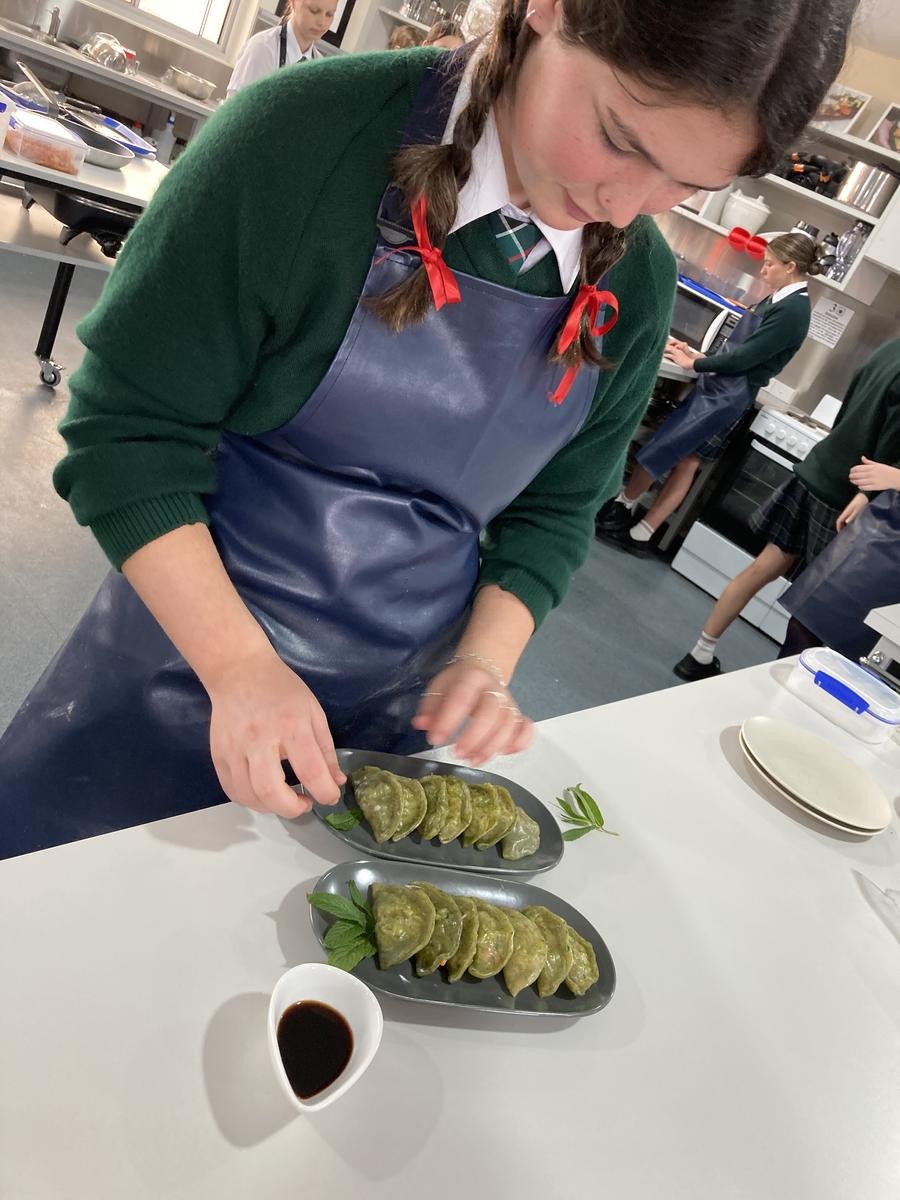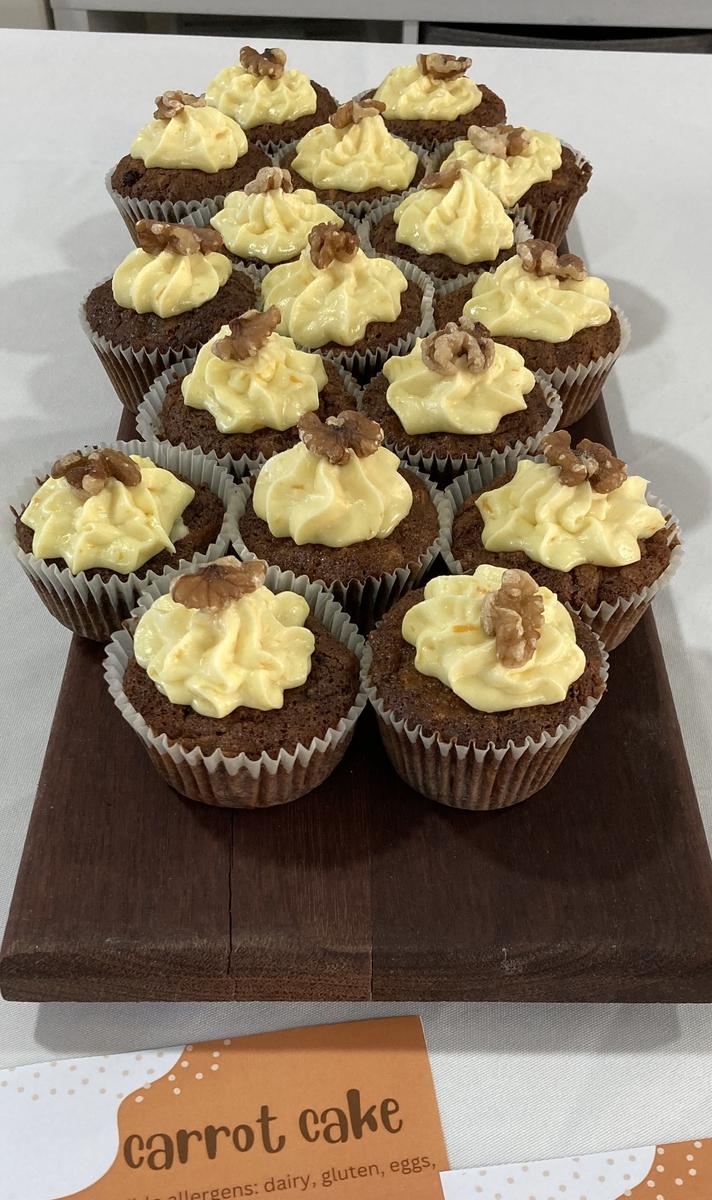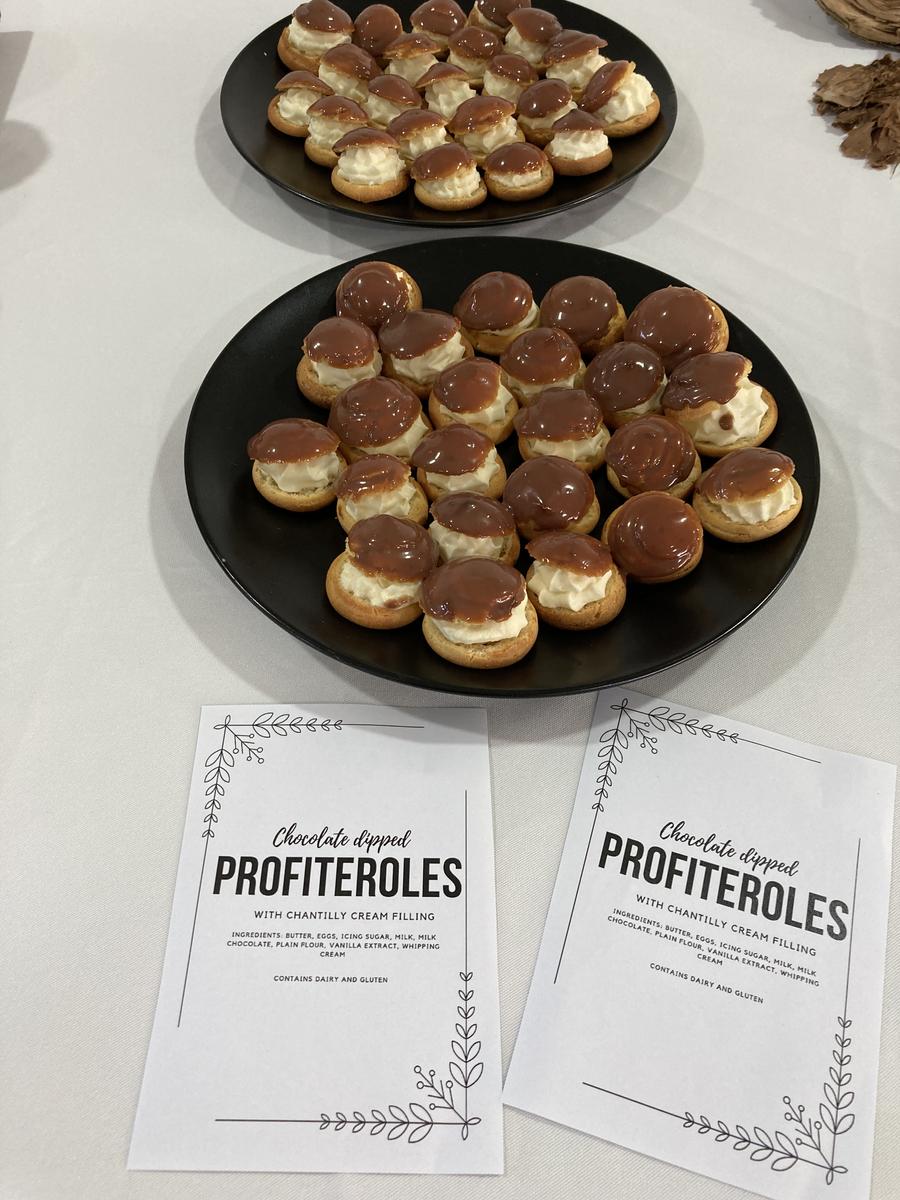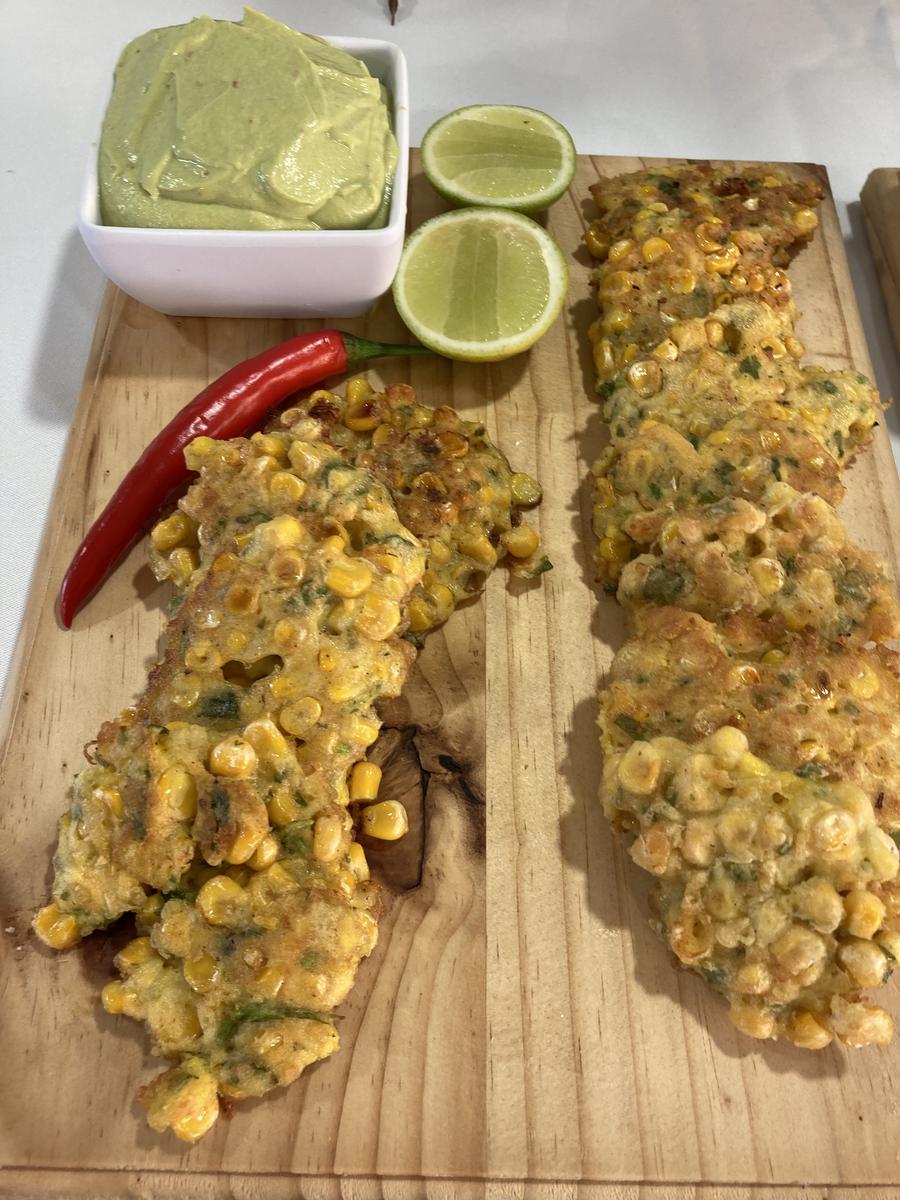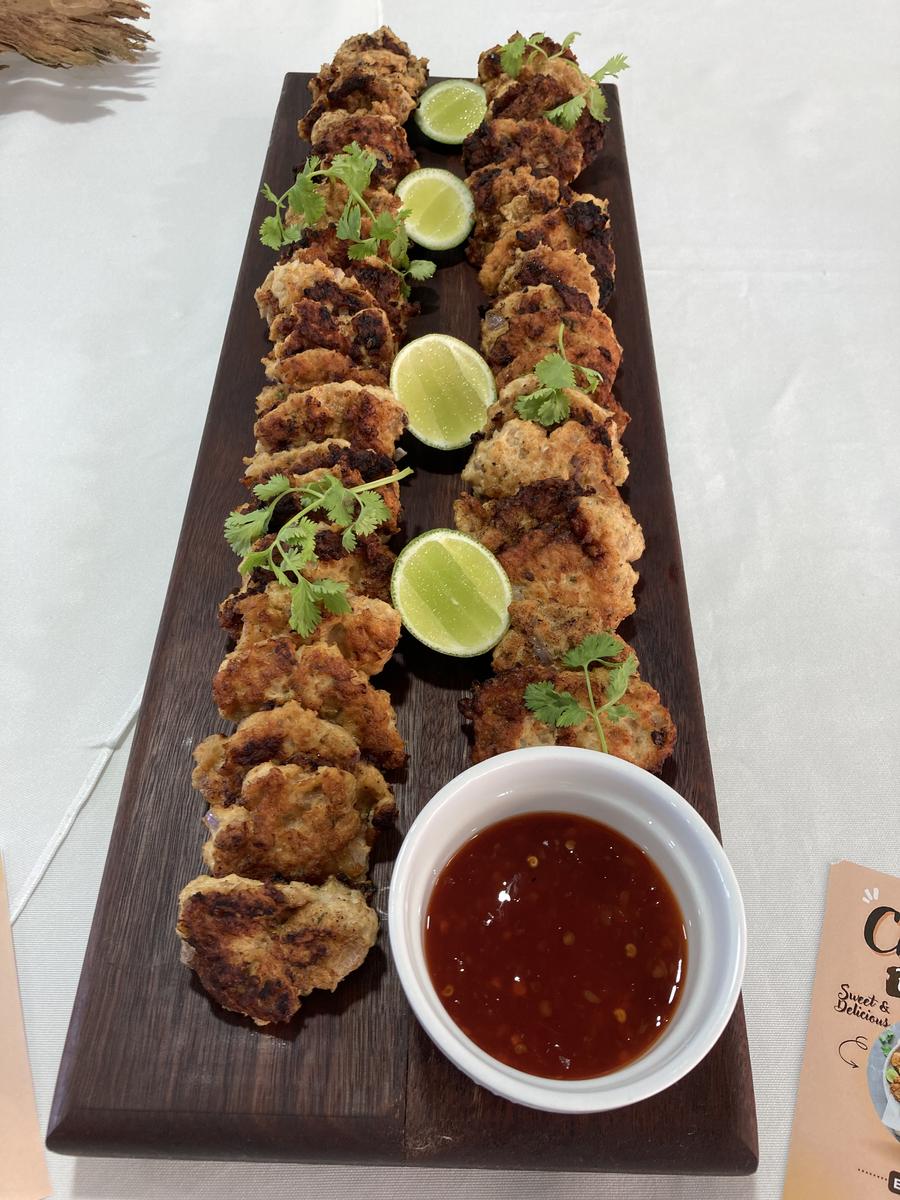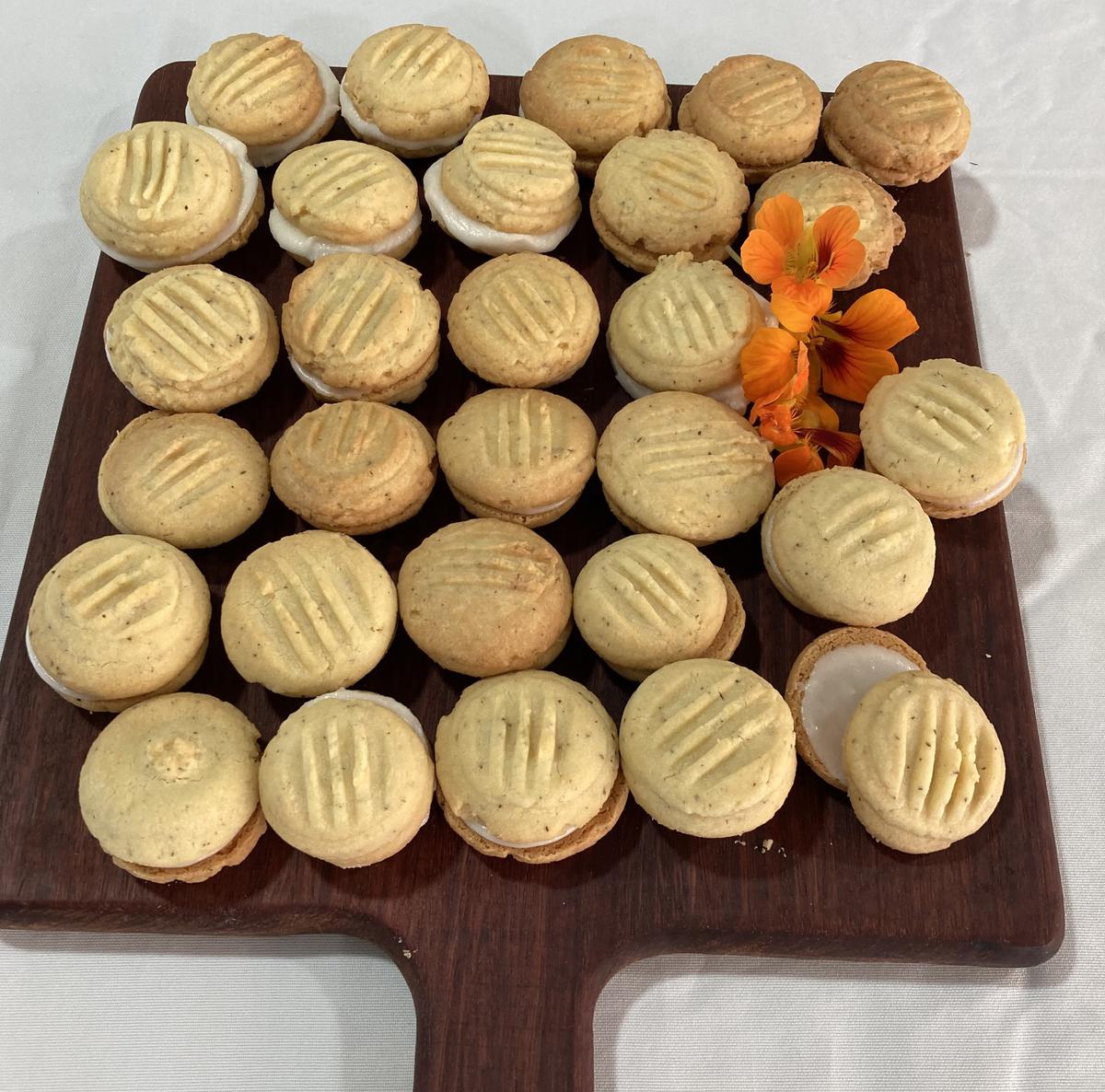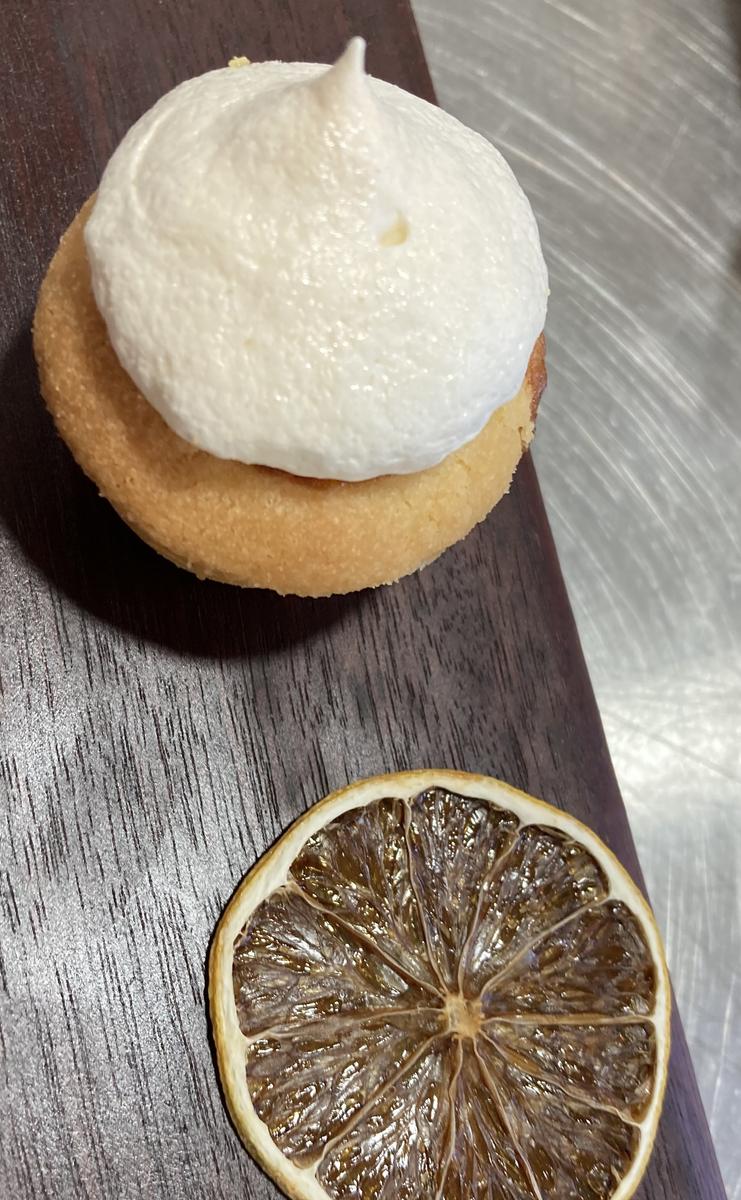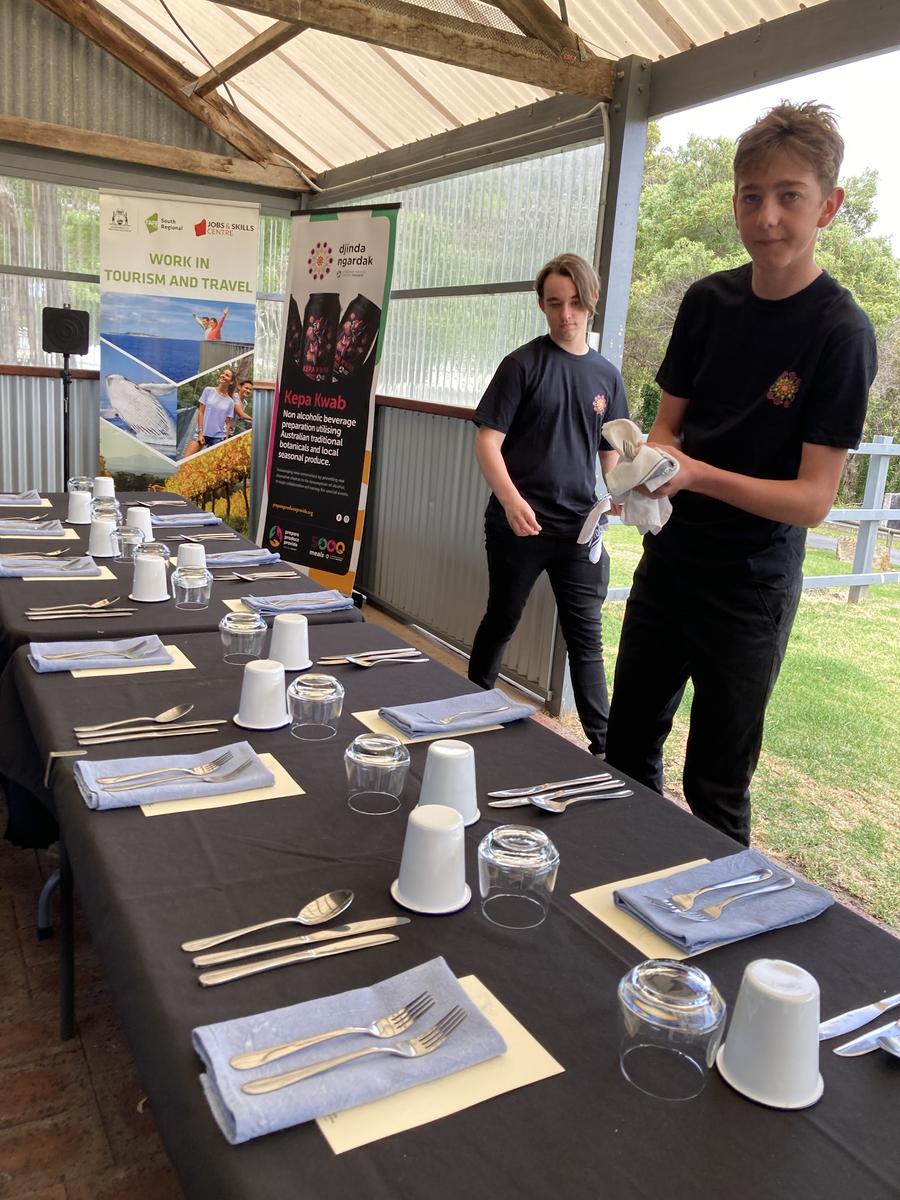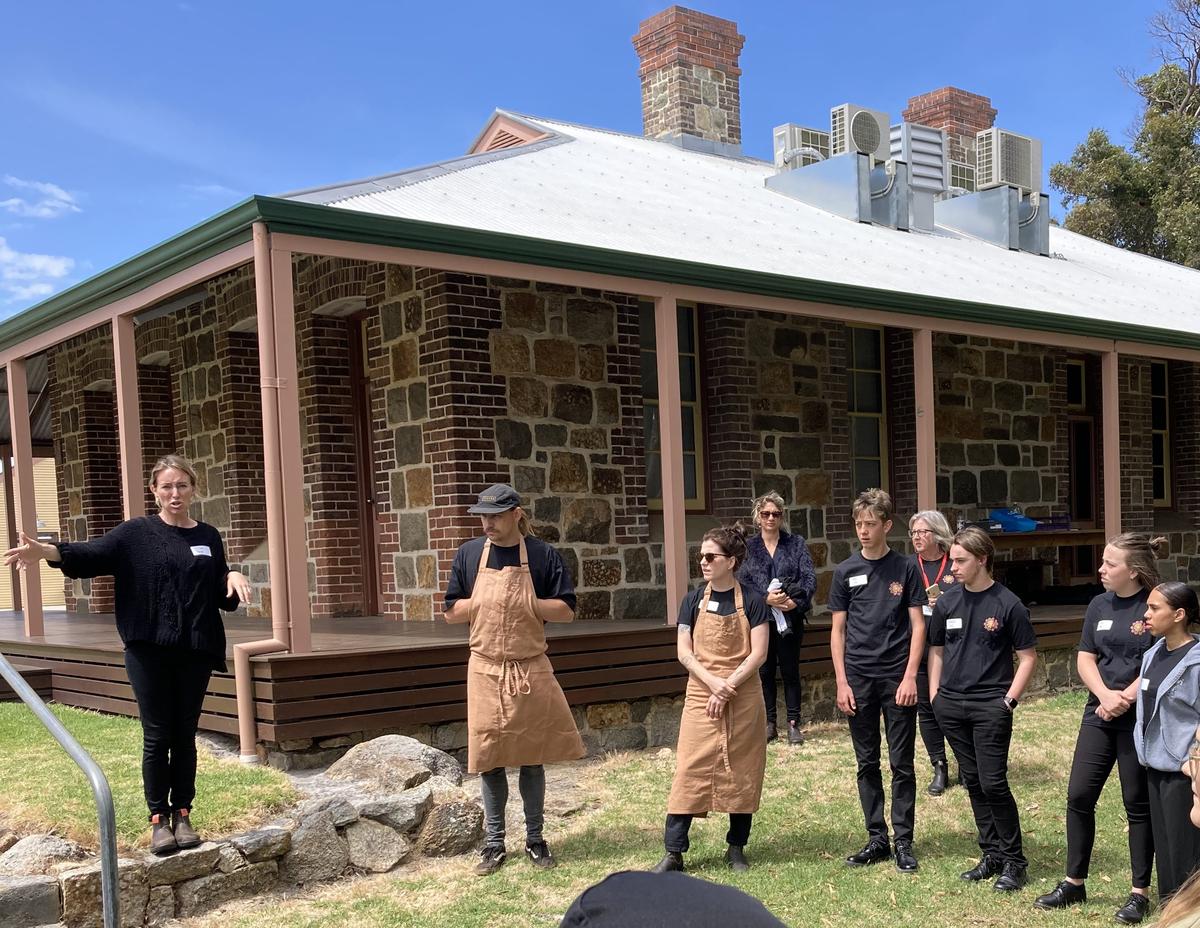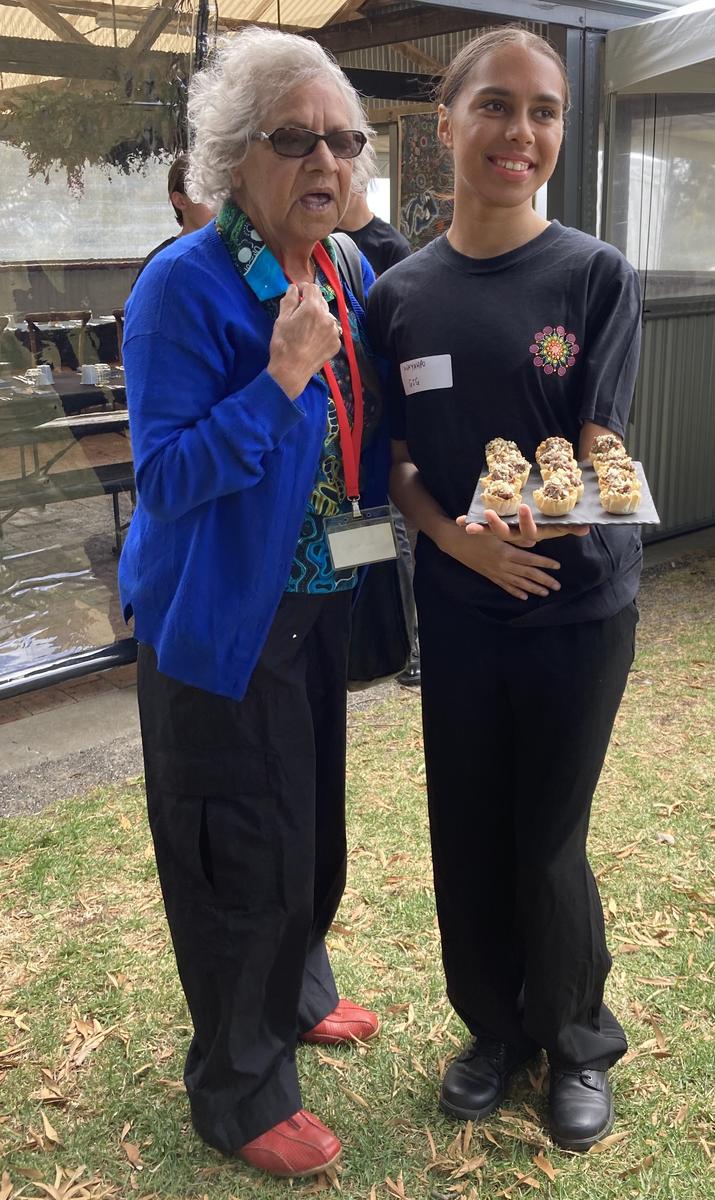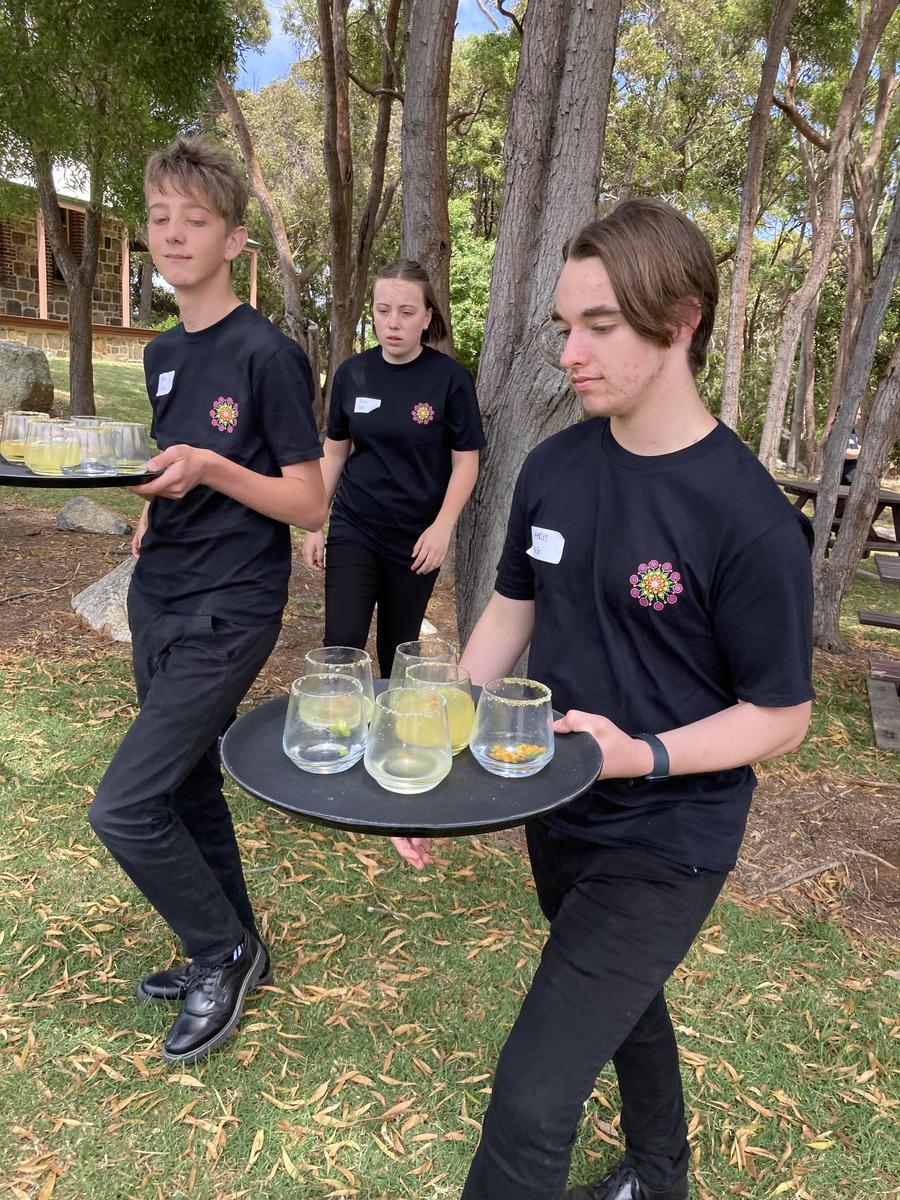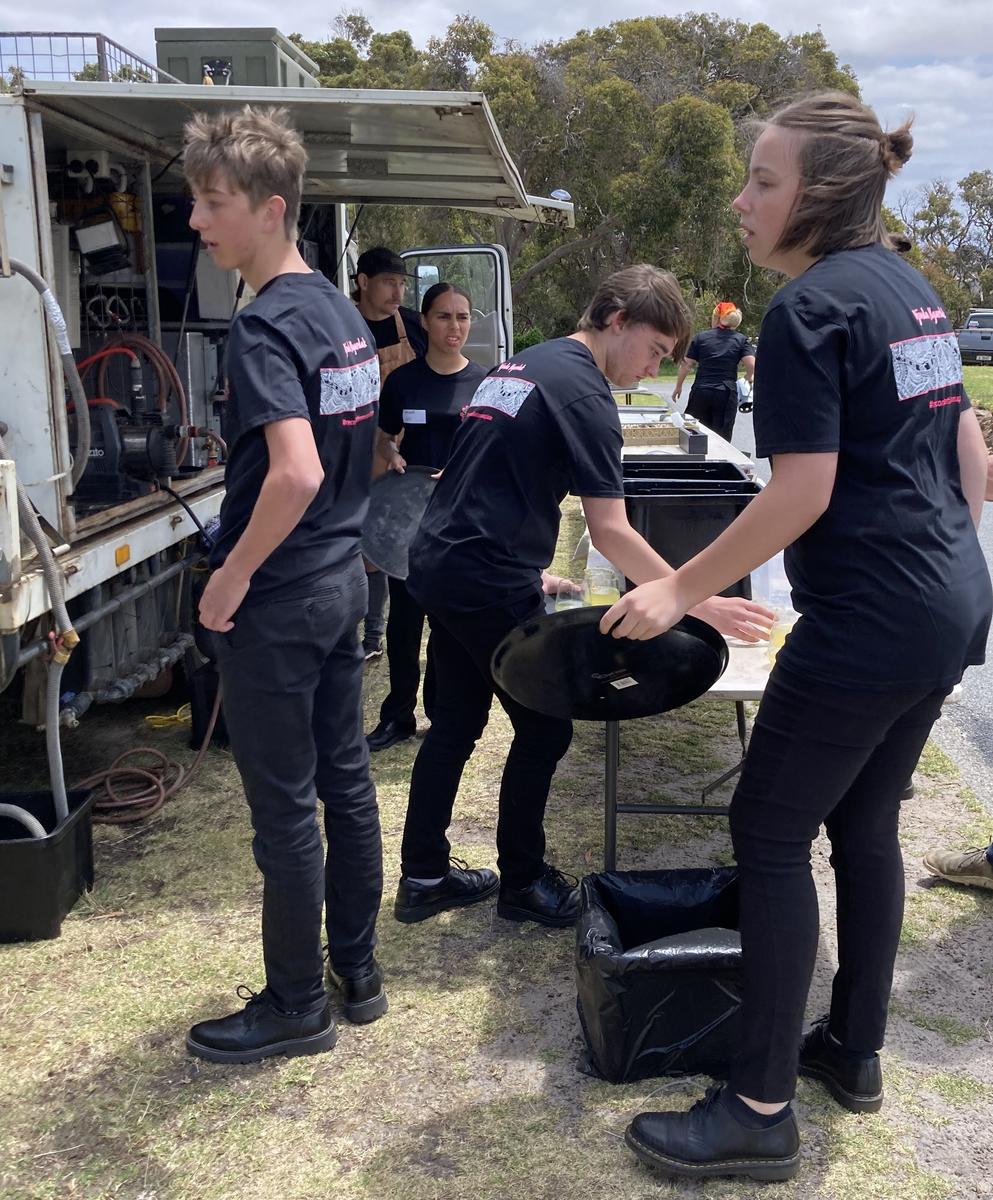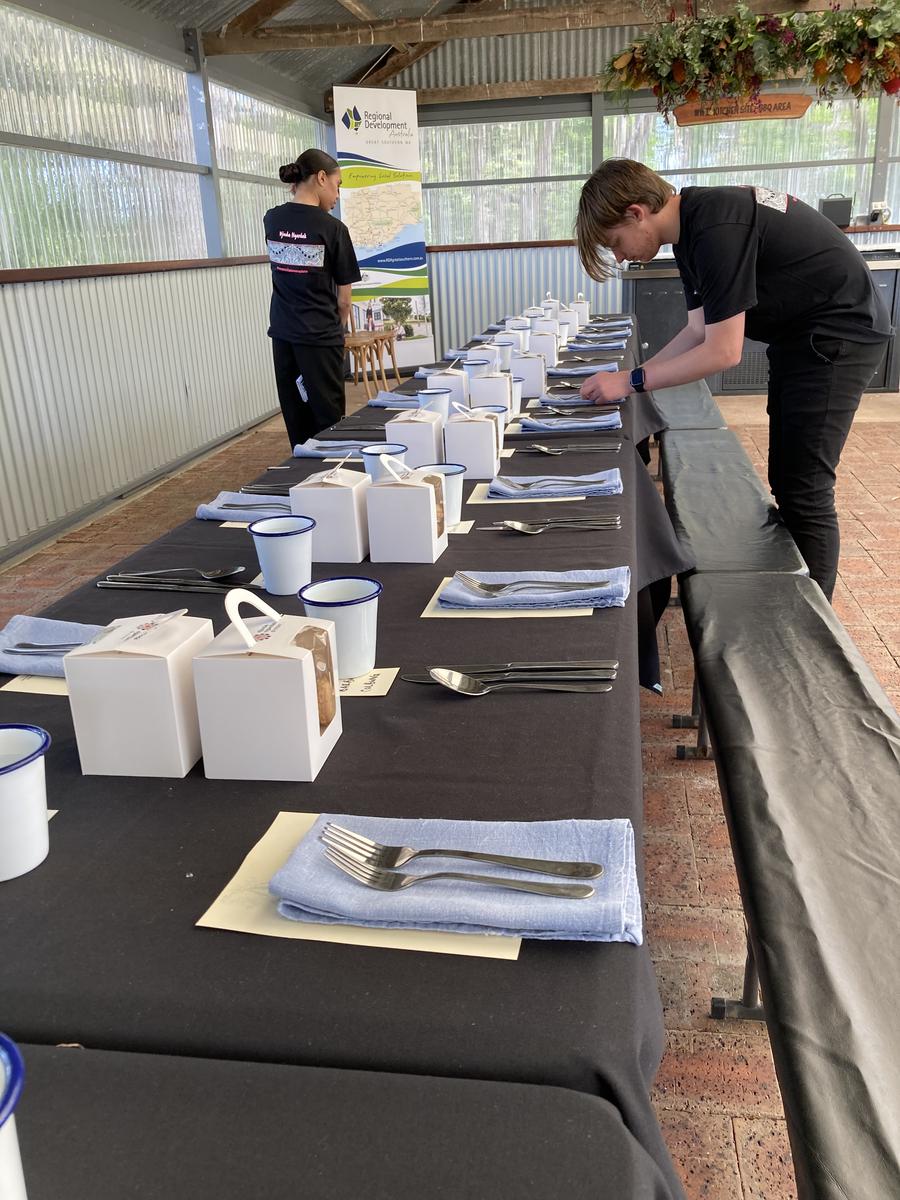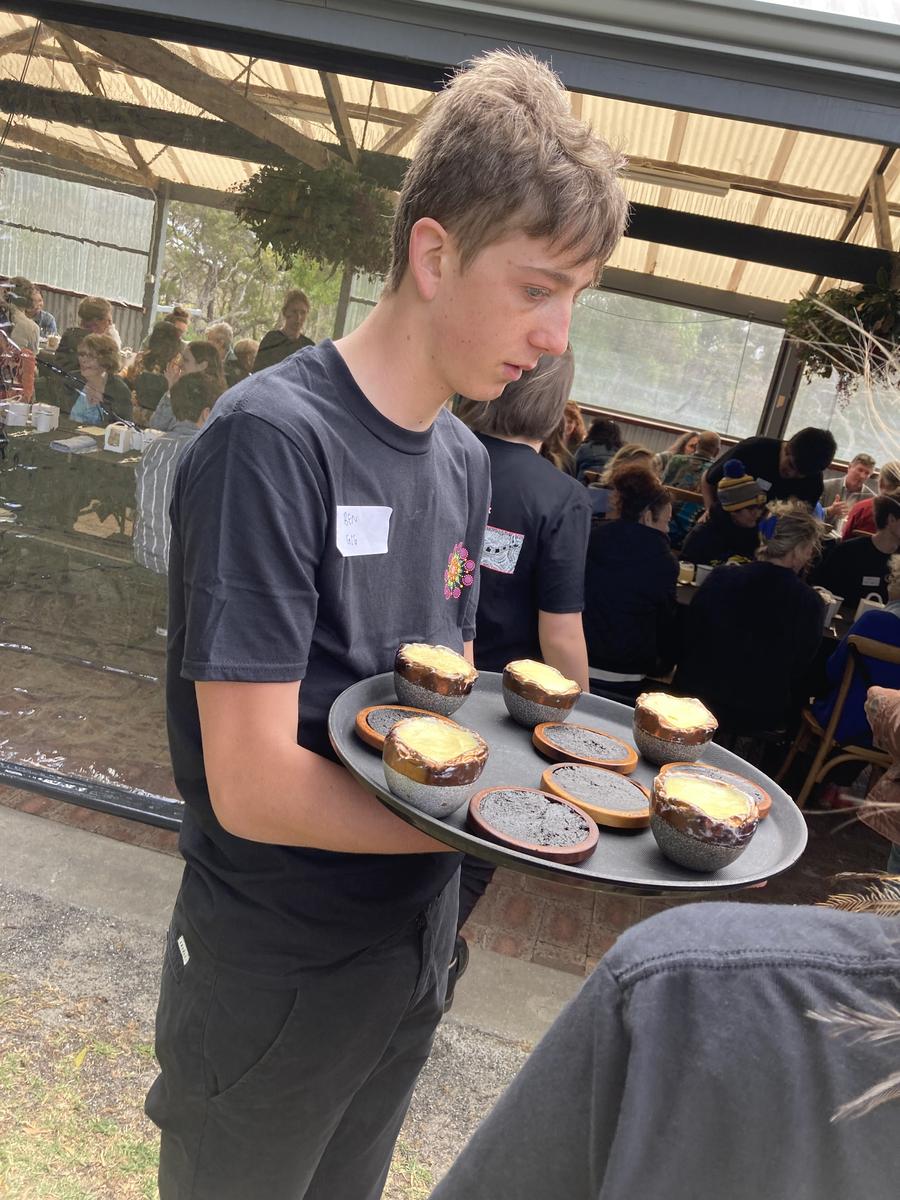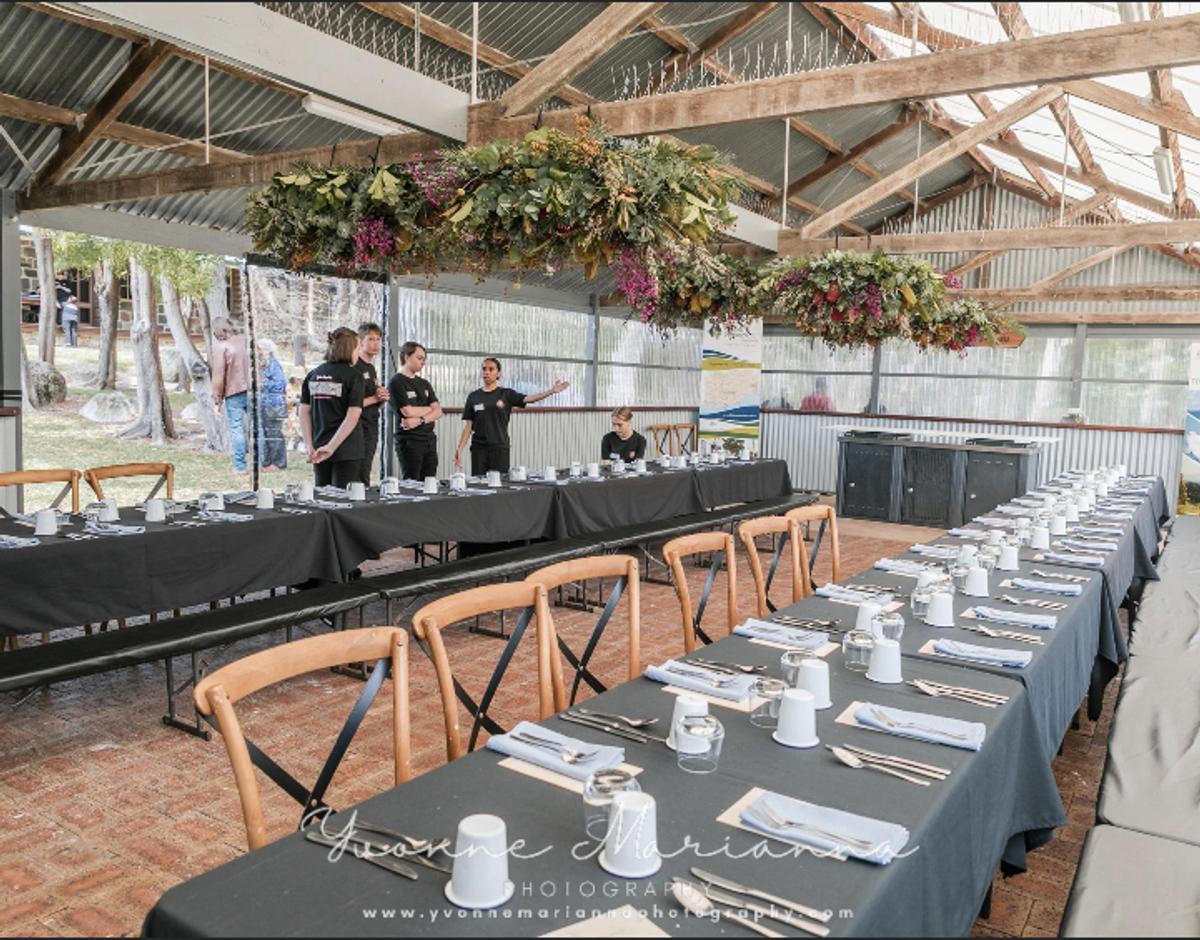Technologies News
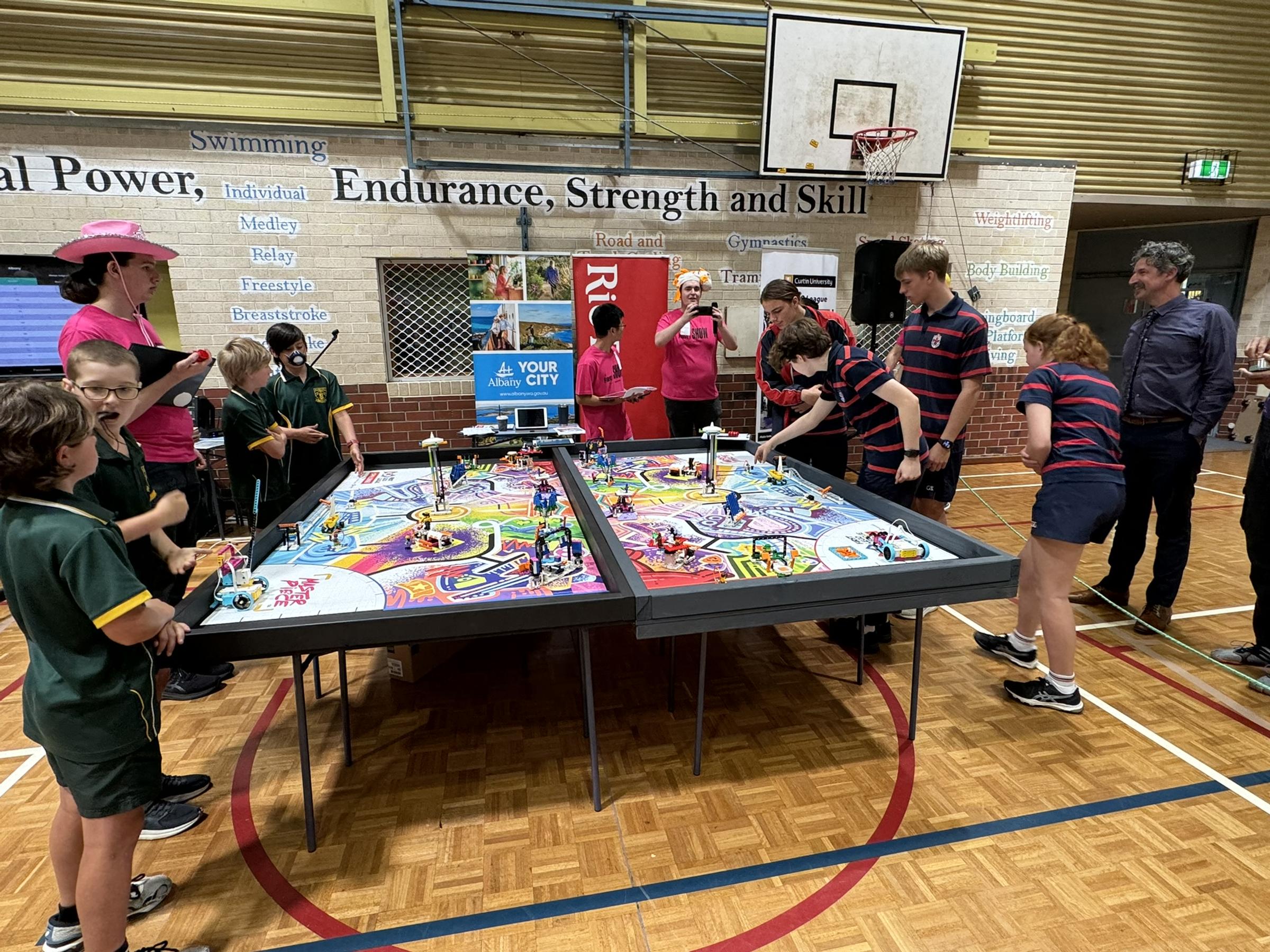
Year Nine STEAM - First Lego League Challenge
On Wednesday 22 November the Year Nine STEAM (Science Technology Engineering Arts Mathematics) class competed in the First Lego League Challenge. First Lego League Challenge is an international problem-solving and coding competition consisting of four main components: an innovation project, designing and creating a Lego robot, coding the robot to complete missions, and demonstrating the core values essential to the First Lego League.
We arrived at school at 8.20am and piled into a bus that would take us to NASHS where the competition was taking place. Upon arriving we got straight into practicing and preparing for our first robot challenge. This involved making and improving the robot's code to perform the set-out tasks. During our first challenge, the robot completed one of the tasks successfully without any interference from us, scoring us 60 points. We had a short break to gather ourselves and then presented our innovation project to a panel of three judges. During this presentation, we all spoke about the problem, our solution, the robot and the core values. We listened to feedback and answered questions from the judges.
Innovation Project (Maddie Ellis, Year Nine)
The innovation project was all about working as a team to decide on, investigate, and solve a problem in art. Our team’s problem was accessibility in museums, focusing mainly on the visually impaired. We investigated current museums and their accessibility while planning what we can do to improve it. Our research led us to come up with a magnetically levitating vehicle. This vehicle includes an AI (Artificial Intelligence) museum guide that can answer questions, describe artefacts, and light up exhibits to illuminate artefacts, and a tactile museum that targets the other senses of the visually impaired. We then iterated by designing and prototyping our solution. Next, we interviewed a potential user and a museum professional to seek feedback. We implemented this feedback into our solution, which further improved it. We packaged up our research and design into a presentation, which we presented to the judges at the competition. Our innovation project won the Innovation Project Award!
Robot Design (Harley Duggan, Year Nine)
Our robot started out the day crude compared to others, being a minimalistic shell held together with a couple of Lego bars, and two motors working independently of each other attached to wheels. Plus, a third motor attached to a simple trio of curved rods, acting as a multitool. Other teams had several highly specialised tools to swap out and swap in, which inspired us on the day to really pick up our game. We spent the day iterating new design ideas and used them to gain critical points in each match.
Robot Game and Missions (Tian Bray, Year Nine)
Each team competes to code their robot and complete up to twelve small missions on The Lego Challenge Table to earn points under time constraints. The coding language we used is called SPIKE, a block coding language similar to Scratch or Microsoft Makecode Arcade - but more specifically designed to connect with the motors and sensors in the robot. We coded our robot (Roboticus Robertine) to perform pushing and pulling actions by positioning its' arm around the object, and then moving it forwards or backwards. Starting the day off with only one mission coded with a moderate success rate, we weren't too optimistic for this part of the challenge. We rushed to code as many missions as possible in the time between our matches, with marginal success, until disaster struck! Our robot conveniently decided to wipe his memory, containing all our code, and the computer holding the code also crashed. Despairing, we went to the judges to announce our forfeit, but they moved our next match to give us one extra hour to re-build everything from the ground up. We frantically re-coded Roboticus Robertine as fast as we could, trying our best to remember fragments of the lost code. By the end of the day, we managed to coerce Roboticus Robertine into completing four missions, winning us a huge 160 points. This dramatic turn of events definitely stressed us out in the moment, but we felt even more accomplished when we finished so successfully.
Core Values (Milou Buis, Year Nine)
The core values in the First Lego League Challenge underpin everything we do; they are: teamwork, inclusion, fun, discovery, and innovation. In earning points, we needed to demonstrate how we enacted the core values. Our examples of teamwork, inclusion and fun were highlighted when we made and painted a custom Lego Robotics Table together, which everyone enjoyed and had an important part to play. We also showed innovation and discovery when we were researching and producing solutions for our Innovation Project as well as for our Robot Design and Mission strategies.
We as a team have certainly gained a lot from our experience, and we ended up placing in the Top 4. It was incredibly fun to be at the competition, and our unexpected advancement was a real highlight of our day. On top of everything, we would especially like to thank our wonderful teacher Mr Rose, who helped us through the entire process and always gave us his unwavering support.
We are now invited to compete in the national competition in Perth, along with three other schools at Curtin University on 9 December. If we win, we advance to the international final, hosted by Lego in Houston, Texas.
STEM
The Government of Western Australia is supporting agriculture to expand its capital investment projects in WA. They have put aside millions of dollars in grants for Smart Agriculture. Being a regional area our last task for STEM is looking at this through Micro Bits and programming. The students have been busy researching and submitting an assignment on a specific Smart technology to assist in improving the quality and quantity of yields in an agricultural area. They have been programming to test this out through Microsoft Micro Bits.
Sustainable Production
In Week Seven we harvested our Grammar Grown Garlic and the Year Nine students were able to see that planting at the right depth and spacing had a direct impact on the quality and size of the bulbs. To fully assess the quality of the harvest we invaded the Hospitality classroom and made some garlic and herb bread to test. The basil, chives and parsley were also fresh from the garden and the result was delicious. Thank you Mrs McAllister and Mrs Wesley for sharing your space with some rowdy gardeners! The crop will be divided, some for use in Hospitality and some for next year's planting.
The Wilson Year Sevens have had the best weather of all groups this year, they have prepared, designed, planted and tended their own plot of vegetables with enthusiasm. The zucchini, tomato, cucumber, lettuce, beans, radishes, capsicum and basil are looking amazing. They have benefited from the whole year’s efforts by our faithful chickens in improving the soil. On Monday they will celebrate their last session for the year in the garden with a chicken cuddle and harvesting some produce to take home. You have been a fabulous group of gardeners well done Wilson!
Woodwork
These final few weeks of Term Four have been expectedly busy with the Woodworking students across all the age groups working hard to complete their final projects for the year.
The Year Seven group has completed their main projects and as a bonus have been creating some letter holders out of wood and acrylic which works well to combine skills, they have acquired from their previous two projects, an acrylic wind spinner and a wooden spatula. Some of the students are very excited to use some of these as gifts.
The Year Eight group has also completed their projects and so had the opportunity to design, come up with a production plan and then construct some projects of their own. The projects ranged from serving boards to mini pool tables and bowling rinks.
The Year Nine class has also been working hard to complete their final project which is a wooden bird created from two-way band sawing. This is one of those somewhat confusing projects for the students to initially wrap their heads around but as they progress through it begins to make sense and the final products are typically of a high standard.
The Year Ten class has been working very hard to complete their coffee table major project. This project has seen many skills used with cutting, joining, and finishing some of the main ones. It has been fantastic to see the diversity within the designs which is a credit to the creativity of the students.
The majority of the Year Eleven class has also managed to complete their Hall Tables. This was another great example of diversity with lots of different shapes and designs but all meeting the brief of being a hall table with one drawer.
It has been another busy year but fantastic to see the skills and creativity from students across all the year groups and leaves me very excited to see what next year’s students will surprise me with.
Year Seven Hospitality Electives
In the past fortnight, our students explored the concept of discretionary foods – those high in fat, salt, and sugar, meant to be eaten occasionally. They embraced the hands-on experience of collecting ingredients for creating sausage rolls and an apple cake. The kitchen smelt delicious as the students enjoyed warm treats straight from the oven. Our students have gained valuable cooking skills working in the kitchen this term, particularly teamwork and the art of dishwashing!
Year Eight Hospitality Electives
Last week, our students embraced a Mystery Box Challenge. The challenge was to hero lettuce, utilising a medley of sauces, spices, herbs, proteins, and vegetables, all while racing against the clock. The kitchen buzzed with excitement and energy as students put their skills to the test, using equipment they had mastered over the semester. The result? An array of innovative dishes that showcased creativity. Beneath the surface of the challenge lay a valuable lesson – students discovered a delicious meal could be made from ordinary ingredients and leftovers, highlighting the importance of resourcefulness in the kitchen, a skill that will serve them well in the future. Currently, our students have been tasked with preparing components for a sweet Christmas hamper, set to be completed by the end of the week. The festive goodies include gingerbread, almond biscotti, and a traditional mini-Christmas cake.
Year Nine Hospitality Electives
"Year Nine Nude Food Lunch" (Genesis Amisi, Year Nine)
In the Year Nine Hospitality class, students were required to design, produce, and evaluate their own nude food lunchbox that contains enough food for an active teenager to eat during a school day. The nude food lunchbox options had to be suitable to be eaten at school and packed in a lunchbox without the need for additional packaging. Students had to make use of their bees wax wraps, which were made during class, to wrap one item in the lunch box. The food items had to contain three seasonal ingredients and one ingredient from each of the five food groups. One discretionary item, as a snack, was to be included, but had to be homemade and stored in the freezer. A style of homemade bread was to be included and used in a way that contains a filling. The lunch had to be able to be safely stored at room temperature until it is eaten during the school day. The packed lunch box had to look and taste delicious.
Year Ten Hospitality Electives
This term, students tackled a comprehensive design task: creating a weekly meal plan, composing a shopping list, optimising leftovers, and creating both a main meal and a dessert. This involved thoughtful planning spread across two lessons, requiring them to pre-prepare and store dish components before the final presentation. As an added challenge, students organised a morning tea for visiting chefs, teachers, and students from other schools, featuring an array of dishes incorporating native ingredients like wattleseed, quandong, lemon myrtle, and mountain pepper. The freshly baked goodies were praised by the guests, who were participating in the Kinjarling Djinda Ngardak camp held in Albany last week.
Certificate II Hospitality
At the bespoke luncheon atop Mount Clarence on Sunday, our Year Eleven students collaborated with students and chefs involved in the Kinjarling Djinda Ngardak culinary program. Donned in team uniforms, they actively participated in a briefing, contributed to table setting, and graciously served guests delightful mocktails and an emu tartare appetiser. They served a three-course meal to 50 guests, featuring locally sourced native ingredients, including marron for the entrée, a main course showcasing kangaroo fillet, youlk, and bloodroot oil, and a handmade tart paired with quandong ice cream for dessert. Throughout the demanding six-hour shift, the students exhibited professionalism, friendliness, and efficiency, leaving a last impression, and representing themselves and the school admirably.
Kinjarling Djinda Ngardak’s annual culinary program is a transformative experience for up to 25 First Nations youth (aged 15 to 17 years). This week-long initiative illuminates the rich tapestry of First Nations culture, emphasizing the profound connection to land and food. Hailing from various regions in Western Australia, these young participants undergo training and mentorship from some of the state’s top chefs, providing a unique opportunity to explore and celebrate their culinary heritage.
Mrs Teresa McAllister | Head of Technologies

